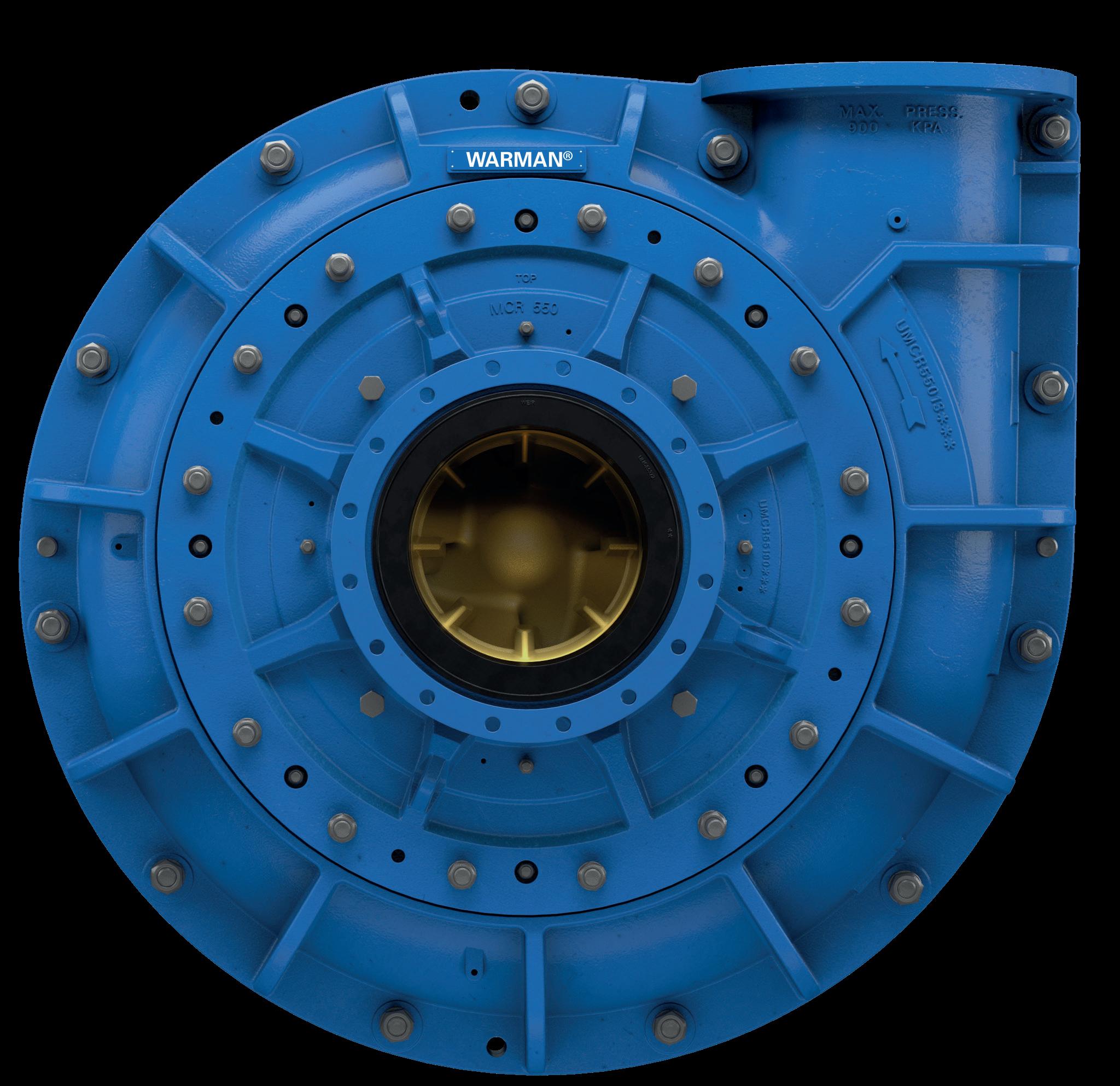

“ENERGY SAVINGS REPORTED IN THE RANGE OF 25% TO 60% ARE VERY ENCOURAGING AS THEY INDICATE THAT POTENTIALLY HALF OF THE ENERGY SPENT FOR VENTILATION COULD BE SAVED.” —


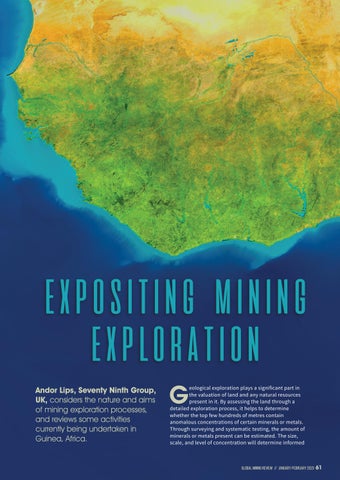


“ENERGY SAVINGS REPORTED IN THE RANGE OF 25% TO 60% ARE VERY ENCOURAGING AS THEY INDICATE THAT POTENTIALLY HALF OF THE ENERGY SPENT FOR VENTILATION COULD BE SAVED.” —


03 Guest Comment
05 World News

10 The Indispensable Role Of Mining And Metals

Ian Sanders, Global Mining & Metals Leader, Deloitte Global, outlines 10 trends that will shape the mining and metals industry in 2023 and beyond.
18 Testing, Timing, And Accuracy
Pat Lim and Kevin Hartley, Dyno Nobel Americas, USA, use a case study to illustrate the benefits of electronic delay timing as an initiation system in mining projects.
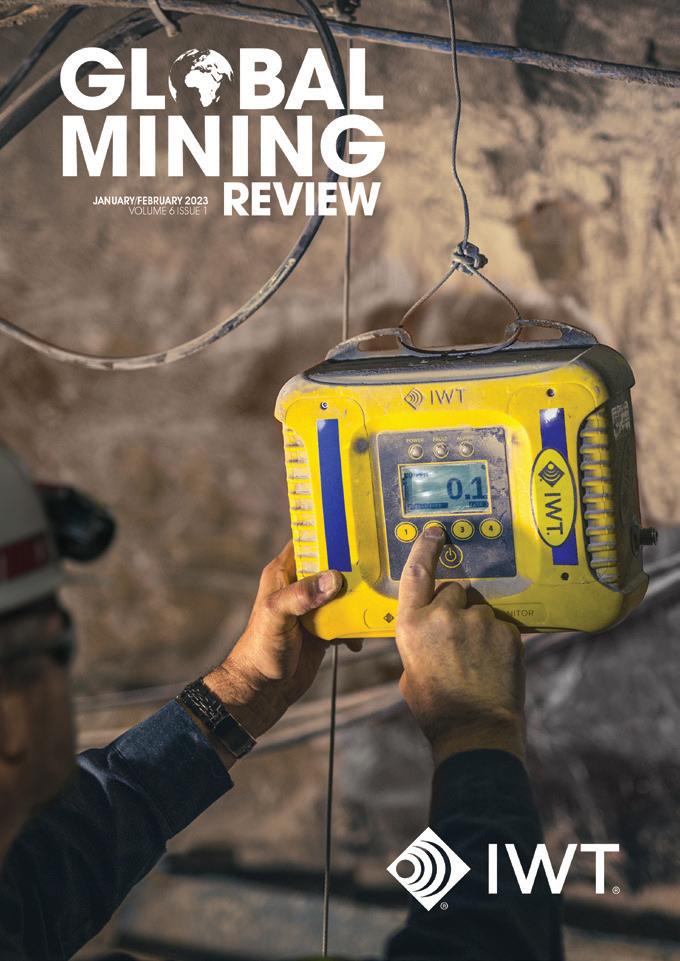
22 Improving Operations Bit By Bit
Jorge Leal, Robit, Finland, reviews the features and uses of a new drill bit and its role in improving the productivity and sustainability of mining operations.
26 Underground Mining’s Digital Transformation
Emily Esterson, E-Squared Editorial, and Innovative Wireless Technologies, Inc., USA, discusses how digital technologies have become increasingly important in improving both the safety and productivity of underground mines.
31 Driving Sustainability With A Digital Roadmap
Martin Provencher and Ben Connolly, AVEVA, detail the importance of digital technologies in improving both the profitability and sustainability of mining operations.
37 Extinguishing Fire Risks
Holger Pfriem, Dafo Vehicle Fire Protection, Sweden, analyses the different fire risks surrounding the use of heavy equipment at mines, and discusses how mine operators can act to minimise downtime and optimise safety.
41 Ventilation On Demand
Joe Bacon and Shivan Singh, Becker Mining, Canada, examine the role of air ventilation systems in underground mines and why they are essential for mine safety.
44 The Right Ingredients For Tailings Management
Amanda Adams and Anna Norris, Stantec, USA, explore how the right mixture of EORs, technologies, and ESG practices can be crucial in developing successful tailings management.
48 No Belt, No Battery, No Problem
Matt Youngblood, Railveyor, Canada, explains how a fixed, autonomous, and electrically controlled haulage system is preferable to a typical conveyor system for transporting materials in mines.
52 A Bigger Price To Pay
Leslie David, Conveyor Belt Specialist, illustrates how seemingly identical specifications of conveyor belts can differ in price from one producer to another, and why there is invariably a much bigger price to pay in the longer term.
57 Navigating The Dual Challenge With Technology
Jeannette McGill, AspenTech, Australia, highlights the importance of digital technologies in combatting the operational hurdles facing the mining industry today.
61 Expositing Mining Exploration
Andor Lips, Seventy Ninth Group, UK, considers the nature and aims of mining exploration processes, and reviews some activities currently being undertaken in Guinea, Africa.
65 Powered By Technology
Ron Berryman, on behalf of Loadrite, Australia, evaluates the role of technology as an important ingredient in the success of the Vulcan mine, Queensland’s newest premium hard coking coal mine.
IWT is the leading provider of underground wireless communications for voice, tracking, gas monitoring, and analytics using data from machines and sensors – including IWT’s battery operated Wireless Gas Monitors (pictured). IWT’s reliable network is easy to install and maintain, while also being scalable and expandable. Learn more at iwtwireless.com.
Our expertise goes beyond the bench with a mindset focused on outcome-based fragmentation. Together, we can help you maximize your return on investment through solutions that reduce your total cost of operations while increasing your productivity.
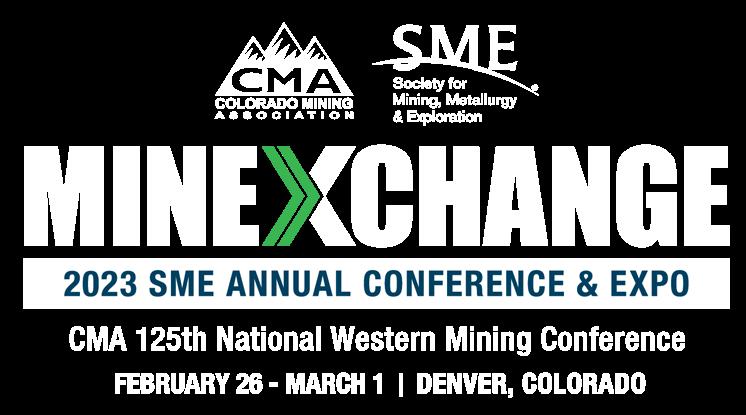
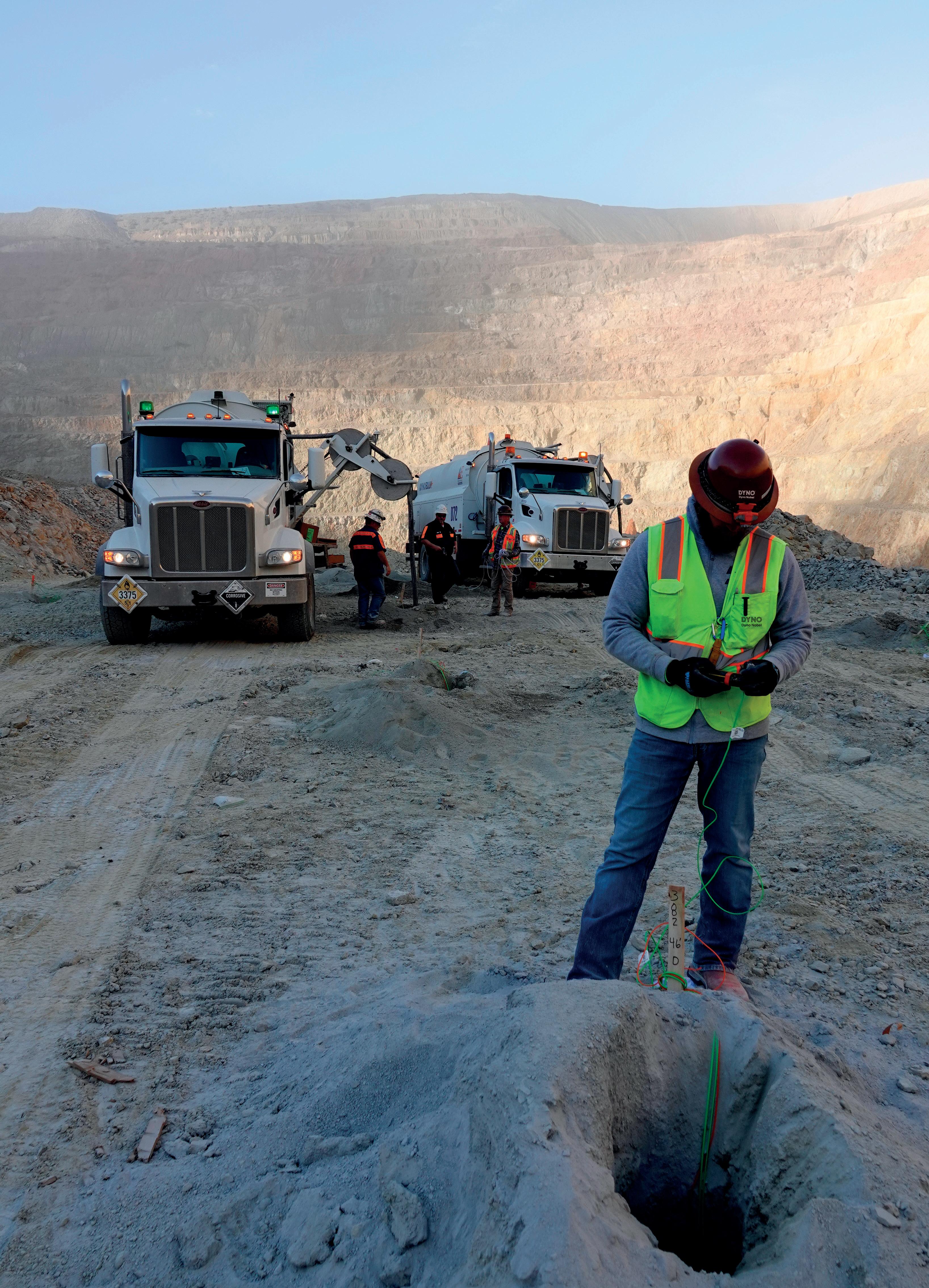
After a turbulent year for commodities, 2023 is set to be a transformative and pivotal year for the sector; with geopolitical uncertainty, supply chain disruption, and increasing momentum towards the green transition driving the need for change. This is against a dismal economic backdrop; with soaring inflation leading to higher commodity prices, as well as higher operating costs and capital expenditures. Challenges and opportunities will see some countries, mining players, projects and initiatives thrive, while others may languish.
MANAGING EDITOR
James Little james.little@globalminingreview.com
SENIOR EDITOR
Callum O’Reilly callum.oreilly@globalminingreview.com
EDITOR
Will Owen will.owen@globalminingreview.com

EDITORIAL ASSISTANT
Joe Toft joe.toft@globalminingreview.com
SALES DIRECTOR
Rod Hardy rod.hardy@globalminingreview.com
SALES MANAGER
Ryan Freeman ryan.freeman@globalminingreview.com
PRODUCTION MANAGER
Kyla Waller kyla.waller@globalminingreview.com
ADMINISTRATION MANAGER
Laura White laura.white@globalminingreview.com
EVENTS MANAGER
Louise Cameron louise.cameron@globalminingreview.com
EVENTS COORDINATOR
Stirling Viljoen stirling.viljoen@globalminingreview.com
DIGITAL ADMINISTRATOR
Leah Jones leah.jones@globalminingreview.com
DIGITAL CONTENT ASSISTANT
Merili Jurivete merili.jurivete@globalminingreview.com
Environmental, social, and governance (ESG) will continue to feature prominently and grow in complexity for the industry as stakeholder expectations increase. As more mining companies take active steps to respond to and address ESG-related issues, while avoiding greenwashing allegations, the ‘how’ will be as important as ‘what’ they are developing and implementing. The demand for quantifiable results will only intensify as stricter regulations come into force.

The geopolitical tensions and resource nationalism we saw in 2022 will still play an influential role in mining demand and supply. Security threats and conflicts are rising as the economic outlook worsens. Miners will need to develop a deeper understanding of the impact geopolitics and regional threats will have on strategy, personnel and operations, in order to manage, minimise, and prevent risks.
Resource nationalism will only set to deepen, especially in the battery metals and minerals market, as we push towards a green transition and a low-carbon economy. As countries try to recoup pandemic debt, rises in taxes and royalties, together with changes in mining policies and ownership agreements, will mean tensions between companies and governments are more likely. The line between resource nationalism and legitimate national interest is not always easy to draw, and with several countries going to elections this year – including key resource rich African countries such as Nigeria, Mauritania, Zimbabwe, and Democratic Republic of Congo – politicians may start positioning themselves to secure greater benefits from natural resource wealth to improve livelihoods and placate voters.
The pace, trends, and demand vs price of critical raw metals and minerals needed to accelerate the global energy transition will remain top of mind in 2023 for explorers and producers, as they assess the opportunities and risks and get in front of the energy transition agenda. Finding and mining the required metals and minerals is getting harder and more expensive. There will be a heightened sense of international competition to secure resources which, in turn, may fuel protectionist rhetoric.
As demand for critical minerals grows, factors such as disrupted supply chains, high geographical concentration of production, long project lead times, and growing scrutiny of environmental and social performance will come into play. Slowing electric vehicle production has recently been one of the affected industries, tempering demand for battery metals nickel, cobalt and lithium, despite the global push for electrification of the mobility sector. China’s zero COVID-19 policy may result in further disruptions to PEV-related battery metal supply chains, which will affect global markets. The IEA estimates that soaring EV battery demand will require 50 new lithium projects, 60 nickel mines, and 17 cobalt developments by 2030.1 Unfortunately, current investment is nowhere near the scale required, signalling there will be more roadblocks ahead.
Finally, like all industries, talent attraction and retention will be a growing challenge. For the mining sector, the problem is particularly acute given the older workforce trend. Mining companies will need to adapt their workforce attraction, retention and development strategies, and ensure they reflect the changing needs and expectations of today’s workforce to succeed in the war for talent.
Tough times indeed, but set to be transformational for the industry.
References:
1. DEMPSEY, H., and CAMPBELL, P., ‘Carmakers switch to direct deals with miners to power electric vehicles’, Financial Times, (15 November 2022), www.ft.com/content/a8e0f1bb-f69a-4a77-b762-02f957e47f5c
UK t: +44 (0)1252 718999 // w: www.globalminingreview.com

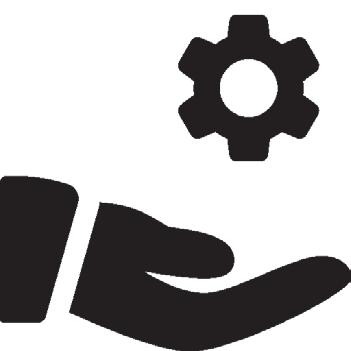









Generation PGM Inc.’s Marathon Palladium-Copper project has passed an important regulatory milestone. The project, a platinum group metals (PGM) and copper mine and milling operation near the Town of Marathon in Northwestern Ontario, recently received approval from the federal and provincial governments’ coordinated environmental approval (EA) process, under the Canadian Environmental Assessment Act and Ontario’s Environmental Assessment Act.
The Marathon project is the first mining project in Ontario to be assessed through a joint review panel pursuant to the Canada-Ontario Agreement on Environmental Assessment Cooperation (2004). Generation PGM is a wholly owned subsidiary of Generation Mining.
The Marathon project will help Canada and Ontario meet the demand for responsibly sourced critical minerals, as identified in Canada’s critical minerals strategy and Ontario’s critical minerals strategy 2022 – 2027.

Stantec led and coordinated the preparation of the environmental impact statement (EIS) addendum and various technical reports as part of a collaboration with Generation PGM and other consultants. The company’s experts completed technical assessments for the EIS addendum, responded to information requests from the panel, and shared expertise at the public hearing held by the joint review panel.
Stantec’s discipline leads presented their conclusions and recommendations regarding the project as expert witnesses at the hearing in the areas of hydrology, hydrogeology, air quality, greenhouse gases, acoustics, and socio-economics.
The company coordinated the preparation of the EIS addendum based on updates to existing baseline conditions, changes to regulatory standards, and refinements to the project relative to the original EIS – which was submitted in 2012 and supported by True Grit Engineering Ltd. (acquired by Stantec in 2018). Generation PGM also retained Stantec to support consultation with agencies and Indigenous communities, consider comments and traditional knowledge, and scope follow-up programmes and environmental management plans
Stantec’s Chris Powell, Senior Environmental Planner, said: “This is a big win for the Marathon project, and Stantec is thrilled to have been a part of this process to leverage our expertise in mining and environmental assessment for Generation PGM in their efforts to proceed to the next phase of the project. This critical minerals project will provide a lot of opportunity for the region and benefits to the local Indigenous community, Biigtigong Nishnaabeg. I’m proud of our team for the hard work and dedication to deliver on such an important project.”
The joint review panel’s public review process included 10 months of written filings and a public hearing consisting of 19 oral hearing days. The panel received input from more than 50 individuals, including representatives from Indigenous groups, government agencies, and interest groups. This joint review panel process was among the largest regulatory hearings of 2022.
In order to secure the panel’s approval, Generation PGM and Stantec collaborated with experts from Ecometrix, Knight-Piésold, Northern Bioscience and WSP, with legal support from Cassels.
Mundoro Capital Inc. has announced it has entered into a definitive agreement with a wholly owned subsidiary of BHP Group Ltd, which provides BHP with the right to earn-in to three exploration areas that Mundoro holds in the Timok region
Teo Dechev, Chief Executive Officer, President and Director of Mundoro, commented: “Mundoro welcomes BHP as an exploration partner that recognises the potential of further exploration in the western Tethyan Belt. We are looking forward to commencing field exploration at the Timok properties in order
to advance targeting and testing of undercover, and near-surface, porphyry and related epithermal systems in the Timok region of eastern Serbia.”
“Mundoro has established a decade-long history of generative and early-stage exploration in Serbia and Bulgaria. Partner funded exploration programmes along with Mundoro’s generative programmes have invested over CAN$30 million of exploration expenditures, which bring value to stakeholders in the communities where we operate, to our partners, and to our shareholders.”
Mines and Money Miami 2023
23 – 24 February 2023
Miami, USA
https://minesandmoney.com/americas
MINEXCHANGE 2023 SME Annual Conference & Expo
26 February – 01 March 2023
Denver, USA
www.smeannualconference.com
PDAC 2023
05 – 08 March 2023
Toronto, Canada
www.pdac.ca/convention
CONEXPO-CON/AGG 2023
14 – 18 March 2023
Las Vegas, USA
www.conexpoconagg.com/conexpo-conagg-construction-trade-show
Expomin
24 – 27 April 2023
Santiago, Chile
www.expomin.cl
Mines and Money Connect: London 2023
25 – 26 April 2023
London, UK
https://minesandmoney.com/connect
CIMTL23 Convention and EXPO
30 April – 03 May 2023
Montreal, Canada https://convention.cim.org
China Coal & Mining Expo 2023
25 – 28 October 2023
Beijing, China
www.chinaminingcoal.com
To stay informed about upcoming industry events, visit Global Mining Review’s events page: www.globalminingreview.com/events
Thiess has announced a two-year extension to its first US contract for mining services at a hard rock mine in Colorado.
The contract, which commenced in 2021, will now continue through to the end of 2024. Under the extension, Thiess will continue providing integrated mining services through an alliance-style contract.

Michael Wright, Thiess Executive Chair and CEO, commented: “We are very pleased our client has awarded us this extension, which serves as recognition of our team’s ability to deliver innovative mining solutions and create lasting value for our clients across diverse commodities and geographies. We look forward to further collaborating with our client to safely position their operation for optimal efficiency and productivity, as we expand our presence in North America.”
Darrell White, Executive General Manager – Americas, said: “Our North American team is motivated by the confidence that our client has shown in Thiess, by extending and expanding the integration of our joint mining operations. We’re thrilled to have the opportunity to assist our client in sustainably delivering a resource that is critical to the US and global economies.”
Sumitomo Metal Mining Co., Ltd.’s Hishikari mine has become the first Japanese underground mine to utilise automated loading technology from Sandvik. AutoMine® will help enable increased productivity, improved safety and better cost control, while bringing digital transformation of the mining process closer and increasing operational transparency.
The Hishikari mine, located in northern Kagoshima Prefecture, boasts a high grade of around 20 g of gold per tonne of ore, and has been producing gold steadily since 1985. Hishikari is the only gold mine in Japan that still operates on a commercial scale today. The mine, which commissioned AutoMine Lite on a Toro™ LH307 underground loader in December 2022 to operate in its small cross-section tunnels, will utilise the system in production areas to enhance safety, accelerate underground efficiency, and improve productivity.
Hidenobu Yabu, Manager of Mining Section for the Hishikari mine, commented: “Sandvik did a great job commissioning and training our engineers and operators on the AutoMine system. Our goal is to become a corporate enterprise that produces resources with advanced technology by 2030. By implementing advanced technology and innovation, we aim to reduce costs, increase productivity and improve safety. Our commitment to sustainability is reflected in our long-term focus on the Hishikari mine.”
Jan-Douwe Wansink, Business Line Manager Automation for Sales Area Southeast Asia at Sandvik Mining and Rock Solutions, said: “We are excited to partner with the Hishikari mine on this project and look forward to contributing to the operation’s sustainability and productivity. This is an exciting opportunity for the Hishikari Mine and Sandvik.”






Nothing should stand in the way of your productivity – least of all the materials you move. With our compact Hägglunds direct drive systems, you can adapt easily to the job at hand, taking advantage of full torque at an infinite range of speeds. And should an overload try to stop you, the drives’ low moment of inertia and quick response will keep your machines protected. We’ll support you too, with an agile global network and smart connectivity to bring you peace of mind. Driven to the core.
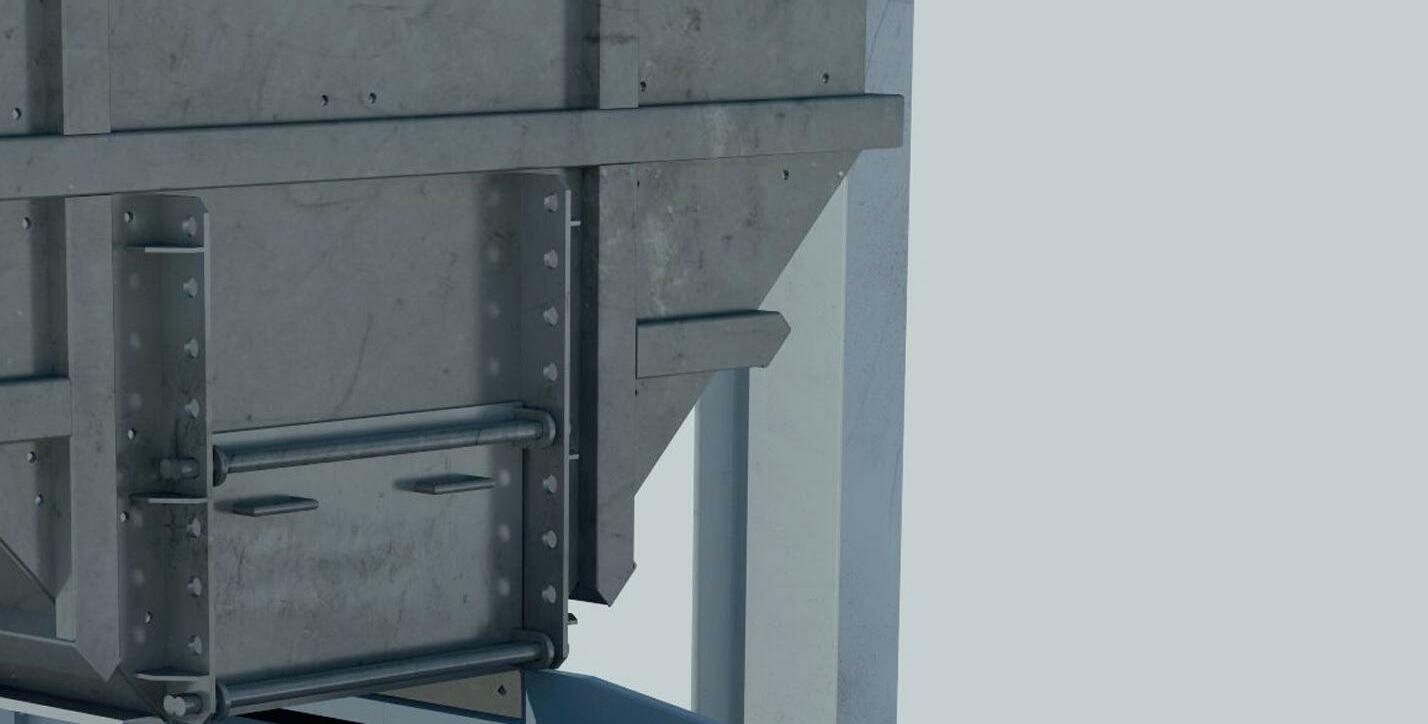
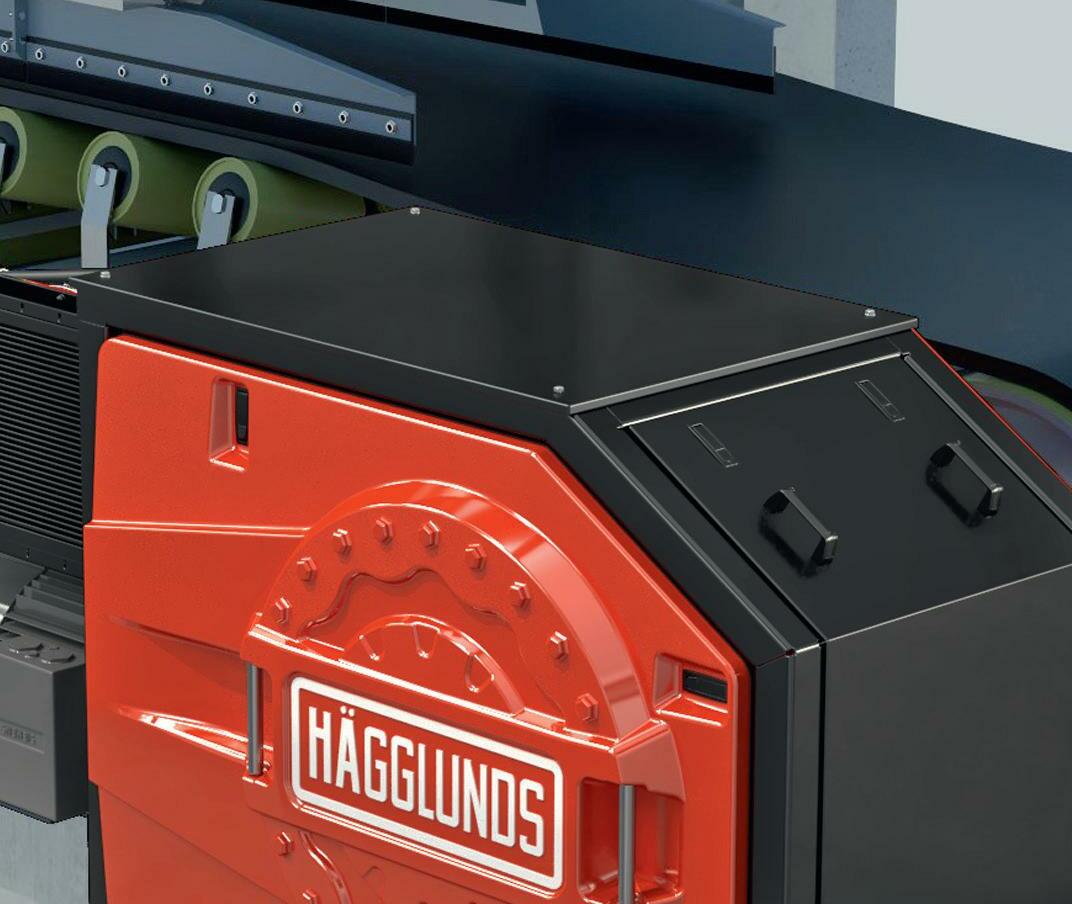



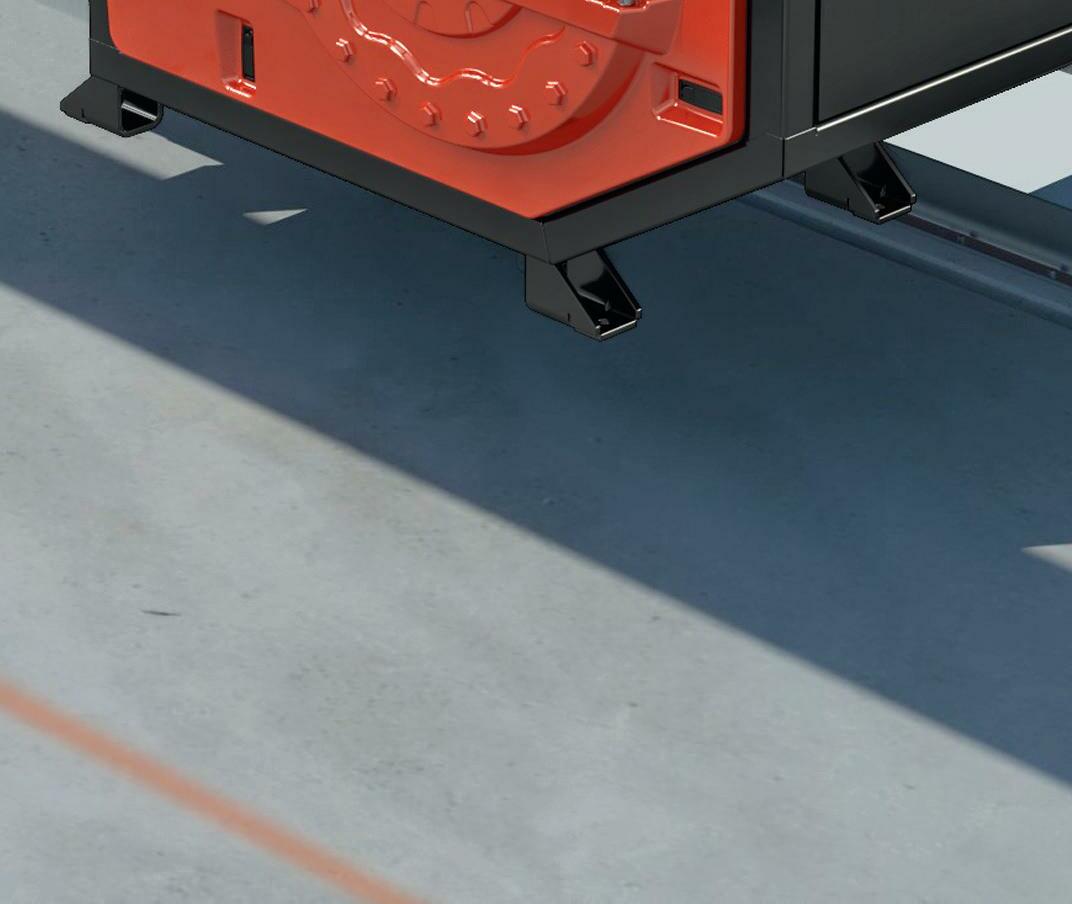
COME MEET US AT SME, BOOTH 429



Hägglunds is a brand of Rexroth. www.hagglunds.com

Draslovka Holding a.s., a Czech family-owned global leader in CN-based specialty chemicals, including sustainable solutions for the metal mining industry, has announced that its glycine leaching technology has been selected to be part of OZ Minerals’ Think & Act Differently (TAD) incubator and Waste-to-Value Challenge.
The challenge sees Rio Tinto and Boliden working in collaboration with OZ Minerals to eliminate, minimise, reuse, or find new value in mine tailings and ultimately reduce the global carbon footprint of the mining industry.
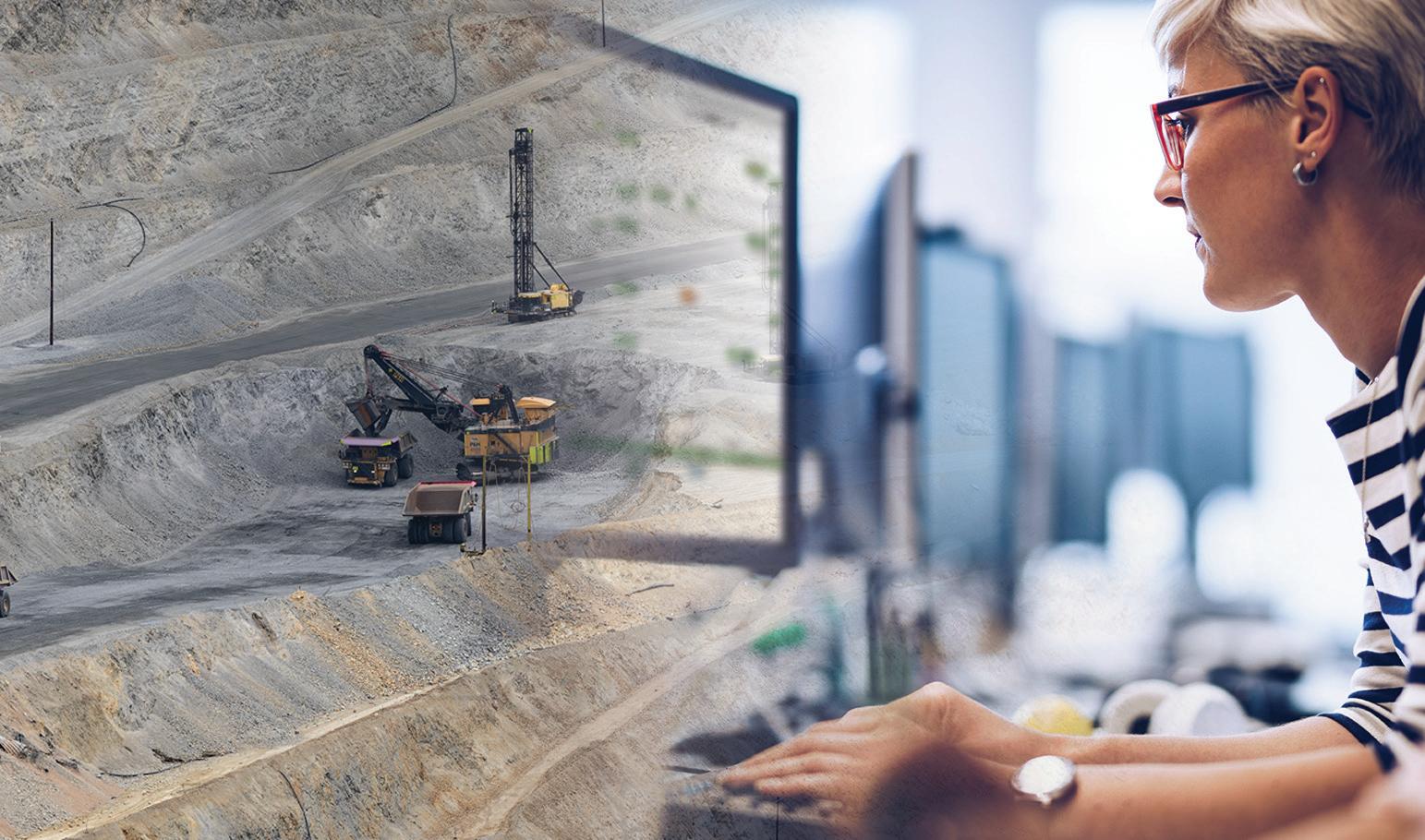

The Waste-to-Value Challenge aims to unlock innovative technologies for managing tailings, helping the mining industry to reduce risk while extracting more of the materials the world needs from what was previously regarded as waste for the energy transition at large. Benefits that the initiative hopes to deliver include lower emissions and reduced waste.
Draslovka offers a range of sustainable solutions to the global mining industry, and its glycine leaching technology (branded GlyLeachTM and GlyCat™ Processes) represents an environmentally friendly alternative to traditional acid and cyanide leaching. Due to its selectivity over gangue minerals and the recyclability of glycine, it enables the recovery of both base and precious metals from lower grade resources such as tailings. This leads to a more sustainable production process and improved economics that are needed to close the looming critical metal supply deficit.
Ivor Bryan, Draslovka’s Mining Innovation Director, said: “I am proud that Draslovka has been invited to participate in the Waste-to-Value Challenge with forward looking companies that understand the need to reimagine solutions for the mining industry. This aligns with our ambition to become the leading supplier for innovative and sustainable solutions for the wider mining industry.”
SPC Nickel Corp. have announced that the company has entered into an agreement with Vale Canada Ltd designed to consolidate and unlock the full potential of the adjacent and contiguous West Graham and Crean Hill 3 nickel-copper deposits, located in the Sudbury Mining Camp
The agreement grants SPC Nickel the right to acquire a 100% interest in the surface and mineral rights of the Crean Hill 3 Property as therein described. In consideration, certain rights and royalties will be extended to Vale across the combined project.
SPC’s CEO, Grant Mourre, commented on the agreement: “The signing of this agreement with Vale represents a transformative growth opportunity for SPC Nickel and its shareholders. Over the past 12 months we have been working closely with Vale to develop an agreement that is mutually beneficial for both parties. The consolidated West Graham and Crean Hill 3 deposits gives SPC Nickel, as operator, the ability to optimise synergies during the exploration, development, and production stages of the project. We are very excited about the opportunities that this agreement brings to SPC Nickel and are looking forward to getting drills turning on the property in 2023.”
The West Graham and Crean Hill 3 deposits constitute the eastern and western contiguous portions of a large near-surface nickel-copper sulfide deposit at the base of the Sudbury Igneous Complex. The properties are located adjacent to the past-producing Lockerby and Crean Hill mines, approximately 20 km southwest of the City of Sudbury, Ontario, and Vale’s Clarabelle Mill. Haul roads and high-voltage electrical power infrastructure are present at the property boundary.
Commenting on the Crean Hill 3 Property, Mourre said: “The ability to consolidate the West Graham and Crean Hill 3 properties into one contiguous land package represents an amazing opportunity for the company. With the addition of the Crean Hill 3 Property, we see a path for SPC Nickel to significantly grow the West Graham Deposit into a high-quality nickel-copper asset in one of the top nickel mining camps in the world. Our recently completed drill programme at West Graham has provided the technical team with a firm understanding of the types of mineralisation we expect to define on the Crean Hill 3 Property, and, more importantly, the controls on mineralisation that we expect to guide us to higher-grade opportunities across the combined project.”




From civil infrastructure to transport, technology to agriculture, the products of the mining and metals industry are the building blocks upon which the global economy is built. The industry also plays an important role in helping to mitigate climate change, eradicate poverty, and restore damaged environments around the globe.
However, while everyone wants the benefits these materials provide and the global population which depends upon them is growing exponentially, opposition to new projects has seldom been greater. Despite rapid improvements in safety, as well as the industry’s environmental, social, and governance (ESG) performance over the past few decades, the mining and metals industry is working diligently and harder than ever in shifting the image that many perceive surrounds it.
The reality provides a clear contrast. Today, the sector is innovating in autonomous technologies and remote operations. Companies are collaborating up and down the value chain to close the loop on critical metals, design waste out of the system, and optimise the quality of
metals for low-carbon, recyclable products. The industry is also adopting some leading environmental practices and working with Indigenous communities to generate shared value.
The mining and metals sector is a vibrant and prospect-filled place to work. The digital transformation of operations has created many new and exciting data-centred roles. For those who want their work to have a tangible impact on society and the environment, there are few better places to be.
Changing perceptions of mining by putting people and natural capital foremost; designing organisations and products for circularity; creating safer, more respectful places of work; and collaborating to decarbonise value chains is already, and will continue to be, key to attracting talent and accelerating the industry’s transformation.
That is why, in 2023, Deloitte Global’s annual mining and metals report, ‘Tracking the Trends’, focuses on the indispensable role of the industry. The following are 10 trends expected to impact the industry over the next 12 – 18 months.

Ian Sanders, Global Mining & Metals Leader, Deloitte Global, outlines 10 trends that will shape the mining and metals industry in 2023 and beyond.
Access to capital is an important factor in organisational longevity, and the metrics upon which mining and metals investors base their decisions are changing. A more holistic approach may be needed and, subsequently, a rapidly growing area of focus is how companies interact with nature.
Impacts on nature will affect most companies over the next decade. The World Economic Forum estimates that, today, over half of the global gross domestic product (GDP) of US$44 trillion is exposed to risks from nature loss. 1 Building capability and understanding will be central to businesses’ ability to guard against these threats and capitalise upon associated opportunities.
Making greater use of nature-based solutions (NbS) is a good example. NbS can be a powerful tool for the restoration of landscapes impacted by mining. For instance, approximately 650 km of the Rio Doce Basin in Brazil was damaged by the Fundão tailings dam collapse in 2015. In 2022, the Rio Doce Panel outlined an integrated vision for restoration of the region. NbS’ will play an important role in this, including the creation of ecological corridors, filter gardens and wetlands, and the use of natural structures for sewage treatment. 2
Some companies are going even deeper, exploring how value chains interact with and impact upon nature holistically. For example, the International Union for Conservation of Nature (IUCN) is supporting Anglo American in developing and implementing strategic corporate commitments toward sustainable natural resource management that contribute to global societal goals. 3
Going forward, mining and metals companies that have an integrated and systematic approach to nature as part of their broader ESG strategy will find they may have a significant advantage in accessing capital, insurance, talent, and securing a social license to operate.
Circular economy (CE) presents a more sustainable alternative to the linear take-make-waste model upon which the global economy is currently based. The mining and metals industry is well progressed in unconscious circularity; it has a strong history of waste recycling and water reuse, and the creation of products from tailings is fast becoming a reality. However, these types of initiatives are driven by liability, regulation and resource scarcity, rather than value creation. When it comes to conscious circularity and shifting mindsets around value and materials reuse, there is still work to be done.
Viewing business activities and operations as part of an interconnected ecosystem allows investment in the appropriate innovations across portfolios. This gives companies a better understanding of the risks and opportunities surrounding them, and allows them to create meaningful value in the areas where they operate. 4 This knowledge is important in building resilience at
many levels of an organisation, in attracting new sources of investment and entering new markets.
While systematic change is daunting, rethinking the flow of value through the metals and minerals ecosystem is one of the biggest opportunities this sector has to positively influence sustainable development.
Value chain decarbonisation is one of the biggest challenges that miners and metal producers face.
According to research by Shell and Deloitte Netherlands in the recent report, ‘Decarbonizing Steel: Forging New Paths Together’, the global steel industry generates approximately 10% of global CO 2 emissions, which could increase as demand is expected to rise 10 – 35% by 2050, compared to 2019. 5 However, because the steel market is relatively concentrated, there are significant opportunities for decarbonisation through coordinated efforts in cleantech.
For example, in 2016, Swedish miner LKAB teamed up with SSAB and Vattenfall to form the HYBRIT initiative, which aims to create fossil-free steel at an industrial scale by 2026. This is expected to reduce 90% of emissions from steelmaking, and SSAB’s transition to it will reduce Sweden’s CO 2 emissions by 10% and Finland’s by 7%. 6 Work so far has been successful and, in December 2022, Epiroc unveiled a prototype battery-electric mine truck created using SSAB’s fossil-free steel. 7
Antofagasta Plc also has an interesting approach. The company is evaluating green hydrogen as a potential fuel for its locomotive fleet, which services various mines in the Antofagasta region. It is also assessing HyEx green ammonia to power its trains, haulage trucks, and ships. 8 Every organisation has a unique Scope 3 emissions profile and should select investments to create an optimised pathway to net-zero. In working together, organisations can meet their climate change mitigation goals faster, create new types of value, and secure off-take agreements in what is fast becoming a buyer’s market.
In mining and metals, the ESG revolution has proven a catalyst for renewed collaborative innovation. Companies up and down the value chain are joining forces to tackle problems, such as decarbonisation, which exceed the capability of any one organisation.
While traditional business ecosystems continue to bring forth valuable innovations, what is interesting is the way in which this model is evolving to deliver different types of value for different players. The aim is to overcome some of the stumbling blocks that have prevented certain innovations from reaching their full potential thus far.
One example of a next-generation innovation ecosystem is the Charge On Innovation Challenge.
Since the inception of our patented MMD Sizer over 40 years ago, we have been committed to delivering systems and solutions that leads the way on productivity, reliability, safety and efficiency.
Unlike conventional crushers, the Sizer can define the finished product size in all three dimensions whilst keeping dust and fines generation to a minimum. Sizers are utilised in primary, secondary or tertiary applications and offer some of the lowest power consumption per tonne of any crushing system.
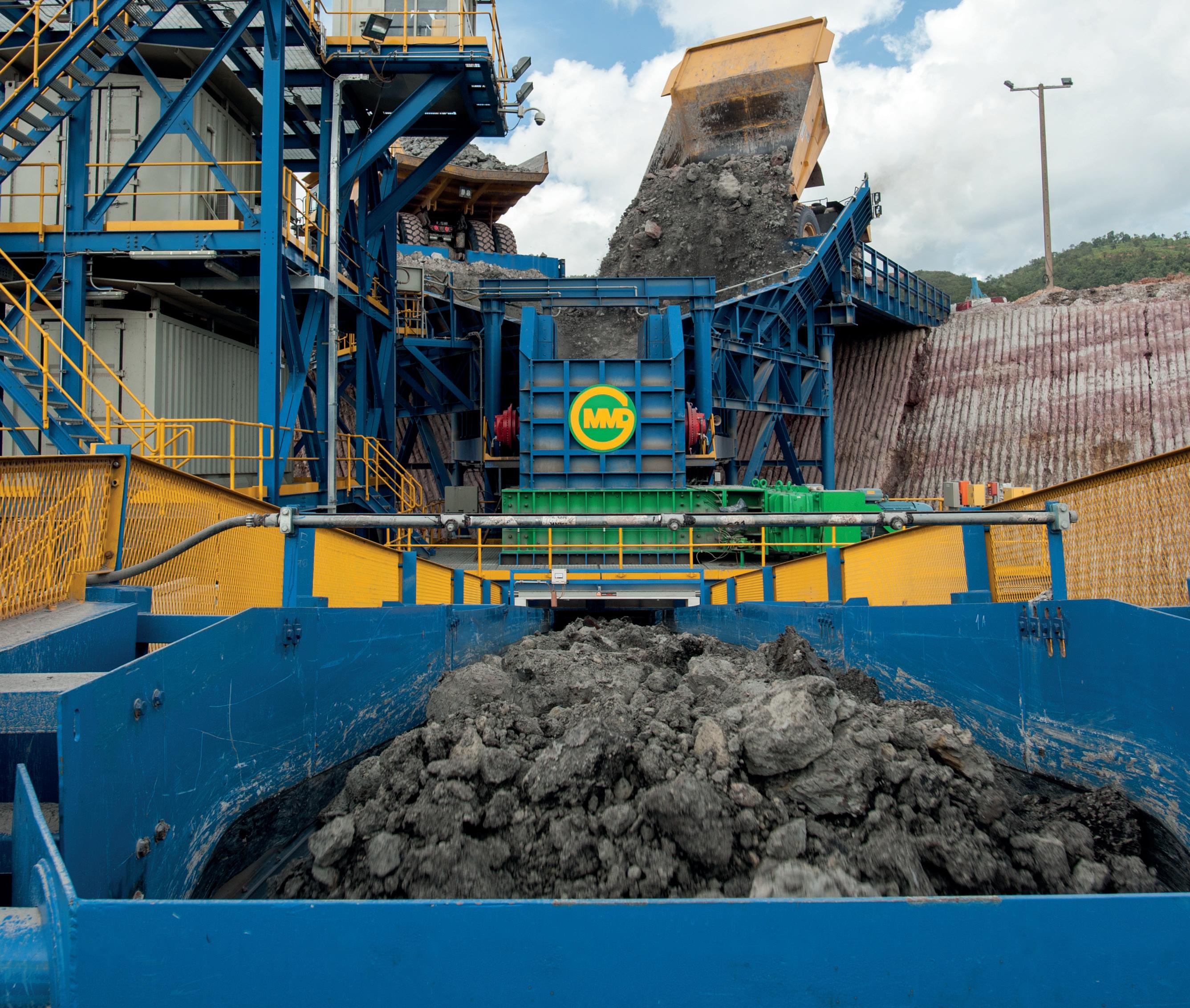
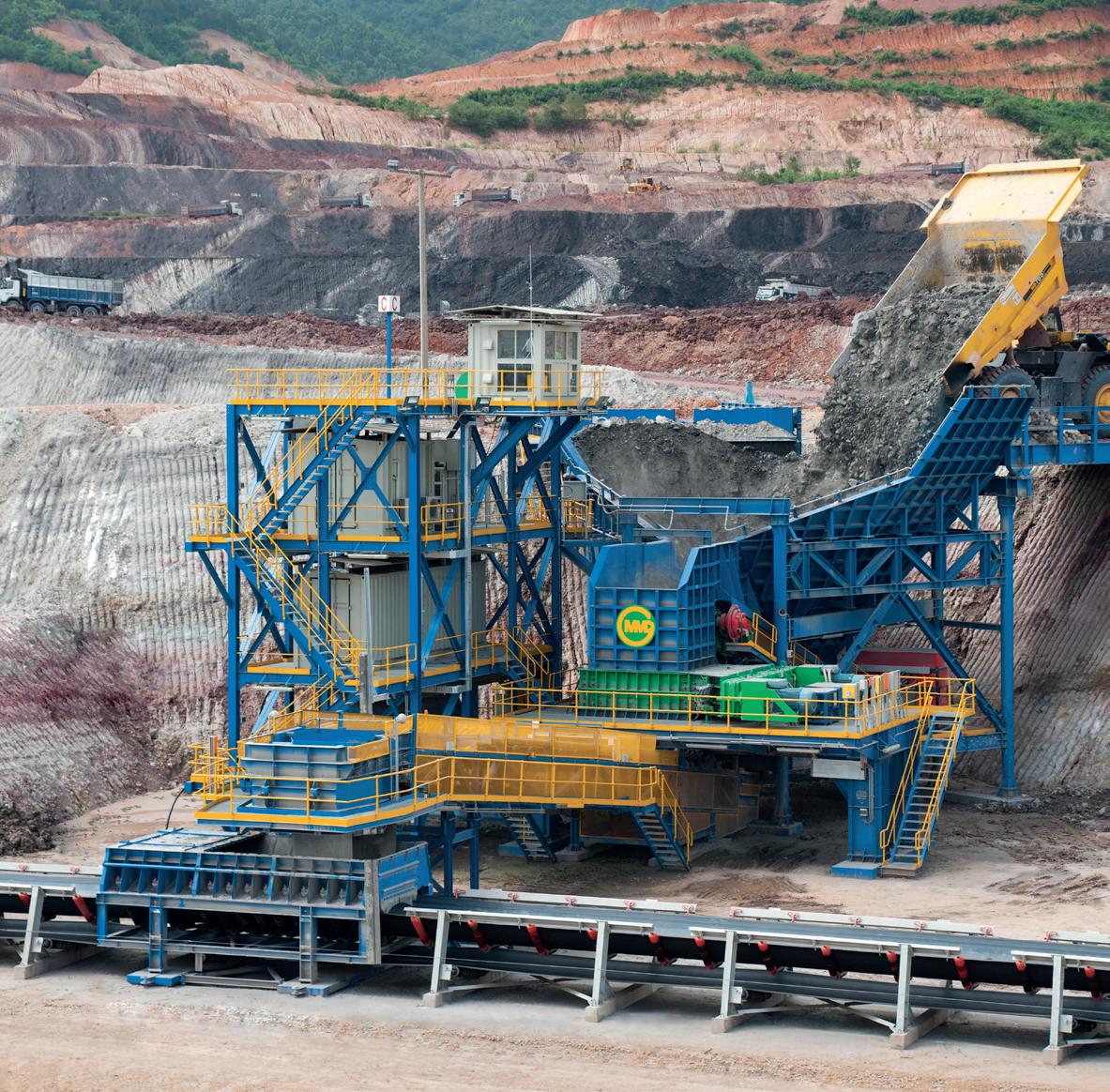
The Sizer is also perfectly suited to handling a wide variety of materials –from wet and sticky to hard and abrasive, either separately or combined.
MMD remains a group of committed and experienced professionals who have the skills and knowledge to provide dedicated after-sales service and technical support via a network of local offices. Discover how we can deliver the complete sizing solution for your specific needs.
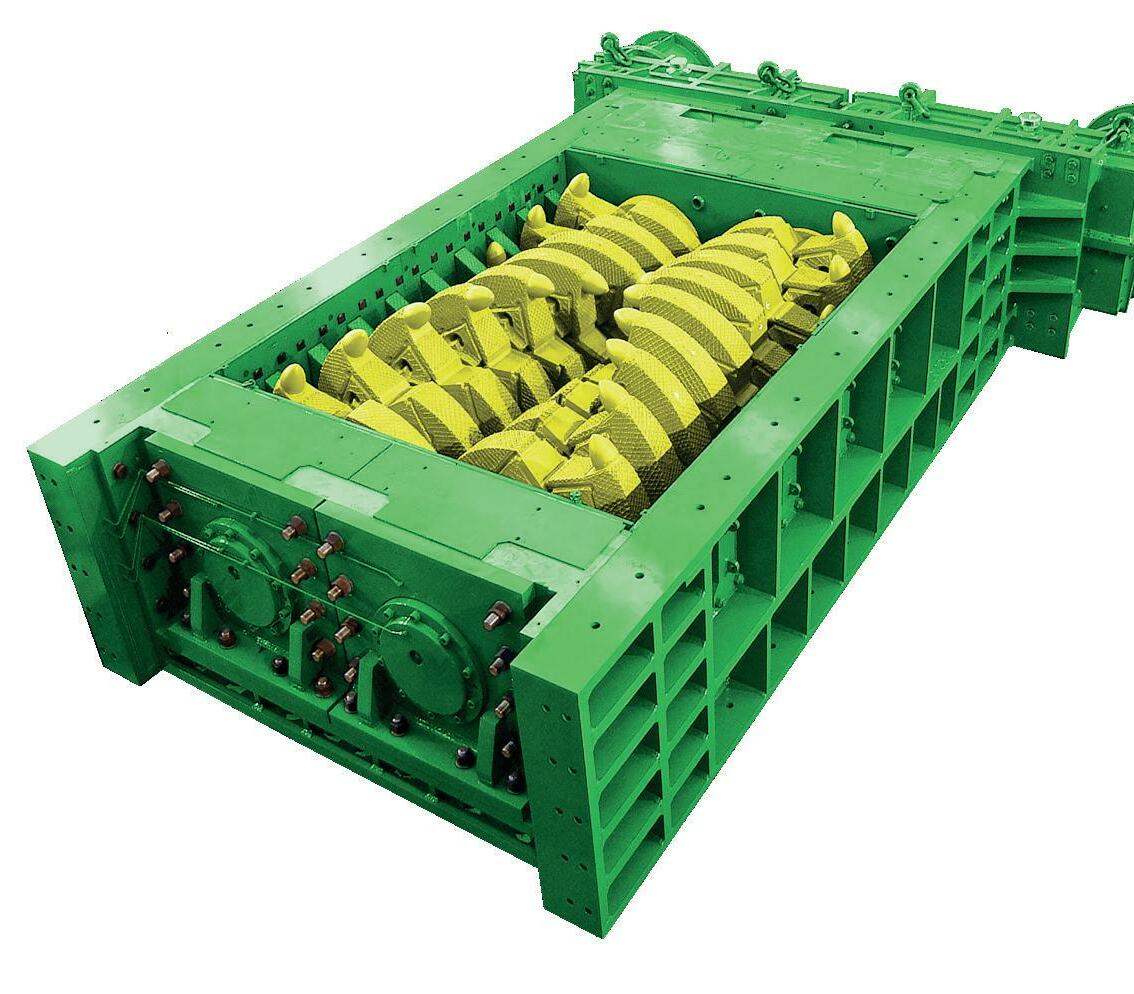
The crowdsourcing project was founded in 2021 by BHP, Rio Tinto, and Vale to accelerate commercialisation of electrical charging solutions for large mining trucks. 9 What makes Charge On different is the level of due diligence that the patron companies performed as part of the initial assessment to de-risk the adoption process, as well as the structures in place, including commercialisation opportunities with original equipment manufacturers (OEMs) and venture capital, to progress the winning entries. 10
Some tier one mining companies have gone a step further and created venture capital divisions to collaborate with innovative start-ups. For example, in August 2022, Vale announced the creation of a venture capital fund to create new business opportunities and innovative technologies to incorporate into its operations. 11
Collaborative innovation efforts, such as these, are the future of mining and metals innovation. The key lies in determining which approaches best suit each organisation to incubate, accelerate, and capture the value of different innovations.
In today’s interconnected world, mining and metals organisations depend upon their supply chains for many things, from components within their products, to the services needed to run their operations. This interdependence makes supply chain security and risk transformation a top priority.
Recent concerns – including high transportation and logistical costs, labour shortages, and increased prices of materials and components – have driven many companies to better understand their risk exposure through supply chains. Most are now diversifying their networks using near or off shoring tactics, in order to help ensure the sustainability of their operations. Third-party risk management (TPRM) evaluations – including strategic brand and risk evaluation, as well as cyber evaluations – are also becoming commonplace for suppliers.
Additionally, cyber-attacks are on the rise as criminals look for any weaknesses in a company’s defences. In addition to boosting supply-chain resilience, continuous monitoring of third-party suppliers’ cyber stance can speed up and improve compliance with operational technology (OT) regulations.
Although operational optimisation is a constant endeavour in mining and metals, next-level performance may require a more integrated and dynamic approach; one that considers the impact of new energy sources, extraction methods, and processes holistically. This is where integrated systems thinking, design, and modelling can add value.
Some mining and metals companies are already using systems-based advanced simulation and modelling technologies to assess different plans and designs at an operational level. However, these tools can also be used to identify levers across the value chain.
For instance, OZ Minerals’ Scalable & Adaptable challenge reimagined mine design using flexible and modular solutions. 12 Inspire Resources teamed up with OZ Minerals and used a collaborative approach, applying whole-system models that allowed complex interactions between elements to be revealed. The team was able to prove their hypothesis that an end-to-end simulation of the value chain can quantify the value created through flexibility, for example, by simulating management decisions in response to variable renewable power generation and volatile metal prices.
By thinking differently, mining and metals companies have a chance to generate new types of value, to see the full benefit of future technologies and energy sources, and to shape a better future for people and the planet.
The mining and metals sector continues to see unprecedented changes that are impacting its workforce and ways of working. The effects of skills shortages and the global shift toward purposeful employment are being compounded by calls for greater diversity, equity and inclusion, and efforts to rebrand the industry in line with responsible sourcing and the energy transition.
A labour landscape of this complexity can only be navigated with vulnerability. The nature of these challenges requires mining and metals leaders to accept that this is not a single-organisation challenge, but one which requires an industry-wide solution and collaboration against the backdrop of a complex stakeholder environment.
For example, bringing together private bodies and some leading thinkers in government and academia as a consortium focused on one vision – such as accelerating improvements in environmental performance – could lead to collaborative action and innovation on a broader scale, and drive accountability.
This systematic way of thinking proactively addresses many of the people problems that mining companies are encountering. By working together to solve these problems, organisations can ensure a plentiful, future-ready pipeline of talent; provide exciting new paths for career development; and create truly diverse, equitable, and inclusive workforces.
Mining and metals companies have made significant strides in improving physical safety at their operations over the past 20 years. However, safety is evolving. There are new aspects that must be considered to keep
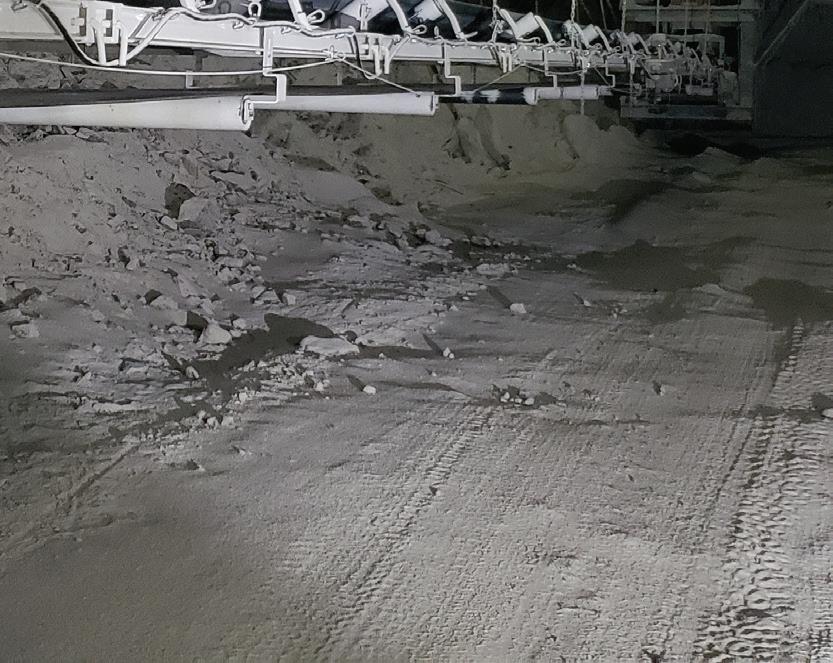
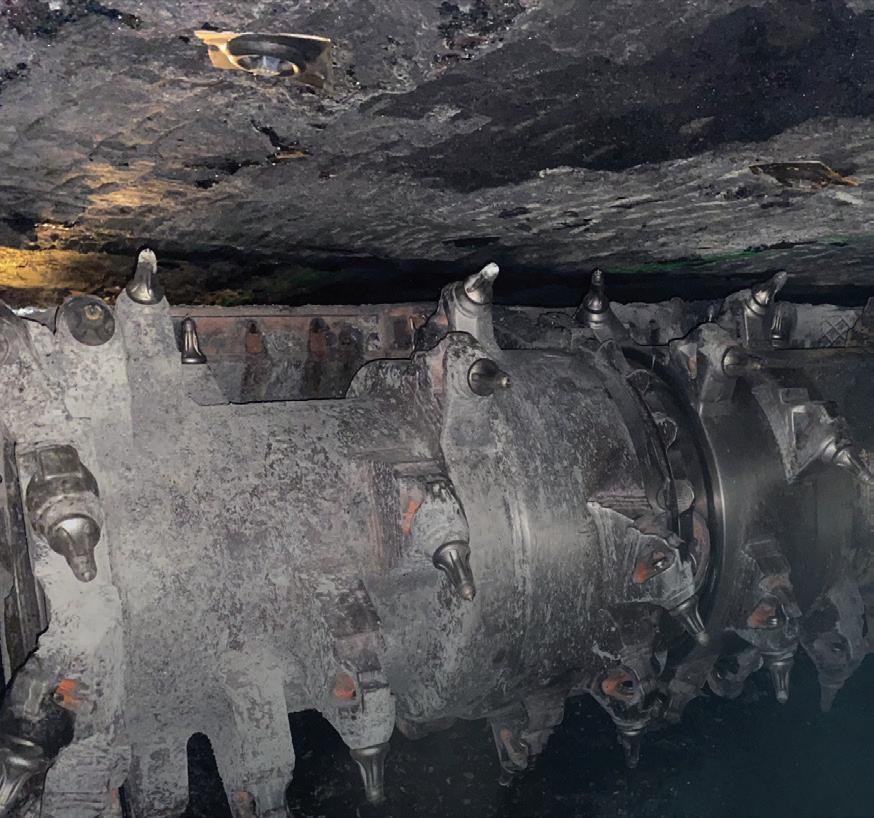
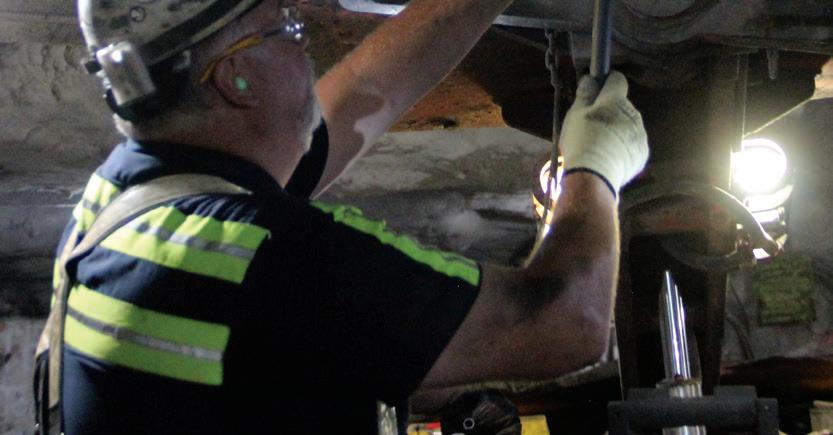
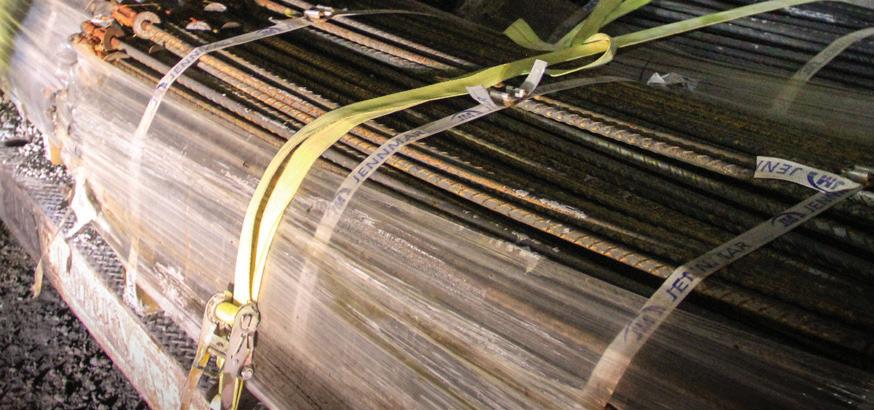
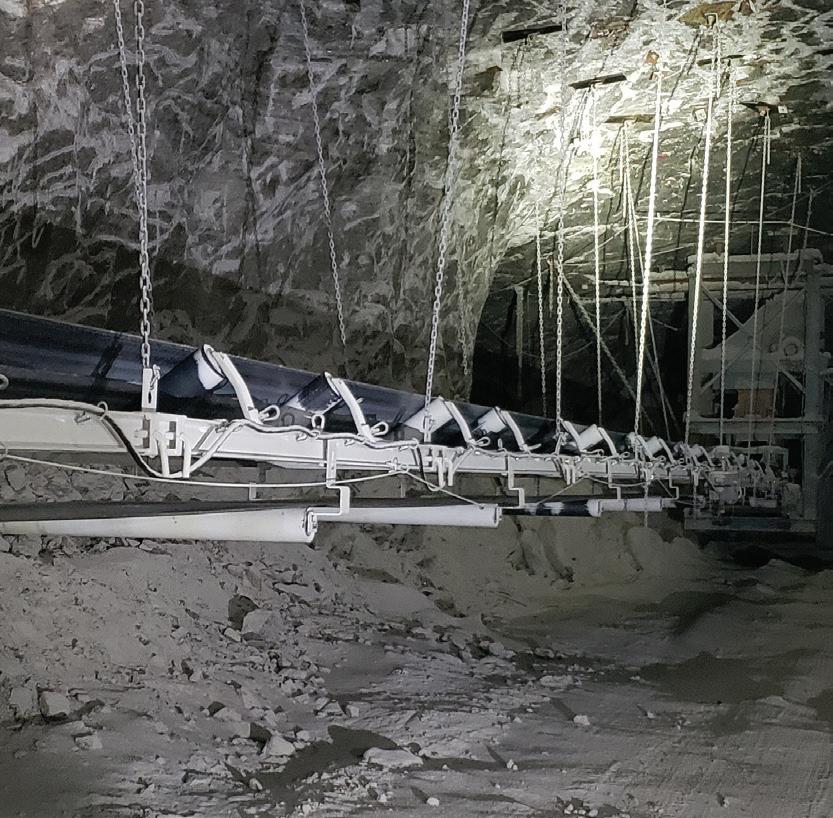

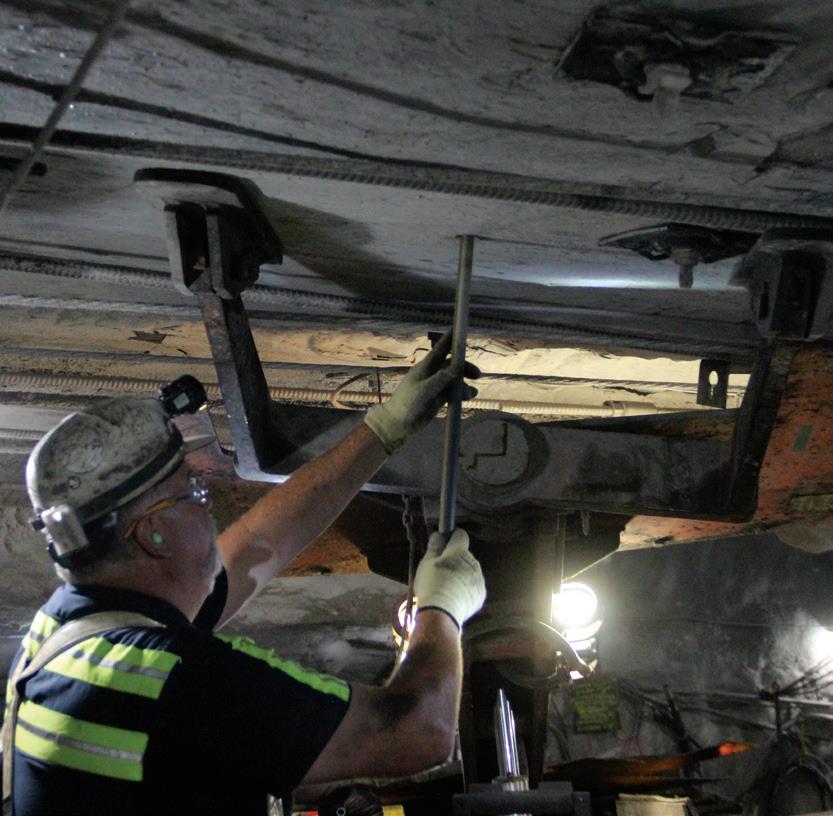

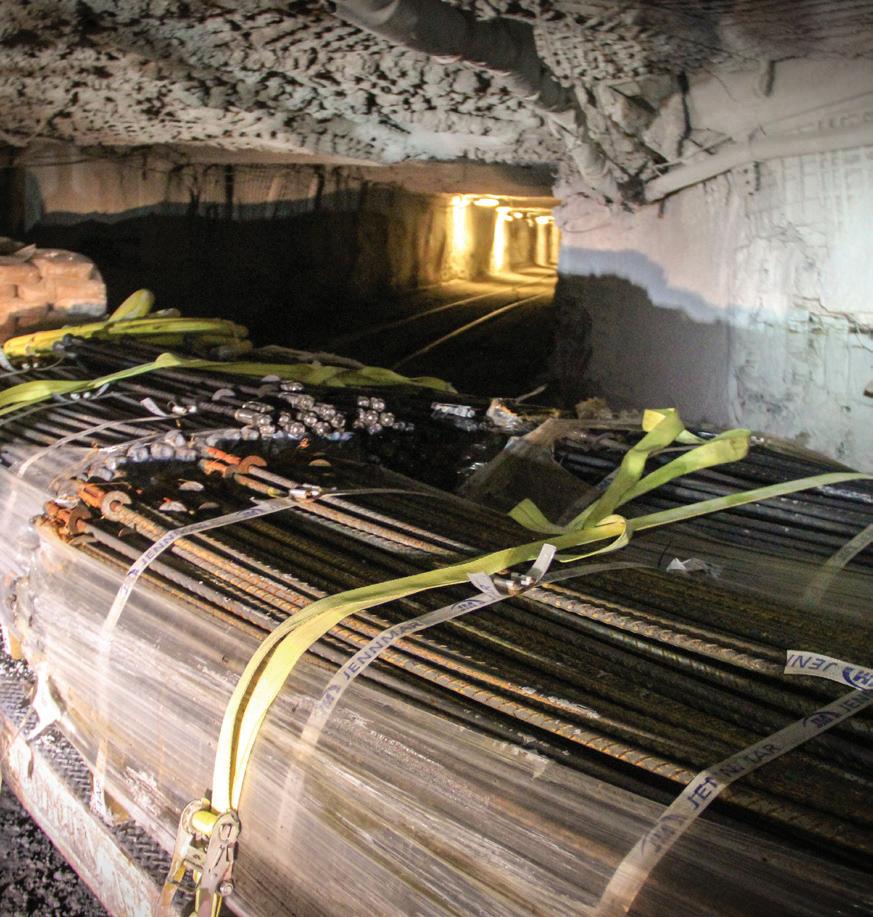






















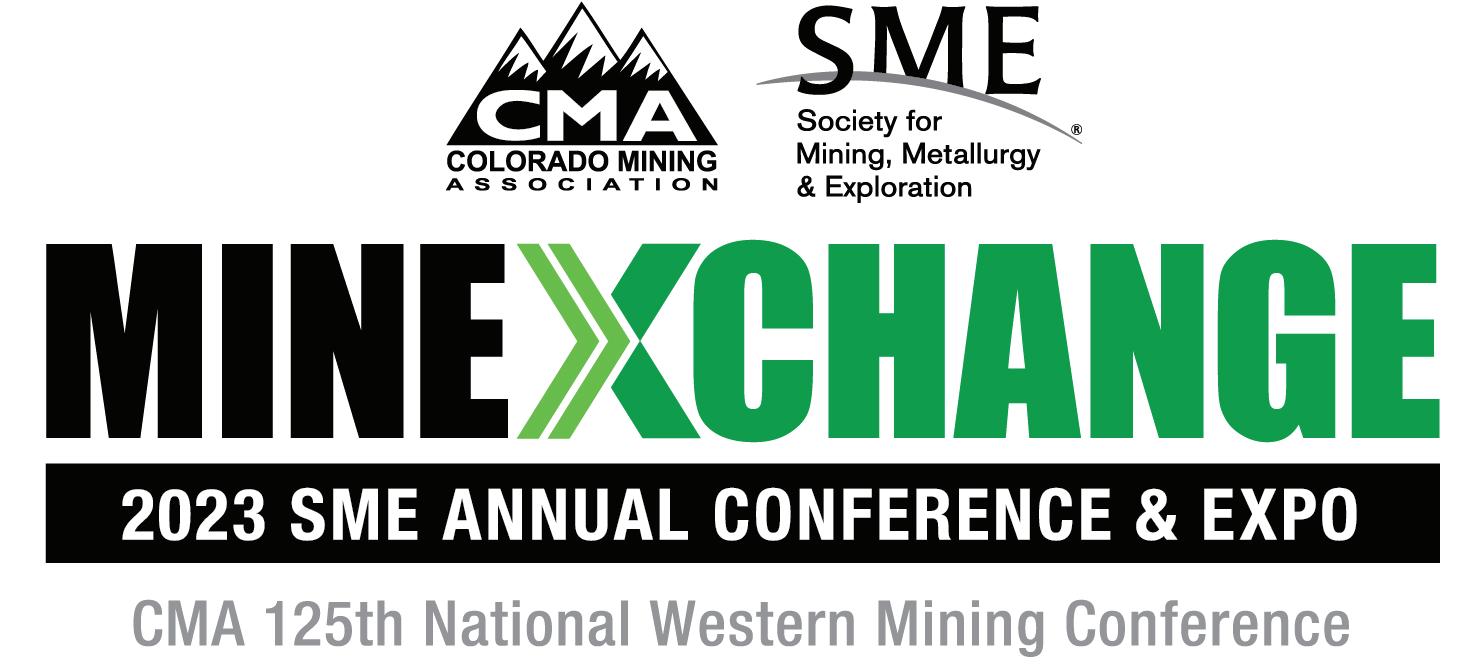
people safe, and to allow every employee to achieve their maximum potential.
Accompanying physical safety, are psychological, cyber, and cultural safety – all important prerequisites for sustainable mining activities. People need to feel safe, be able to bring their whole self to the workplace, as well as be safe to perform their roles to the full and feel valued. In today’s digitally connected world, safety is also a virtual matter. In 2021, the number of cyberattacks and data breaches increased by 15.1% from 2020. 13
Cultural safety is also important. Respecting traditional custodians and their environments, as well as the cultures and communities in which miners and metal providers operate, is non-negotiable in winning trust and maintaining a license to operate. It is also key in boosting Indigenous employment in mining.
To maintain the high standards that they have set for themselves, mining and metals companies must continue to evolve their approach to workplace health, safety, and culture.
Mining and metals companies have been key contributors to emerging economies around the globe. With this power comes responsibility, and organisations can expect close and ongoing scrutiny of their tax and wider economic contributions from a range of stakeholders in the years to come.
For years, many mining and metals groups have supplemented their mandatory payments to government disclosures with standalone tax and economic contribution reports. These voluntary ‘transparency reports’ proactively address matters where there may be a perceived risk of mistrust or misinterpretation – for instance, explaining a group’s ongoing presence in low-tax jurisdictions. This behaviour sets a precedent, and it is likely that more companies will follow suit over the coming months.
The level of transparency this action creates will play an important part in repainting the industry as an integral force for sustainable development in regions of the globe where investment can be hard to come by.
For mining and metals companies to thrive through change requires that their structures, processes, and operations become more dynamic. This will allow them to respond faster to challenges and opportunities through new partnerships, attracting fresh talent, and speeding their innovation efforts.
Cloud computing is a proven enabler during times of disruption and has underpinned value creation in multiple industries over the past decade. Around 80% of the organisations surveyed for Deloitte Australia’s 2021 report, ‘The cloud imperative: Asia Pacific’s unmissable
opportunity’, stated that by implementing cloud they were better prepared to address future challenges and organisational needs. A similar proportion said that cloud enables them to innovate more quickly and frequently. 14
Looking to the future, some of the most promising applications for cloud, and therefore advantages for early movers, include: data integration to enable analysis of mine site data; predictive maintenance of equipment to better manage and extend asset life; and the integration of supply chains. Data integration through cloud also allows insights to be shared across supply chains, which will be vital in improving traceability and in lowering Scope 3 emissions.
1. ‘Half of World’s GDP Moderately or Highly Dependent on Nature, Says New Report’, World Economic Forum, (19 January 2020), www.weforum.org/press/2020/01/half-of-world-s-gdp-moderatelyor-highly-dependent-on-nature-says-new-report
2. ‘Integrated approaches and Nature-based solutions for the restoration of degraded landscapes’, IUCN, (3 May 2022), https://www.iucn.org/news/south-america/202205/integratedapproaches-and-nature-based-solutions-restoration-degradedlandscapes
3. ‘New IUCN-Anglo American collaboration aims to deliver collective net positive impacts for biodiversity and tackle climate mitigation through nature-based solutions’, IUCN, (11 February 2021), www.iucn.org/news/business-and-biodiversity/202102/new-iucnanglo-american-collaboration-aims-deliver-collective-net-positiveimpacts-biodiversity-and-tackle-climate-mitigation-through-naturebased-solutions
4. ‘Circular Economy: Implementing circularity and transitioning to circular business models’, Deloitte, (2022), www.deloitte.com/be/en/ pages/climate-and-sustainability/solutions/circular-economy.html
5. ‘Decarbonising Steel: Forging New Paths Together’, Shell and Deloitte Global, (2022), www.shell.com/energy-andinnovation/the-energy-future/building-low-carbon-demand-sectorby-sector/_jcr_content/root/main/section/simple_1738510183/ list_1250866868/list_item_copy_45101/links/item0.stream/1669 034355054/5b1f673472d02633f82125fef387d13c266a454d/shelldecarbonising-steel-digital.pdf
6. ‘HYBRIT: SSAB, LKAB and Vattenfall first in the world with hydrogenreduced sponge iron’, SSAB, (21 June 2021), www.ssab.com/en-gb/ news/2021/06/hybrit-ssab-lkab-and-vattenfall-first-in-the-worldwith-hydrogenreduced-sponge-iron
7. ‘Epiroc presents world’s first underground mine truck made using fossil-free steel from SSAB’, Epiroc, (1 December 2022), www.anpdm.com/newsletterweb/474A5F4B784042514678424359/4 44159427145425F4372444B594771
8. ‘Green hydrogen and Antofagasta’s drive to carbon neutrality’, Antofagasta PLC, (3 February 2022), www.antofagasta.co.uk/media/ articles/green-hydrogen-and-antofagasta-s-drive-to-carbonneutrality
9. ‘Winning technology innovators announced’, Charge on Innovation Challenge, (12 May 2022), https://chargeoninnovation.com/ winning-technology-innovators-announced
10. LEONIDA, C., ‘Miners Lead the Charge For Battery-electric Vehicles’, Engineering & Mining Journal, (January 2022)
11. ‘Vale Launches $100M Fund to Invest in the Sustainable Start-up Ecosystem’, Vale, (6 August 2022), www.vale.com/EN/aboutvale/ news/Pages/vale-launches-dollar100m-fund-to-invest-in-thesustainable-startup-ecosystem.aspx
12. ‘Scalable & Adaptable Mining’, OZ Minerals, (July 2022), www.ozminerals.com/ArticleDocuments/440/ScalableAdaptable_ Challenge%20Whitepaper.pdf.aspx?Embed=Y
13. BROOKS, C., ‘Alarming Cyber Statistics For Mid-Year 2022 That You Need To Know’, Forbes, (3 June 2022), www.forbes.com/sites/ chuckbrooks/2022/06/03/alarming-cyber-statistics-for-mid-year2022-that-you-need-to-know/?sh=6535ecdd7864
14. ‘The cloud imperative: Asia Pacific’s unmissable opportunity’, Deloitte Access Economics, (July 2021)
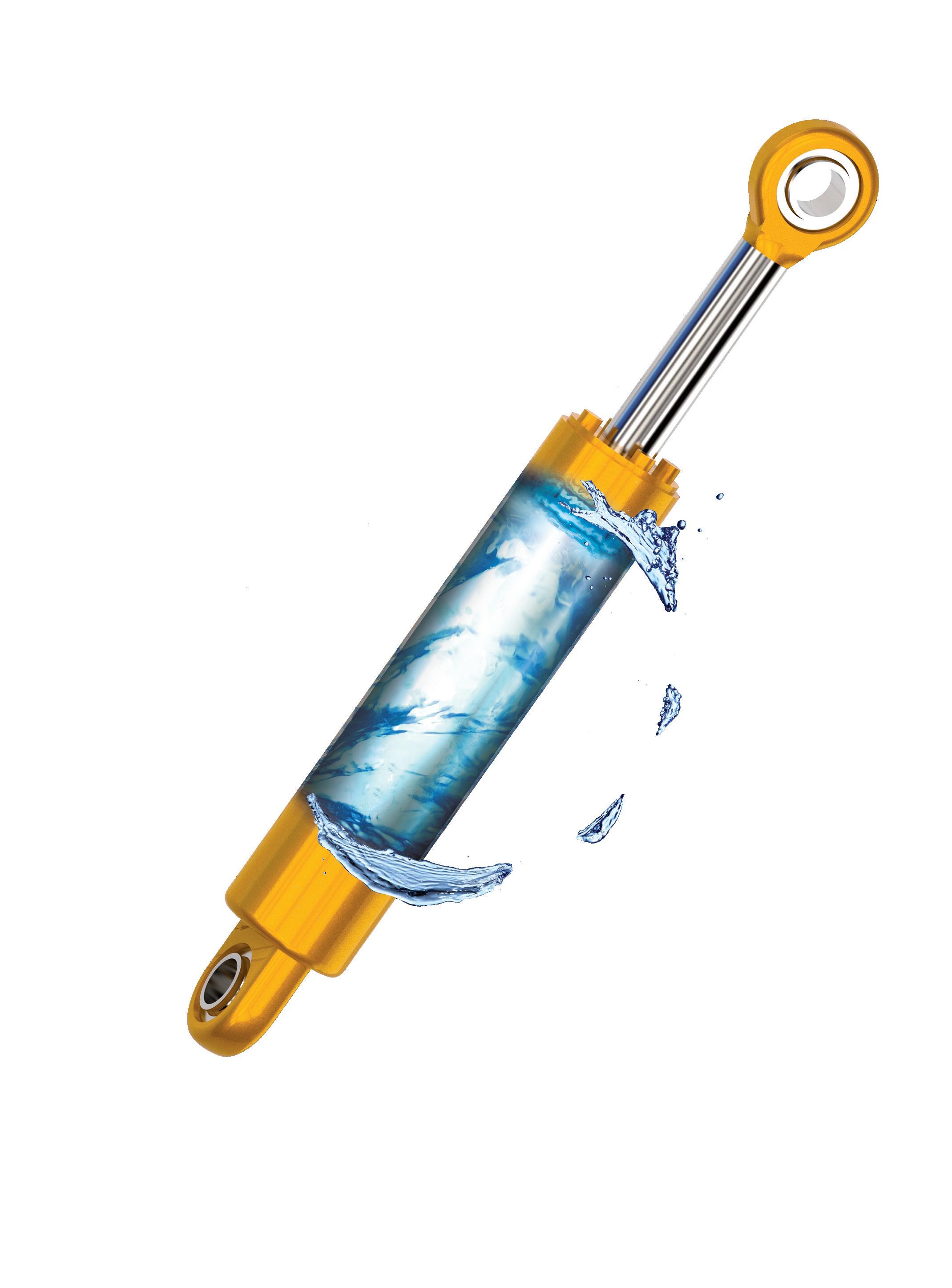
Pat Lim and Kevin Hartley, Dyno Nobel Americas, USA, use a case study to illustrate the benefits of electronic delay timing as an initiation system in mining projects.
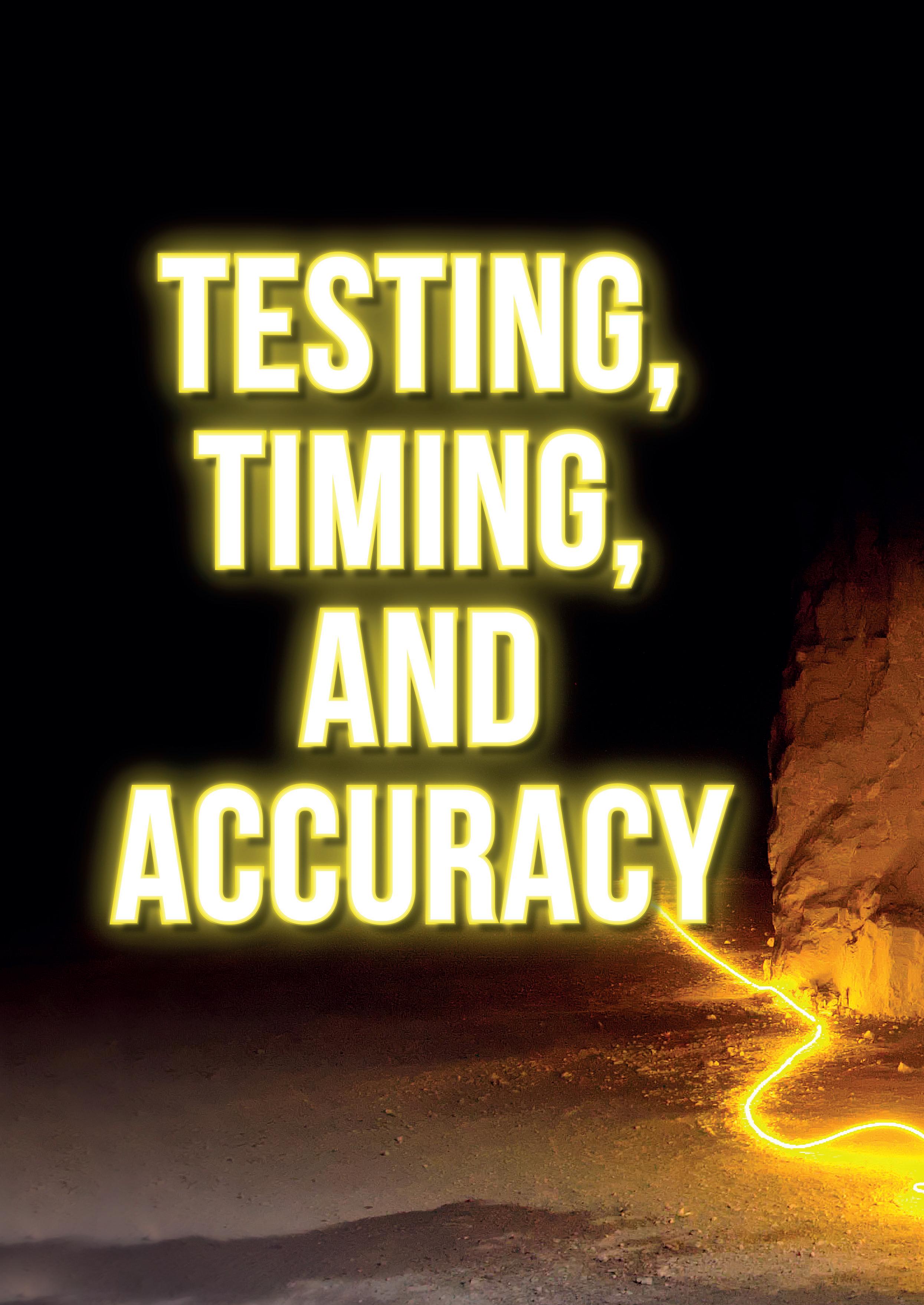
Electronic initiations are the initiation systems of choice for many mining projects around the world. Compared to pyrotechnic delay timing, electronic delays are much more accurate, and the shots fire exactly as designed. As such, they can improve blasting results and vibration control, reduce overbreak, improve wall stability, minimise scaling, reduce production costs, and help save time for projects overall. This makes them the perfect solution for a variety of applications –especially when the ability to accurately time blasts can be the difference between a successful blast, and one that causes damage to nearby structures.
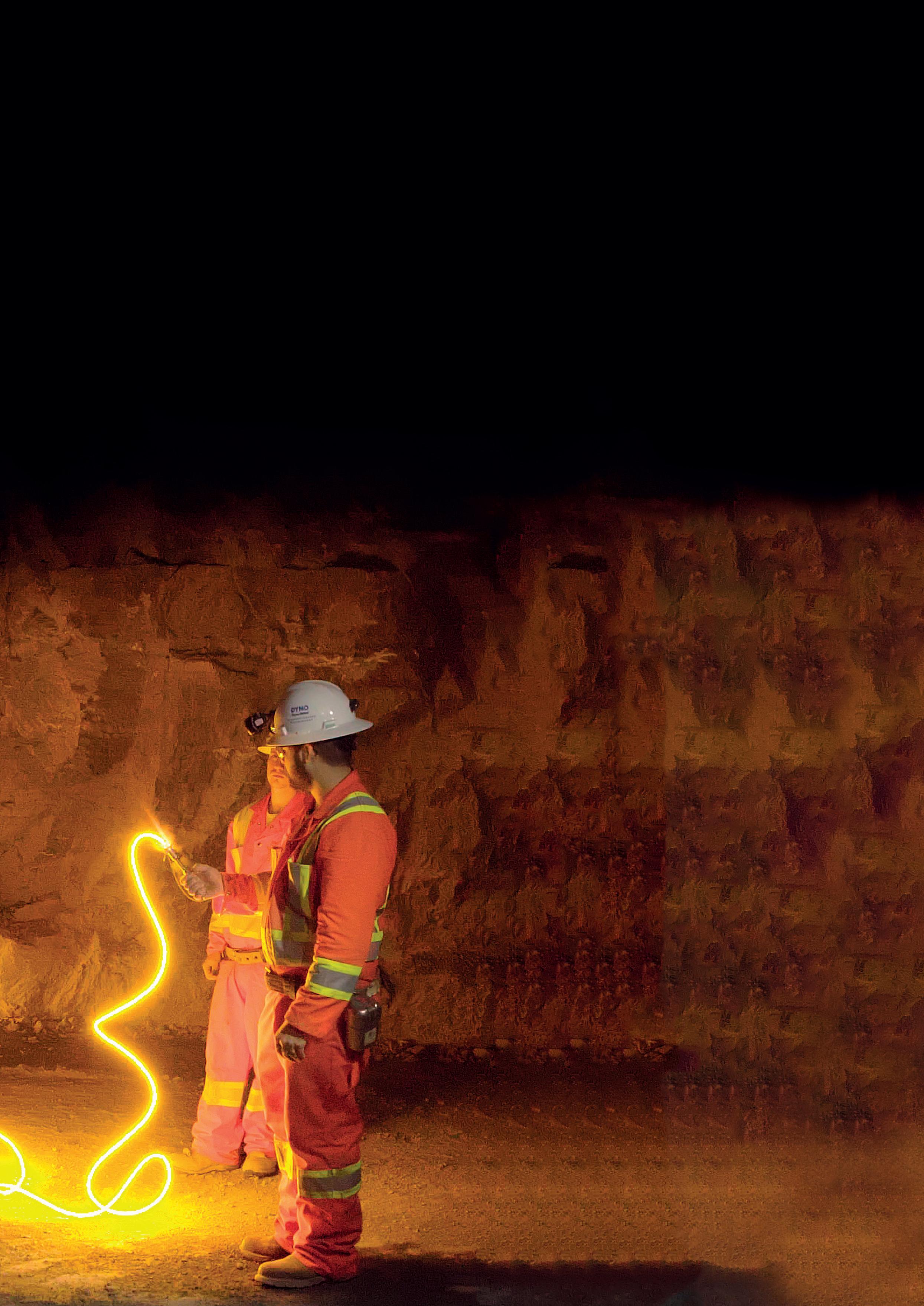
To illustrate the benefits of electronic initiations in terms of timing accuracy, a look at a recent project undertaken by the Dyno Nobel team provides a solid foundation. A drill and blast company located in Canada was blasting near an existing pipeline. Because of its proximity to the pipeline, the project
was subject to a set of vibration limits that could not be exceeded, as doing so would risk causing damage to the structure that was already in place pre-blast.
Because of the stringent vibration limits, the primary contractor for the drill and blast project mandated the use of electronic initiations, rather than pyrotechnics. This decision was made due to the increased timing accuracy offered by electronic delays. The timing accuracy would help ensure that the maximum vibration set forth by the project would not exceed the limits, thus helping to prevent any potential damage to the pipeline.
For this spread of the pipeline, EZshot® and EZ DETS were chosen for blasting. EZshot is an electronic initiation system that combines the benefits of accurate electronic timing with the ease of use of traditional NONEL systems. In this case, EZshot and EZ DETS offered the timing precision and accuracy necessary for safe blasting near the pipeline, and pre-programmed delay timing for easy implementation.
As an added benefit for this particular project, the application for EZshot is the same for conventional pyrotechnic detonators. This meant blasters would already be familiar with the usage of the system, so no additional training would be required for the crew.
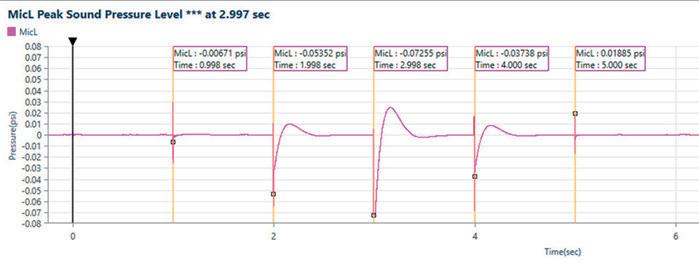
Once EZshot was chosen as the initiation system of choice by the drill and blast company, blasting began. While the project was ongoing, seismographs were used to record the levels of blast-induced air and ground vibration. Seismographs use specialised sensors called geophones to monitor ground vibration, and microphones to measure air vibration.
During blasting, seismograph readings showed that the waveforms from the geophones had differing durations than the timed patterns of 1000 msec. This discrepancy between the timed delay of 1000 msec. and the data from the seismograph brought the timing accuracy of the detonators into question. Because any inaccuracy in timing could result in vibrations that exceeded the set limits and put the safety of the pipeline at risk, the accuracy of the electronic initiations needed to be verified before the prime contractor could allow them to be used.
At this point, the goal for the project was to assess the accuracy of the timed patterns for the electronic initiations, and, if necessary, troubleshoot any potential issues that may
be causing the discrepancy between the planned timing and the timing reflected by the seismograph.
In order to assess the accuracy of the timed patterns, downhole delays were measured by attaching several detonators to a high-resistance cable, and measuring the break in the line. Normally, a VOD machine would measure distance (charge of explosive) over time. In this case, only time was considered.
Five detonators were fired using two different date codes. For the first date code, a seismograph was used to record the sound produced from shooting five detonators in a series on the surface. The resulting measurement from the seismograph showed that each detonator triggered within the target of 1000 msec. For the second test, the seismograph was used once again, this time in conjunction with a micro trap that used the detonators to break the resistance wire and trigger an event. The timing of all five detonators were within 0.5 msec. of the 1000 msec. target.
After the detonators were initiated, the resulting data from the seismograph and micro trap proved that the downhole delays did, in fact, shoot at 1000 msec., as indicated on the technical data sheet. Satisfied with the findings and the technical support from the Dyno Nobel team, the prime contractor was able to allow EZShot and EZ DETS back onto the pipeline project. Furthermore, it was insisted that the drill and blast company continue to use Dyno Nobel for technical support moving forward.
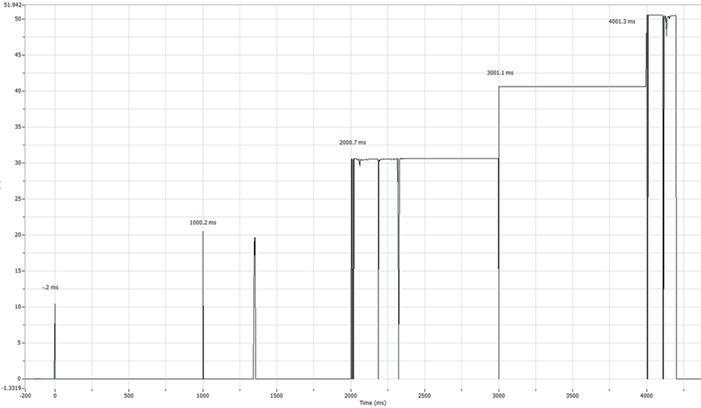
The result of this case study has implications for drilling and blasting not just near existing structures, but in any situation in which timing accuracy is essential, particularly in mining. The seismograph data clearly demonstrated that the delay timing offered by electronic initiations was both accurate and precise. Because timing has a significant impact on vibrations caused by blasting, electronic initiations allow blasters to control vibrations more accurately. In mines, this can lead to improved perimeter control, overbreak reduction, improved wall stability, minimised scaling, and less time spent mucking, hauling, and processing.
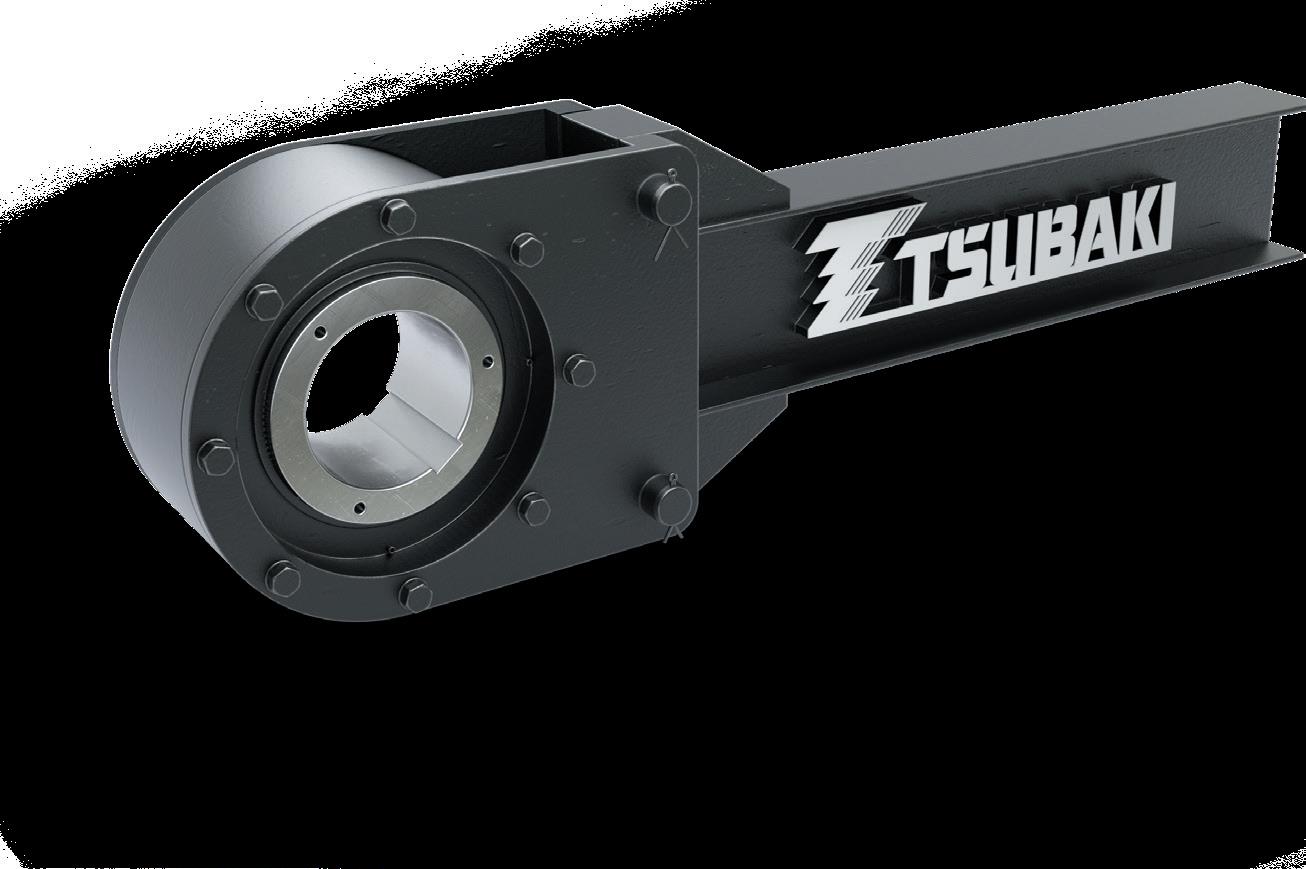
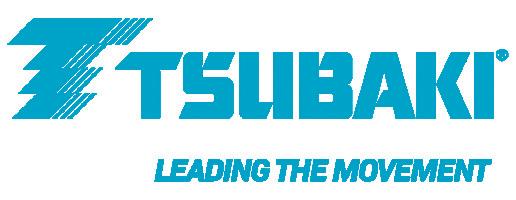
Isn’t it time for a change? With the need for tighter tolerances in manufacturing operations today, especially in extreme industrial applications, you need to have a reliable external backstop to keep your operations running smoothly. Assembled here in North America, BS-F Series Backstops can be ordered on short lead times.
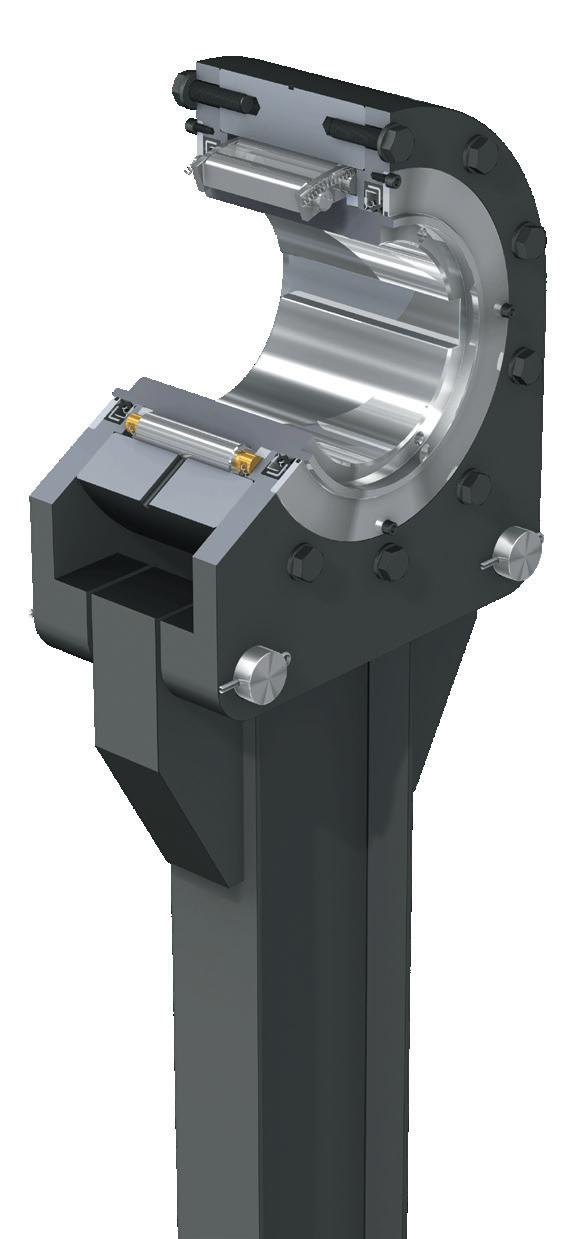
USES UNIQUE GREASE LUBRICATION
› Only once yearly maintenance required for most applications, no need to monitor or refill oil levels between lubrication cycles

NARROWEST DESIGN FACILITATES DROP-IN REPLACEMENT FOR ALL MAJOR MANUFACTURERS
UNBEATABLE PRICE AND TECHNICAL SUPPORT

While mining is by no means a new field, the demands have never been higher and, therefore, new solutions are in constant demand. This is pushing mining equipment and drilling consumables companies to constantly reinvent themselves, and stretch the limits of what it is possible to achieve in mines. From battery-driven electric machinery to emission-cutting technologies and optimised equipment, sustainability has quickly risen to join productivity as the focal point of the industry. As productivity and sustainability can often go hand in hand in a mining operation, at least on the baseline, there are many parameters that can be optimised in order to increase productivity and lower the total drilling costs, while also contributing to the sustainability of the operation.
When it comes to drilling, there are generally two ways of determining costs: the cost per metre and the total drilling cost. There is no doubt that the former method has provided important measurements for a long time now, and will remain relevant for years to come; however, it is the latter that generally provides a better point of comparison. Cost per metre only considers the durability of the tools, which is naturally an important and suitable metric in itself. But, the total drilling cost also considers the rate of penetration of the tools, or productivity, meaning more drilled metres in less time. No matter how you look at it, total drilling costs are the ultimate measure to cover all the bases.
As already touched upon, productivity equals work done in a certain amount of time. Remembering this, it is easy to see the multiple ways to increase productivity in drilling; avoiding breakages, minimising the need to stop to replace a worn part, and simply breaking through the rock faster are all actions that can be taken to reduce drilling time. Reducing drilling time allows the driller to conclude their work faster, with less fuel consumed, and fewer hours on the drill rig’s clock. This drags the total cost of drilling down in terms of spent time, fuel costs and the cost of the machinery, whether rented or owned.
When attempting to maximise both sustainability and productivity, the choice of drill bit plays a major role. The properties of the bit have a direct impact on many variables affecting the total drilling cost and sustainability of the operation, such as fuel consumption, component lifetime, and CO2 emissions. It is naturally desirable to keep the consumption of everything as low as possible; fuel, pieces of equipment, and time.
What is more, the durability of the bits can make or break any remote-controlled drilling operation. Should the bit lifetime be too short, the controller will need to restock the reserves on their remote-controlled rigs more often, eating away at their usability and benefits.

Robit’s latest generation button bit series, the Rbit, has been designed from the ground up, with productivity and sustainability in mind. The main goals of the redesign were to help the company’s customers bring down their total drilling costs by facilitating a faster rate of penetration, while further lowering the cost per metre. The new series was launched in two phases, with the larger end leading the way, from 60 – 152 mm, and the smaller 32 – 57 mm Rbits following in tow.
The whole Rbit series features an optimised button layout configuration, which ensures maximised contact with the drilled rock and optimised rock breaking dynamics, as well as an efficient energy transmission, so that the rock can be broken as quickly as possible and no energy goes to waste. Additionally, both the Flat Face and Drop Center models in the larger sizes have improved transition faces, allowing for the percussion energy to be better transmitted into the rock.
In addition to the features that enable the Rbit to break rock more efficiently, all of the bits also come with an enhanced flushing design, as well as redesigned, wider retrac grooves, which make it possible to eject the broken stone cuttings faster, thus clearing the area between the bit and the rock. This is especially important in softer rock formations, as the enhanced flushing properties prevent the Rbit from getting clogged, which was an occasional problem with the old HTG models. Finally, the larger sizes with both Flat Face and Drop Center models are also available in heavy duty versions for extremely abrasive ground conditions.
The Rbit series of button bits aims to tackle issues that have not been fully addressed by the prior generations, while also building on their strengths.
The optimised rock breaking dynamics and the improved flushing capabilities of the new bits grant them extremely competitive penetration rates in the most demanding conditions. On average, the drilling speed offered by the new Rbit series is 17.6% faster than that of the old HTG models, increasing from approximately 2.2 – 2.5 m/min. to 2.5 – 2.8 m/min. This directly impacts both the fuel consumption and the costs relating to the
Jorge Leal, Robit, Finland, reviews the features and uses of a new drill bit and its role in improving the productivity and sustainability of mining operations.
time spent drilling, providing the driller with more drilled metres each day.
The grinding interval has also been increased, making it possible for the drilling machinery to function uninterrupted for longer periods of time. Furthermore, the average lifetime of the bits increased by approximately 19% from the previous models, bringing about both monetary and environmental savings, as fewer bits are required to finish the job.
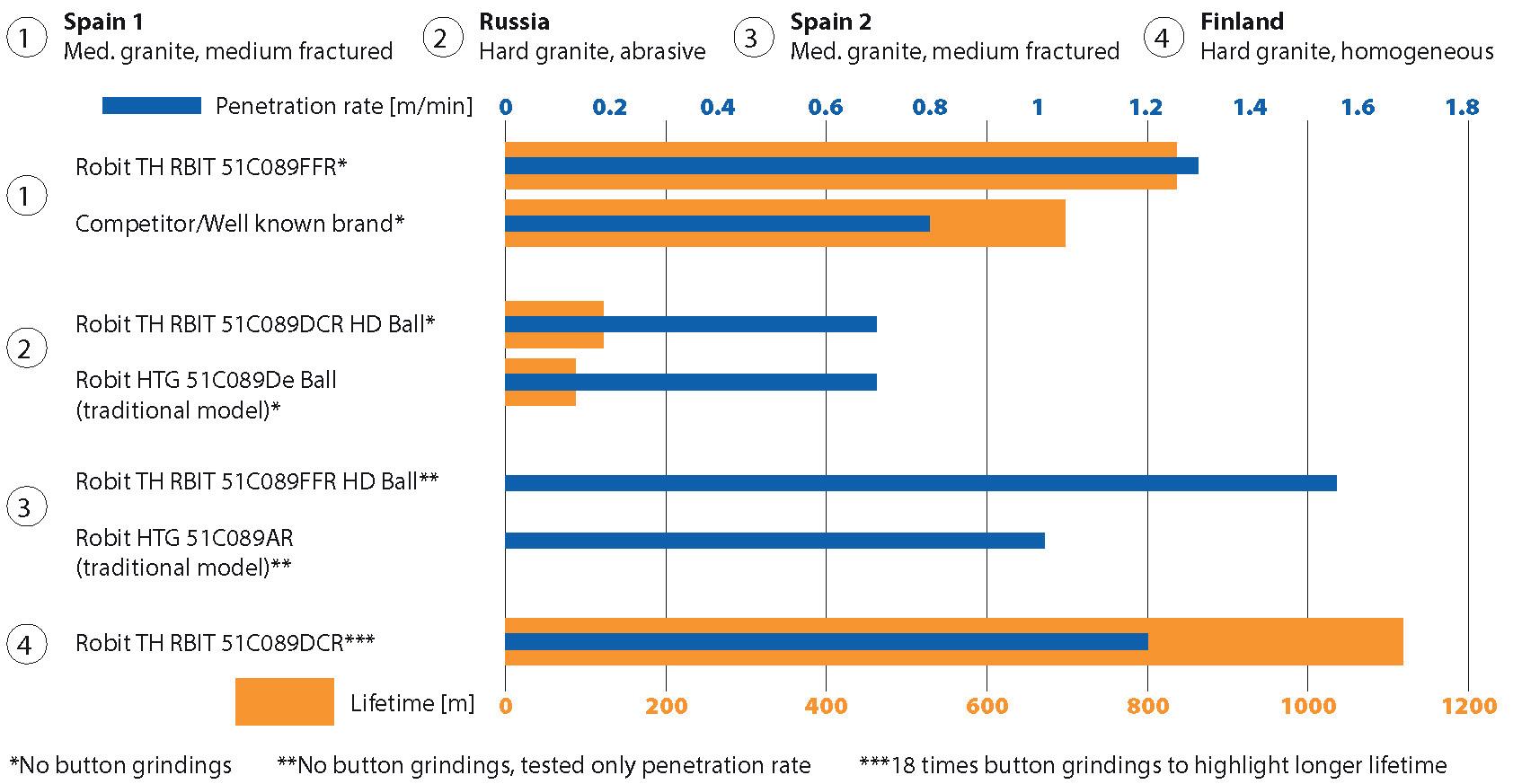
When boosting productivity, drill uptime should be one of the main focus points. Stopping the drill and spending time replacing the bits, either for grinding or for removing them from circulation, is always lost time that could be spent on drilling. And the longer the driller can keep the drill running, the more metres they will manage to drill each day.
Should a drill operator want to optimise their drill’s uptime, there is hardly a better companion for a top hammer drill than a diamond button bit. The diamond button bit will allow the driller to keep their rig running for longer, without interruptions, pushing the daily drilled metres as far as they can go. This is achieved by swapping out the traditional hard metal buttons for incredibly durable buttons with an industrial diamond coating, while still utilising the new Rbit bits’ bodies for the enhanced flushing capabilities and increased penetration rates.
As already mentioned, Robit Diamond Button Bits utilise the same bit bodies as Rbit Button Bits. This means that they deliver
the same benefits and improvements over the previous generations in terms of rate of penetration, rock-breaking dynamics, and flushing properties. What is different about the diamond button bits, however, is the industrial diamond coating on the buttons, which allows them to outlast almost any other bit.
The creation of the diamond coating takes its inspiration from how diamonds are formed, subjecting the buttons to high pressure and heat, making them even more durable than natural diamond. The coating has several layers to it, ensuring adherence and making certain that the diamond bit can withstand the temperature changes and shocks typical for top hammer drilling.

The diamond button bits have been meticulously tested, proving their benefits over traditional hard-metal button bits. The drilling metres multiply, as the industrial diamond coating eliminates the need for grinding. This means that the drill rig remains operational for longer stretches of time. Furthermore, as the diamond buttons experience practically zero wear, they maintain their high penetration rate throughout the bit’s lifetime, without deteriorations, with the lifetime further increased thanks to the flushing capabilities of the Rbit body. In addition, the lack of wear also provides consistent and predictable results ideal for blasting, due to the borehole diameter not decreasing.
Robit has been working hard to provide the industry professional with tools that fulfill their high standards. As the latest testament of these efforts, the Rbit button bit series is pushing the possibilities offered by drilling consumables. The many improvements and iterations brought about by the latest generation of bits, and improved upon by the diamond buttons, should be of interest to anyone who concerns themselves with matters of sustainability and productivity. And in this day and age, these themes should be of concern to everyone.







Reducing the number of on-site accidents in a mine is crucial; ensuring that personnel remain safe in both in underground and surface settings is necessary. Becker Mining Systems developed both the PDS4.0 and the smartdetect system with safety and proximity awareness in mind.

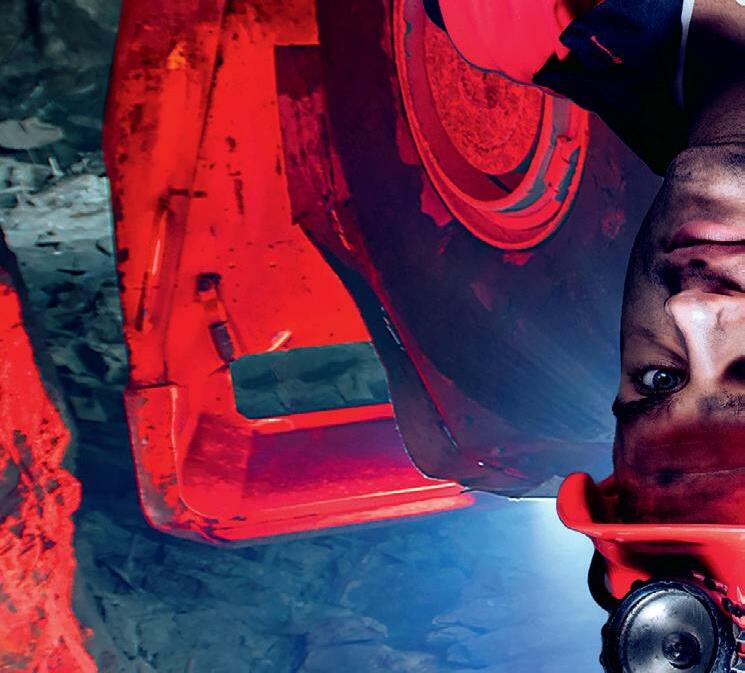
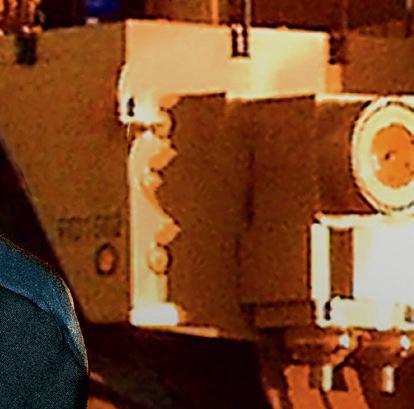

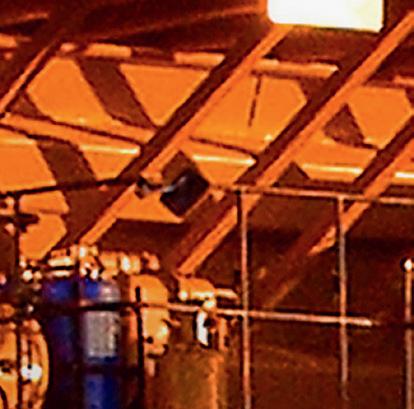

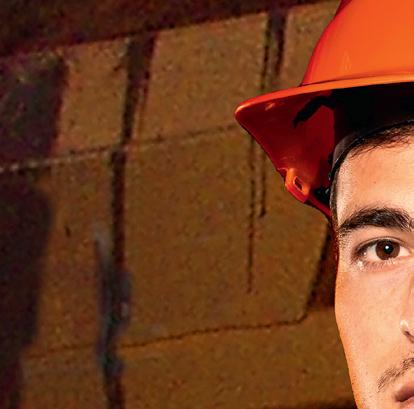

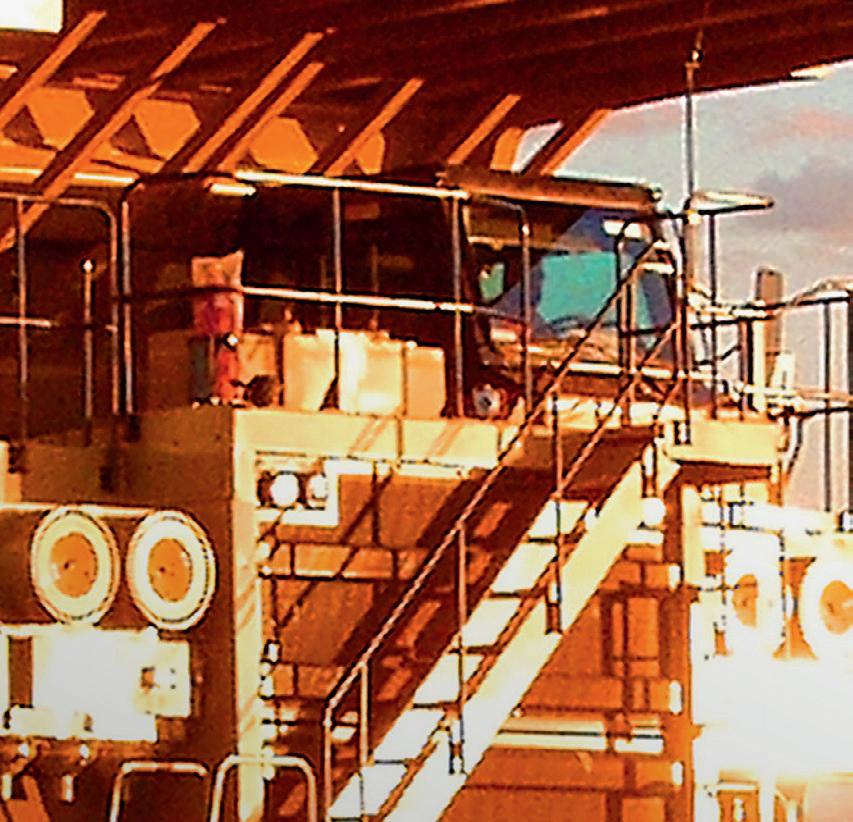
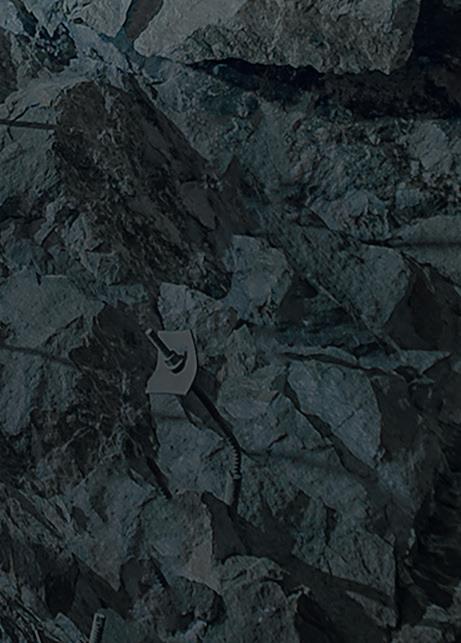

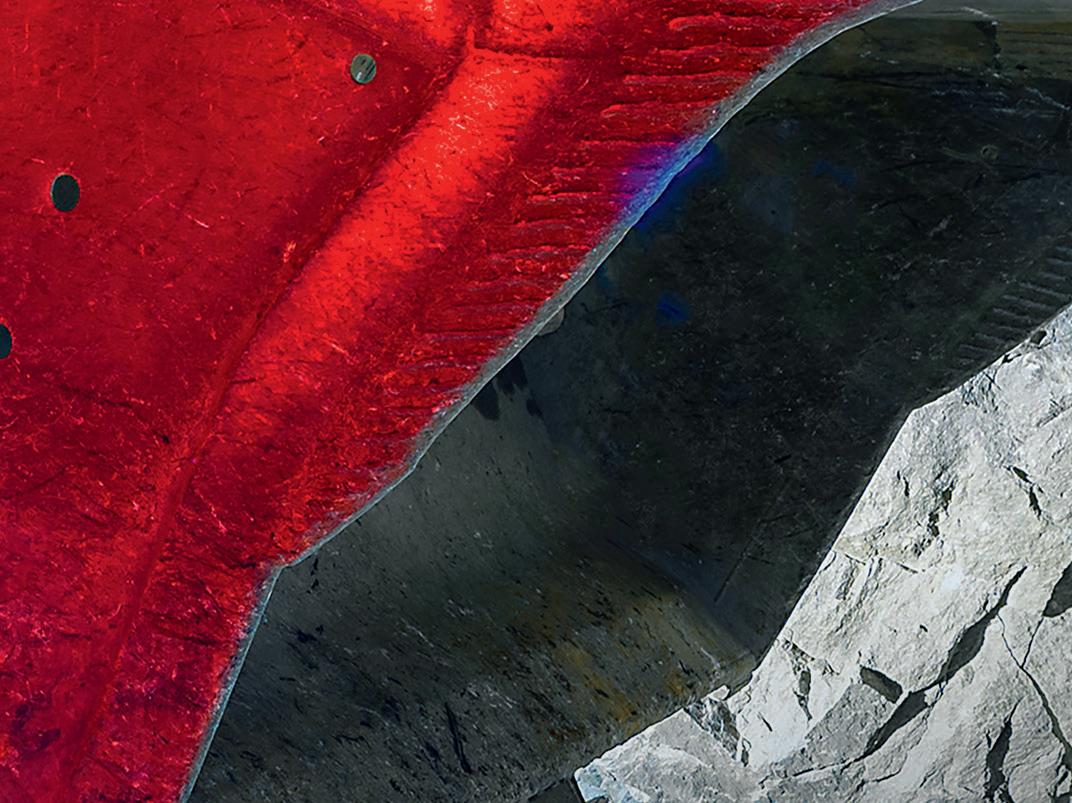
Level 9 compliant, and with a full range of attachments, PDS4.0 and smartdetect




have been designed to offer V2V, V2P, and V2X detection solution in one comprehensive and robust package, allowing for upgrades, and simple system modifications, based on the needs of the customer.

With smartdetect and PDS4.0 enabled vehicles; you will never again have to wonder “how close is too close”

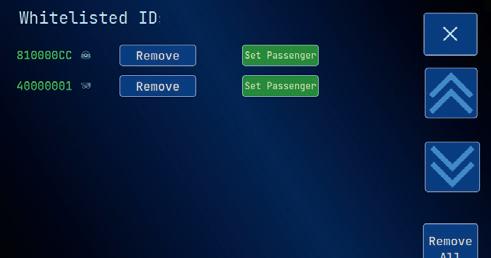




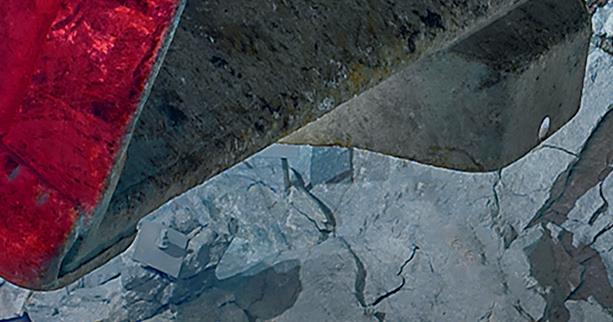


As digital technology has become more ubiquitous in our everyday lives and businesses, mines are adopting wireless systems that are proving revolutionary to the safety and efficacy of mining operations, resulting in an improvement to the bottom line.
Mines have long been dependent on hard-wire communications systems, thanks to the fact that most above-ground systems are rendered useless, or at least highly inefficient, in the deep below-ground environment. In the US, the implementation of the MINER act in 2006, following a series of coal mine accidents that resulted in fatalities, caused the government to mandate new, more reliable systems for communication and tracking, according to the Centers for Disease Control and Prevention.
Communications technologies frequently used in mining include radio node networks, very high frequency (VHF)/ ultra-high frequency (UHF), and leaky feeder systems. Each of these has its downfalls. Traditional wire systems require laying cable, ensuring there are no cuts or breaks in the lines, and then abandoning or retrieving those lines when the mining operation moves on. Wireless underground systems, such as radio frequency systems using VHF or UHF, can be useful in certain scenarios, but obstacles, such as turns or corners in mines, can interrupt signals, impacting on reliability. The commonly used leaky feeder system is designed to radiate signals out of a coaxial cable that reaches transmitters up to 200 m from the cable itself. Although the leaky feeder system improves transmission distance over traditional
Emily Esterson, E-Squared
Editorial,
Innovative Wireless Technologies, Inc., USA, discusses how digital technologies have become increasingly important in improving both the safety and productivity of underground mines.
coaxial cabling, it still requires laying and maintaining wires and antennas. The leaky feeder, with its gap-prone wires, along with the inefficient necessity of line amplifiers at regular intervals, is expensive to operate and prone to failure.
These legacy systems are also rife with costly business inefficiencies. When a cable breaks, for example, it requires someone to get in a mine truck, travel to the surface, gather the needed cable to repair the breakage, and drive back down to site. This involves man-hours of lost productivity. In the meantime, important lines of communication might be interrupted. Additionally, when the operation moves on, those cables need to either be removed or abandoned.
The above ground environment in some mines may also lack infrastructure. Cellular towers are far and few between in remote mining locations, meaning that even communication from the mine entrance to the office can be unreliable.
Other industries have fully embraced digital technologies, but the mining industry has been a slower adopter. The Boston Consulting Group’s Digital Acceleration Index 2021 notes that the metals and mining industry is roughly 30 – 40% less digitally mature than the automotive or chemical manufacturing, for example. The index noted
obstacles in mining operations that hinder digital adoption, such as remote locations with poor bandwidth, a less technologically savvy workforce, rugged terrain, and a mistrust of automation thanks to its connection to workforce reduction. And yet, when mines did ramp up their digital systems, throughput improved by 10 – 20%.
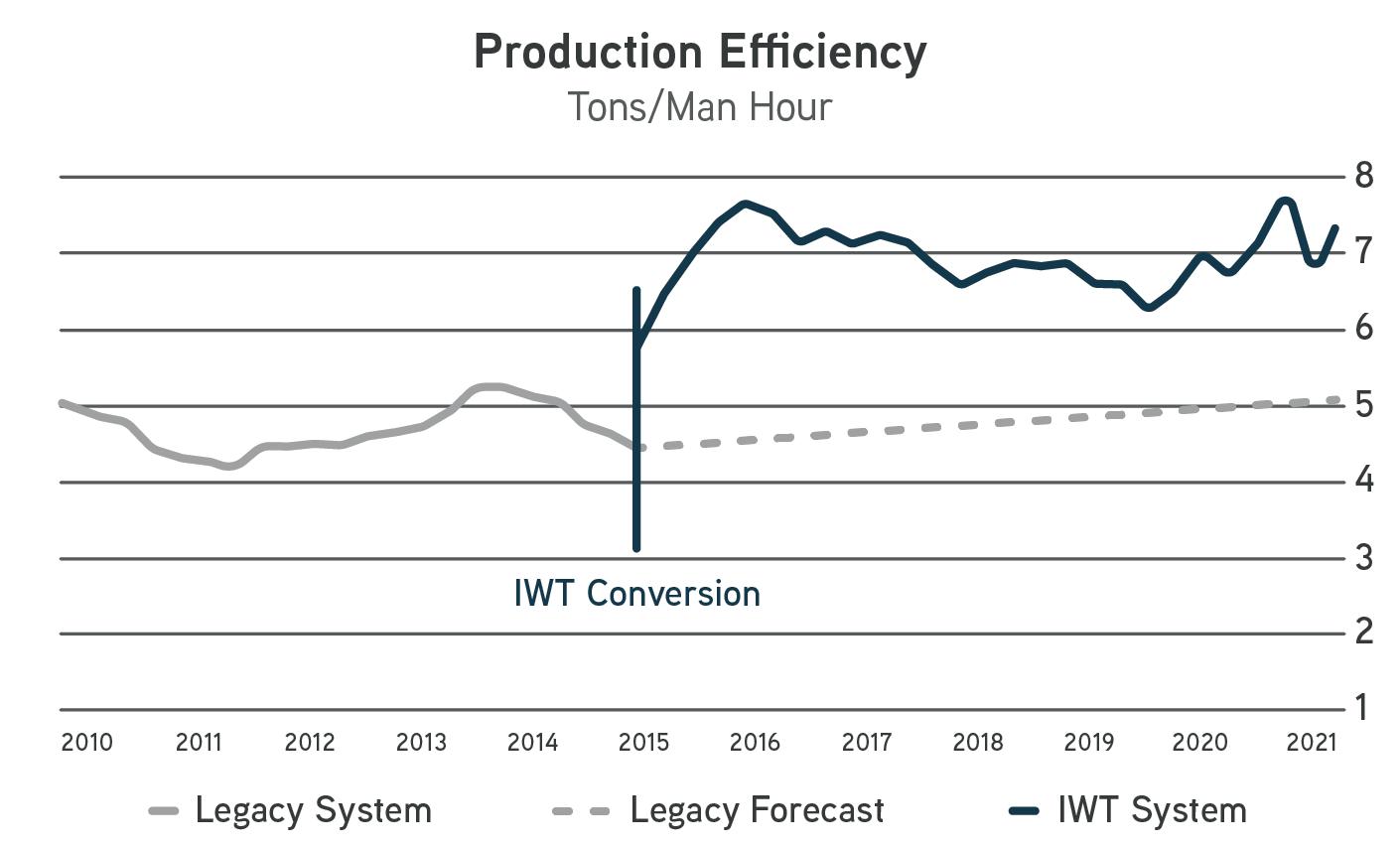
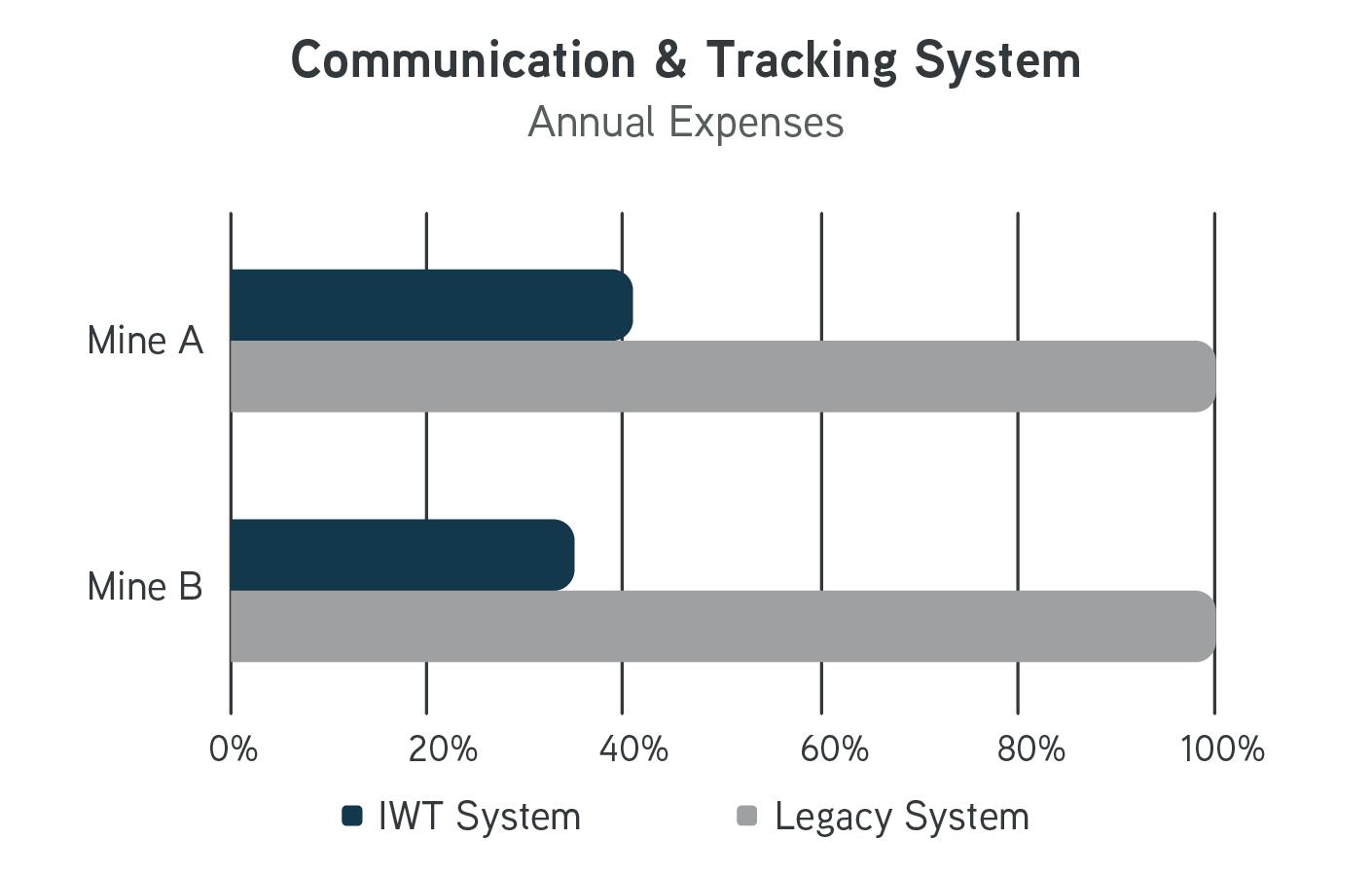
The report notes business benefits as well. The ability to track custom data in real time through sensors, rather than through manual inputs at the end of a shift, for example, can have a positive impact on accuracy in forecasting, overhead and operating cost reduction, fuel costs, and productivity increases. Specifically, the DAI noted that in the digitally connected mines that BCG studied, productivity increased up to 30%.1
What does digital transformation in the mining industry look like? “Connectivity is a big part of that story,” says Eric Hansen, CEO of Innovative Wireless Technologies (IWT), Inc., based in Virginia. “Connectivity solutions that worked in manufacturing, pharmaceuticals, or oil and gas do not work well in the dynamic mining environment,” he adds, because mining operations are always on the move. “The foundational network systems are an important part of any digital transformation,” Hansen says. A better connected mine can track people and assets, integrate multiple siloed systems in mine operations and data collection, and lower maintenance time. It is data-driven and agile, and enables the better compliance and safety. A wirelessly connected underground eliminates costly hard-wired systems, and makes communication and tracking more efficient and reliable.
While legacy systems, such as the leaky feeder communication and tracking systems, have some capabilities, underground communication systems that run on a network of nodes provide an alternative. Built to self-heal, these nodes are not reliant on a single central server which routes data signals along a central highway, but rather on a network – if one should go down, signal traffic is instantly rerouted to a different node. The nodes can be placed in any number of locations, depending on the needs of the mine, to link miners and operations to each other, as well as emergency personnel and managers in the office. Thanks to the dynamic roaming feature in mesh networks, calls remain uninterrupted as users travel throughout an underground mine.
A wireless mesh network node can be recovered and quickly moved to another location by simply picking it up and moving it. Importantly, the digital nature of such a system means it is highly customisable and always up to date – equipment does not require removal or abandonment, nor does it require the storage of multiple spools of cables. Instead, communications are enabled through clear underground radios, with texting and embedded tracking capabilities available for any Wi-Fi enabled device, connected to a wireless high-speed fibre infrastructure that provides Wi-Fi access points at each node.
An underground network greatly improves safety and the ability for mines to comply with the US’ Mine Safety and
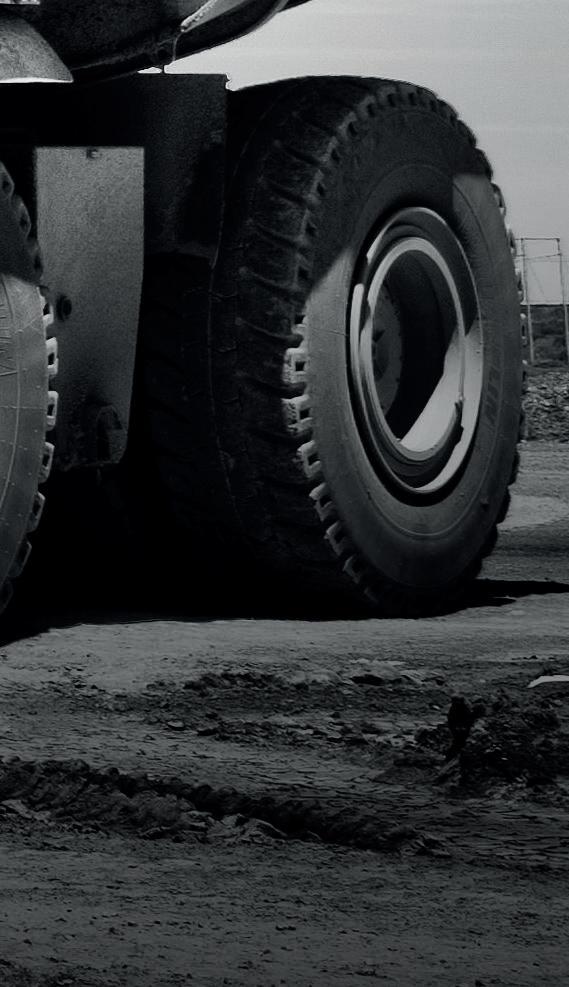
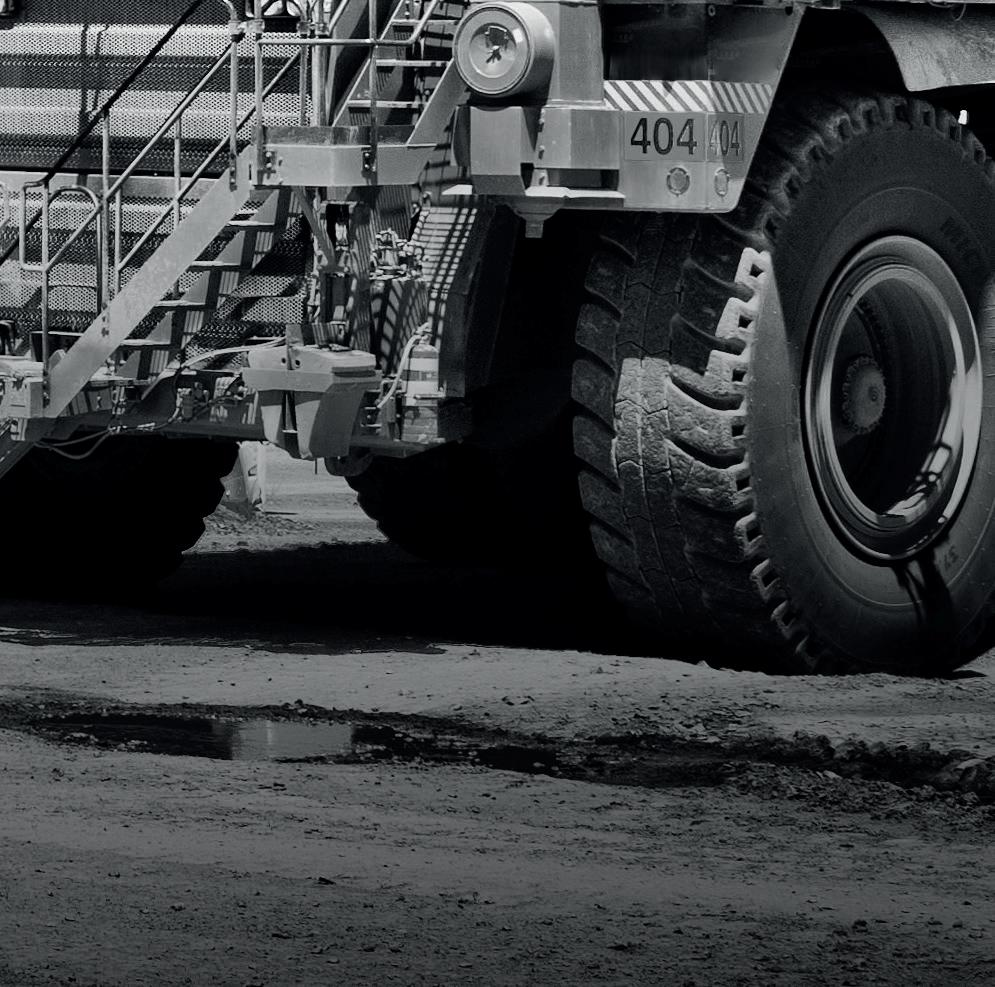

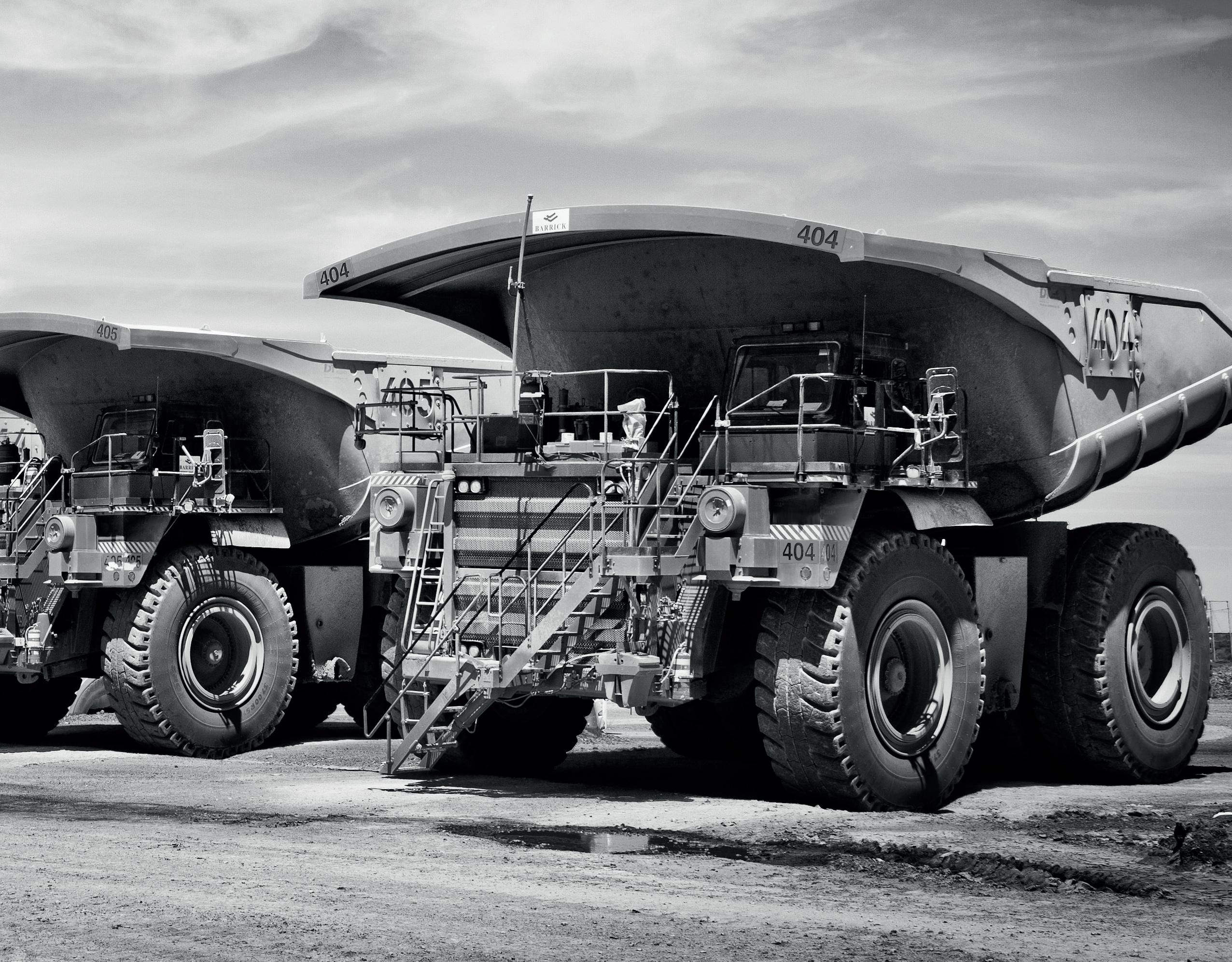
Health Administration (MSHA) rules. Of the top 10 cited standards, a wireless mesh network can improve efficient handling and management of nearly all of them. From the ability to notice and address blocked paths, to mine ventilation and gas monitoring, a network backbone can communicate via radio, tablet, phone, or atmospheric monitoring devices in real time. It routes data quickly out of the underground and allows companies to manage the mine in real time.
These networks can – and have – saved lives. Take, for example, the true story of a miner who was involved in a crash underground and was seriously injured. Using a legacy system, it might have taken hours to find help, clear the tunnels, and get the miner medical attention. With IWT’s wireless mesh system’s ability to track people in real time, the miner’s exact location was instantly known, as was the closest emergency medical-trained miner, who arrived quickly to the scene. They were able to call outside the mine and maintain communication with each other, but also with the first responders on their way to the scene. The mine was able to quickly clear people and machinery out of the evacuation route, as emergency services were arriving at the mine entrance. “A network like this allows you to identify when people have problems and enables you to get to them much quicker,” says Hansen. Furthermore, battery powered communication systems allow rescue personnel to go much deeper underground without losing connectivity.
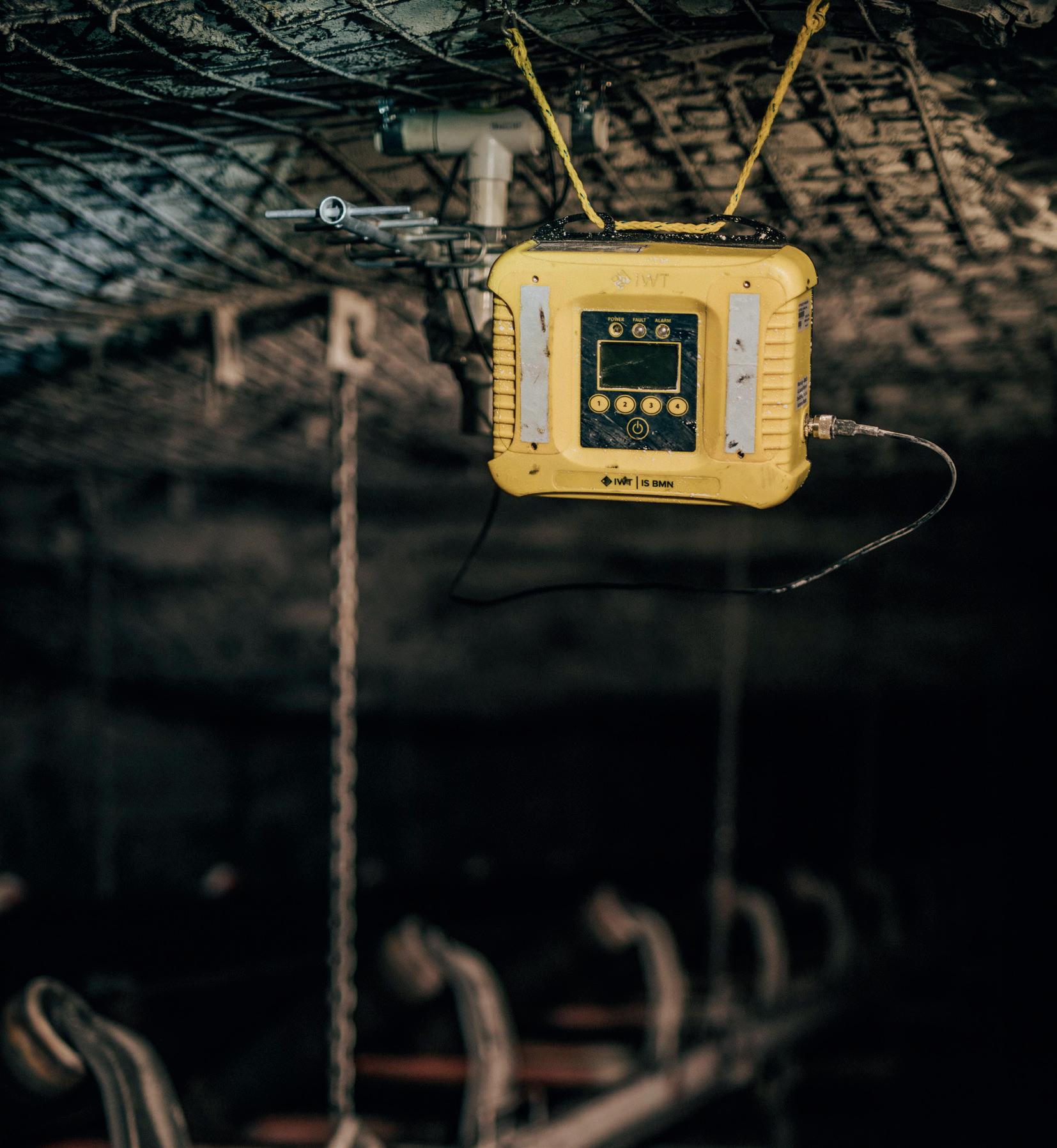
A 2016 McKinsey & Co. white paper detailed the impact of the digital technology on mine productivity. The study predicted that these innovations in communication and data tracking, as well as the resulting robust analytics,
would drive productivity gains.2 McKinsey noted that mining productivity declines can be offset by the embedding sensors, and by gathering vast amounts of data that can provide granular level insights into mining activities. Data can be synthesised to provide managers with insights into operations.
While safety is surely one of the best uses of such a network, the productivity gains can be significant. In real time, operators can see where equipment has broken down, and rapidly deploy repair or maintenance personnel to fix it. With underground wireless connectivity, the path to bringing that equipment back online is much faster. A text or radio message, the real-time tracking of personnel, and the ability to track the hours spent on the task improves efficiency. One company in the US noted that installing a remote wireless mesh network resulted in US$8 – 10 million in productivity gains per quarter, and saves them US$750 000 annually in total cost of ownership. Another example compared the productivity of two co-located mines on the same vein with the same workforce. One switched to IWT’s wireless communication system and saw 1 – 1.5 tph improvement in its operation. The sister mine, located six miles away, did not update its system, and, over the five-year time span, operated at a lower productivity rate.
Digital systems also allow mines to retrieve and reallocate labour hours too. Maintenance personnel can be deployed more efficiently, working proactively rather than reactively. With the mining labour market in short supply, workers need a good reason to join and remain in the mining workforce, and mines need to ensure their labour hours are efficient.
As the digital transformation of mining picks up momentum, future innovations will depend on reliable, flexible, and high-speed underground connectivity. Whether for productivity or health and safety, nearly all will need access to remote sensing and high-speed networks to connect people and information. Wireless communication plays key roles in proximity detection to prevent accidents; tele-remote and autonomous mining; and potential MSHA regulations that will require dust monitoring. These innovations – driven by a wireless, high-speed underground communication technology – will improve business, make it easier to attract workers to mining jobs, make them safer and more technologically enabled, and allow mine companies to deploy all their resources – human or otherwise – in a safer, more efficient manner.
1. GANERIWALLA, A., HARNATHKA, S., and VOIGT, N., ‘Racing Toward a Digital Future in Metals and Mining’, BCG, (2021), www.bcg.com/ publications/2021/adopting-a-digital-strategy-in-the-metals-andmining-industry
2. LALA, A., et al., ‘Productivity at the mine face: Pointing the way forward’, McKinsey & Company, (2016), www.mckinsey.com/~/media/ McKinsey/Industries/Metals%20and%20Mining/Our%20Insights/ Productivity%20at%20the%20mine%20face%20Pointing%20the%20 way%20forward/Productivity%20at%20the%20mine%20face%20 Pointing%20the%20way%20forward.ashx
Martin Provencher and Ben Connolly, AVEVA, detail the importance of digital technologies in improving both the profitability and sustainability of mining operations.

The world is calling for the transition to low-carbon energy sources to decrease greenhouse gas (GHG) emissions and avoid the worst effects of climate change. Some groups are asking for mining activities to stop, without realising that mining is critical to the clean energy transition. To accelerate the energy transition, the world will need green electrification, including wind turbines, solar panels, electric vehicles and industrial batteries, which cannot be manufactured without minerals. Large amounts of copper, nickel, lithium, cobalt, manganese, silicon and zinc will be required, increasing the demand for mining, as illustrated in Figure 1. As mining operations intensify to meet increasing
global demand towards the net-zero targets, miners must become more sustainable themselves. New, innovative facilities need to be built that use natural resources more efficiently and generate fewer carbon emissions, but this takes time and requires huge capital investments. Current facilities also need to become more sustainable immediately, while promoting business continuity. Digital technology will play a significant role in improving the sustainability of existing mines and plants, while ensuring profitable margins at the same time.
Digital investments must be the first step. Miners must establish a baseline for sustainability key performance
indicators (KPIs), identify what needs improvement, and validate how much it can be improved without major capital expenditures (CapEx) investment or compromising margins. A digital roadmap can help mining companies accomplish the following:
n Access and visualise trusted engineering and operational data. Convert data into actionable information, building a clear understanding of the plant’s current situation related to operational performance and sustainability KPIs.
n Monitor and optimise operations to improve efficiency, reduce emissions and waste, and increase the green energy mix to comply with environmental, safety, and governance (ESG) goals.
n Improve enterprise situational awareness and prevent accidents.
n Optimise value chains to drive agility and resilience, in order to respond to market fluctuations, material requirements, and transparency needed to maximise circularity.
Mining companies face several challenges as they work to implement their sustainability strategies: disparate data
sources, lack of accountability and auditability, late reporting and data without production context, among others. A digital roadmap for sustainable operations can be summarised in three main initiatives, with relevancy depending on the digital maturity of the company:
n Information management.
n Production optimisation.
n Value-chain optimisation.
The first step is to access trusted data and convert it into reliable information. The digital roadmap starts by leveraging all operational data that typically comes from disparate systems in mining operations (different OEMs and control systems). An operational data infrastructure is configured as a single placeholder to collect data from all sources. As the plant data from all the assets is gathered, the operational context is also captured. Then, several questions can be answered:
n Was the asset on operations or maintenance?
n Was it facing any emergency stoppage?
n Was it a normal maintenance procedure?
In this data infrastructure, a digital representation of the assets must be created and integrated into an asset framework, enabling easy standardisation and replication. The framework models must be templatised across plants and sites. Strong data standards can be applied for scalability, reusability, and rollout at pace – and should support data quality and security along the way.
The data infrastructure lays a foundation for the implementation of models and analytics, enabling significant improvements to production efficiency, resource management, energy savings, GHG emissions reduction, and regulatory compliance.
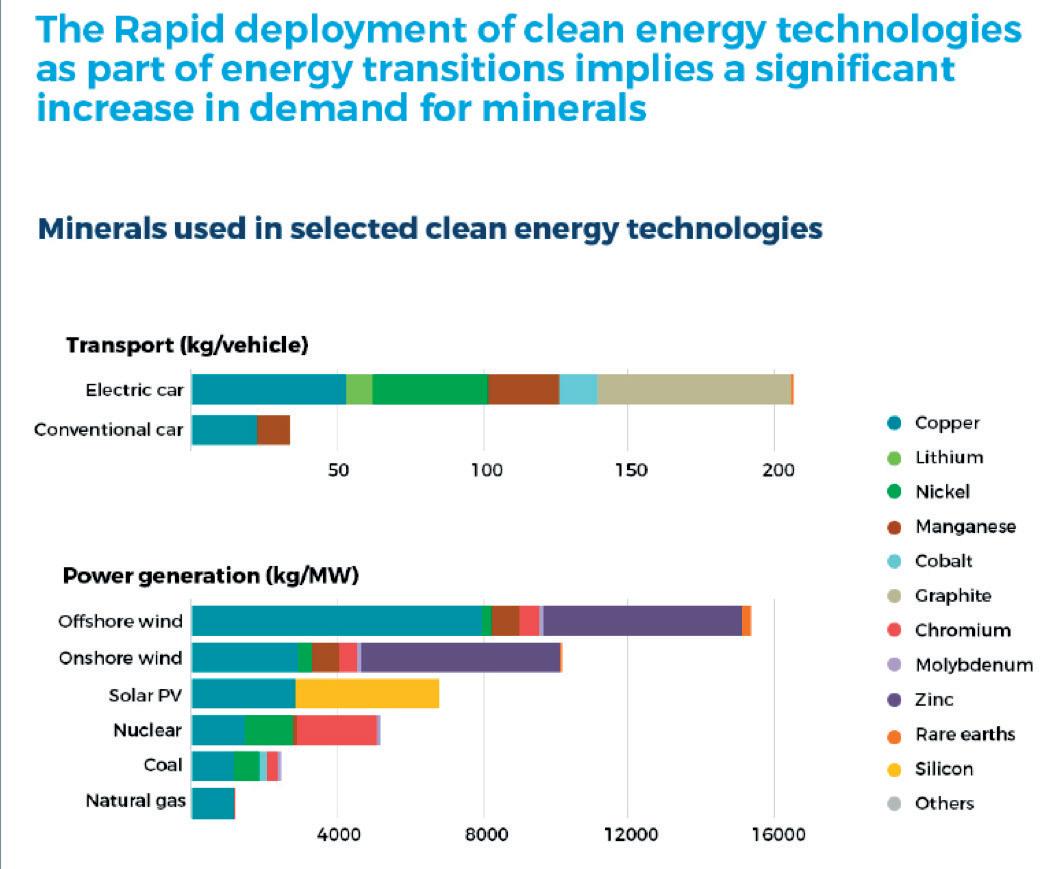
Once data is available and contextualised, sustainability KPIs can be monitored and improved. Typical sustainability KPIs include energy consumption, water consumption and loss, GHG emissions, waste generation, and environmental events. With contextualised data, the operational team can optimise production, aiming to improve KPIs according to the company’s goals and ensure environmental compliance. Companies must ensure operations execution is properly managed. Most companies struggle to consolidate real production and resource consumption with inventory. This is usually done as a manual reporting process that takes time and is not reliable. Production management systems enable users to perform data reconciliation (DR), and to find the optimum balance between production performance (delay accounting, production reporting, as well as knowledge management) and inventory (inventory management, grade control and tracking, and material accounting). Today, these systems combine efficiency and productivity with sustainability, by adding additional parameters to the model: water and energy loss accounting, environmental event root cause analysis (RCA), and consumption versus production reporting. With these elements combined, it is possible to track sustainable overall equipment efficiency
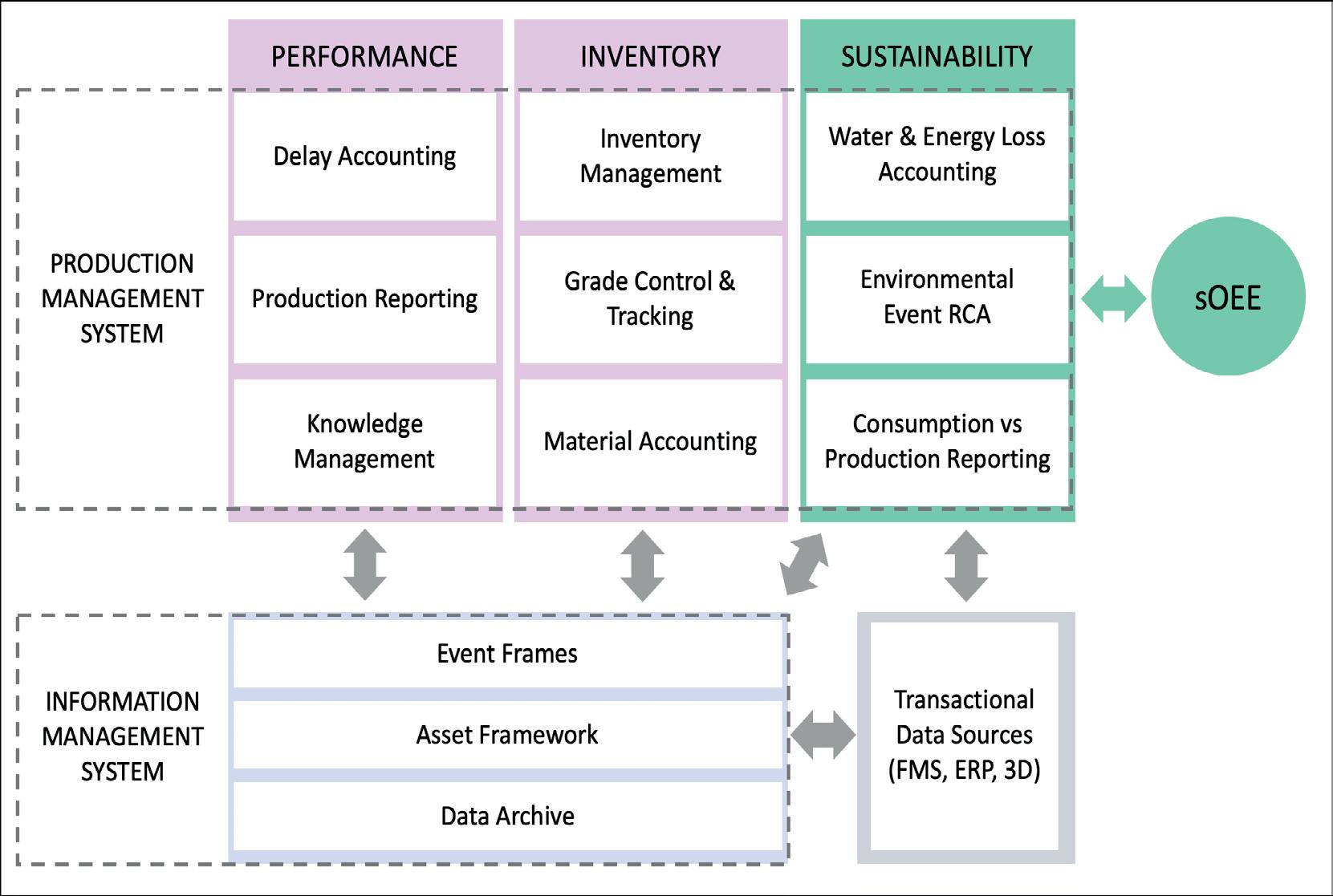
Since 1937, Fletcher has been answering some of underground mining’s toughest questions. At Fletcher we provide more than solutions, we provide an atmosphere for an open dialogue with customers to ensure their operations are reaching maximum efficiency. Fletcher provides lifetime support through an experienced, knowledgable team of sales staff, engineers and field service technicans. Is your operation facing obstacles that mass produced equipment isn’t addressing? Get your custom solution started today. Learn more at www.jhfletcher.com
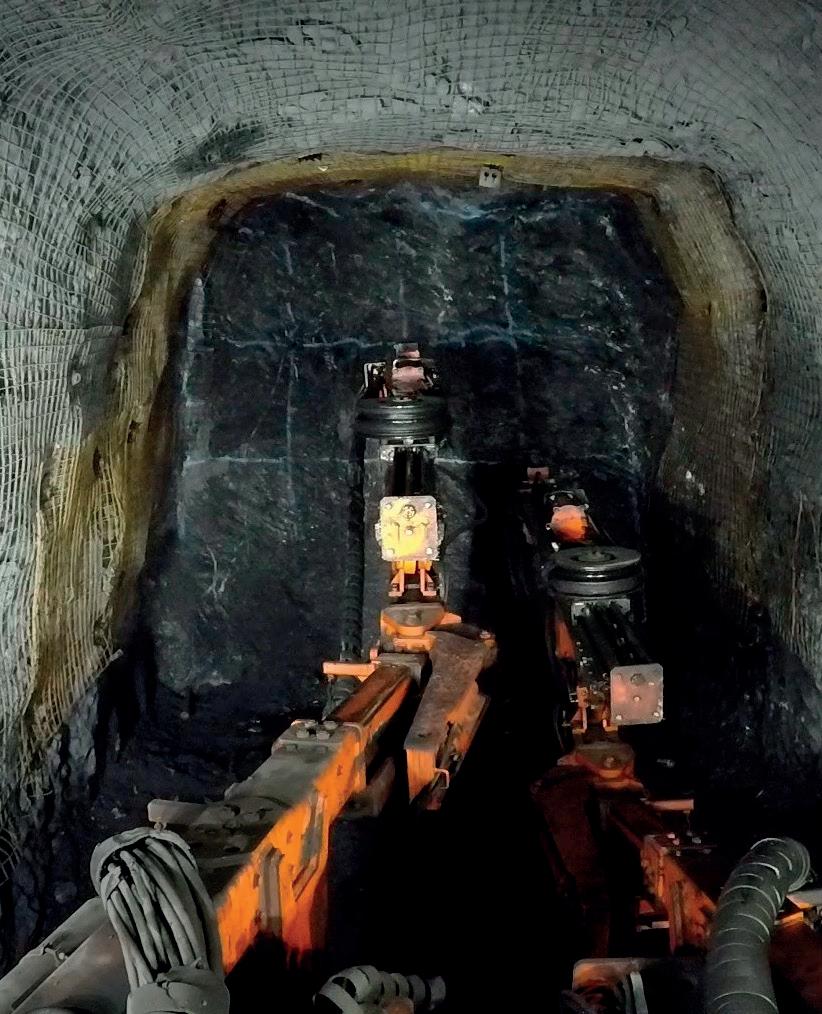
(sOEE): sOEE = sustainability x availability x performance x quality (Figure 2).
Mining supply chains from pit to port have long focused on achieving throughput and addressing bottlenecks while achieving product grade, and this has frequently been addressed through home grown manual or heuristic planning solutions relying on built-up operator knowledge. Today, however, additional constraints around ESG factors, together with sustainability considerations, means there are increasingly complex trade-offs to be considered. Correspondingly, there is an increasing need to turn to optimisation-based systems that can rapidly explore a vast array of objectives, evaluating trade-offs in order to simultaneously address throughput, quality, and ESG constraints – such as water usage and energy consumption, in addition to carbon and particulate emissions. The latest digital technology available brings the power of optimisation to bear on mining supply chains, particularly where complex processing is involved together with a broad range of objectives, as exemplified in Figure 4.
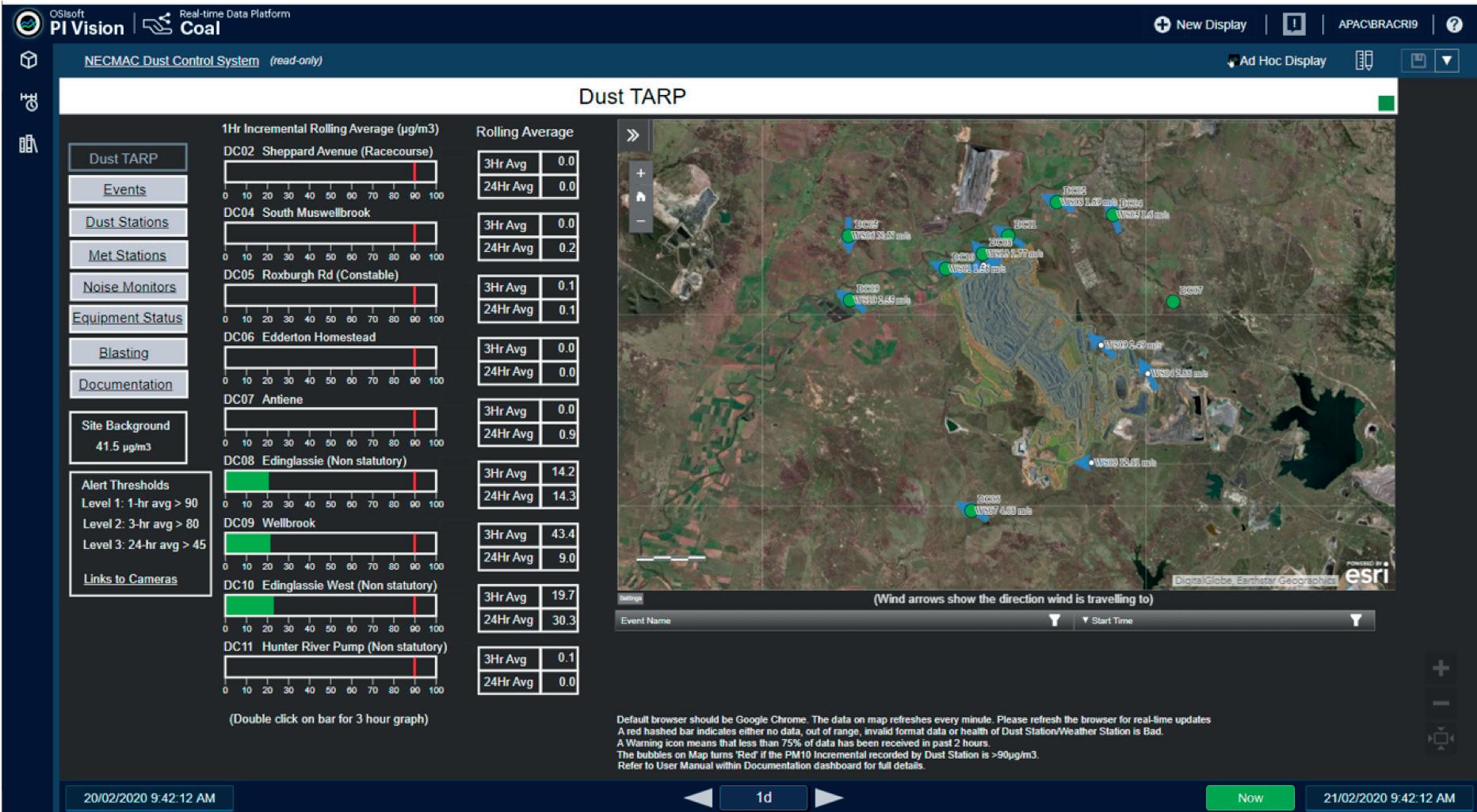
BHP is committed to playing a leadership role in responding to climate change and the use of natural resources. To minimise the impacts of its operations at every stage, BHP manages environmental risks and ensures compliance with existing legislation and its internal policies.
Across BHP’s Minerals Australia, six environmental systems operate independently. Due to disperse data, BHP faced several issues, including: unreliable data with inconsistent formats; difficulties analysing long-term trends; limited options for displaying, analysing, and reporting; and heavy reliance on vendors’ calculations and outputs. To address these issues, BHP implemented its Environmental Data Management System project with the following vision: “Support the business to focus on environmental performance, by providing environmental information efficiently by leveraging technology.”
The project requirements included:
n Capture measurements taken at specific locations over time at different frequencies.
n Trend measurements over time and raise alerts when variables were out of limits.
n Visualise information geospatially.
n Analyse environmental measurements and combine them with operational data.

n Produce reports and dashboards.
The solution combined operational data management (to collect, contextualise, and analyse time series data), geospatial analysis and mapping software (geographic information system),











and tomorrow and the next day and next year and the year after that....
Clear voice communication that you can actually HEAR in a noisy environment is just one of the many capabilities of an IWT SENTINELTM System.


And, because IWT is a trusted partner to the mining industry, we are committed to providing innovative solutions both today and well into the future. SME
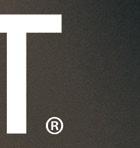


and an analytics solution (to explore and visualise data through dashboards). The Environmental Data Management System included:
n Data across 35 operational sites in Australia.
n Modern map interface with trends, reporting, GHG calculation, recording of water use, and sample management.
n Features for search locations and information.
n Events and alerts.
As a result, BHP teams now have a system that provides: data quality, compliance, easy data finding, standardisation, better performance, governance, in-house support, lower costs, mobility, collaboration, and scalability.
MMG implemented a production management solution to standardise asset utilisation across five mines globally, increasing asset utilisation by at least 10% across the sites.
The standardisation aimed to achieve ongoing measurement, analysis, and reporting of production losses due to better equipment utilisation; the ability to perform root-cause analysis of less-than-perfect utilisation of equipment assets; and to be able to complete integration with other systems to enable single sign-on.
MMG was looking to define the maximum sustainable rate for processes (which could differ between sites); achieve the appropriate level of automated data capture at the instrumentation and data collection layers; standardise the time-usage model (TUM), cause codes and classification matrix across all five current operating sites globally; and to adopt new work practices, given the extensive work experience of people within each operation.
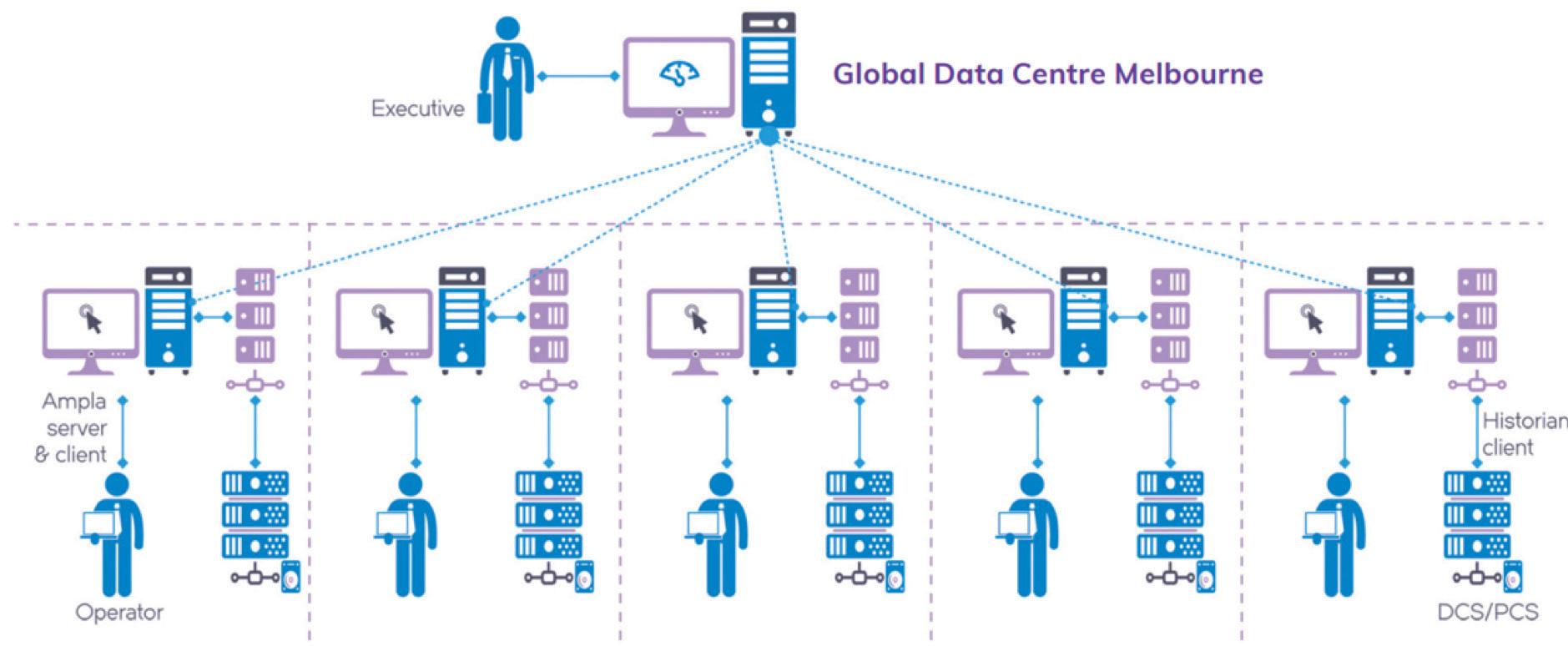
As a result, MMG achieved:
n Significant productivity improvements.
n Process constraints and bottlenecks exposure and understanding, as well as efficiency gains.
n Clear root cause analysis (native drill-down capability).
n Clarity on how to achieve optimum productivity.
n Improvement of assets, resources, and processes.
n Increased asset utilisation by at least 10% across the sites.
Production efficiency is a key component of sOEE (illustrated in Figure 2). It is impossible to achieve sustainability without efficient operations.
Digital technology can help mining companies improve their sustainability results while maintaining profitable operations. Digital technology includes a wide range of applications and solutions that must be selected in accordance with each company’s specific needs and goals, as well as the digital maturity of its operations.
It is important to select digital solutions that allow mining companies to leverage existing applications and control systems to preserve previous investments. The integration capability among applications and strategy for knowledge transfer from vendors are also relevant aspects to consider.
In the two case studies presented, it was demonstrated how digital technology enabled data access, information management, context clarity, and easy visualisation of KPIs to drive improvements. Combined, these create the essential foundation to accelerate the journey toward the sustainability goals of mining companies. As mining companies advance on their digital maturity strategies, they will become more and more capable of making better and more responsible use of natural resources, building sustainable mining operations for future generations.
1. RUSSELL, G., ‘Global energy transition set to spark minerals boom’, Asia Financial, (9 June 2021), www.asiafinancial.com/global-energytransition-set-to-spark-minerals-boom
2. ‘Presentation: Mining responsibly & sustainably: BHP’s environmental monitoring solution using PI System & GIS’, AVEVA, (2021), https://resources.osisoft.com/presentations/mining-responsibly-andsustainably--bhp-s-environmental-monitoring-solution-using-pi-systemanda-1x/
3. ‘MMG Generates Large Returns by Focusing on Continuous Improvement’, AVEVA, (2020), www.aveva.com/content/dam/aveva/documents/ perspectives/success-stories/mmg-limited-07-20.pdf
Holger Pfriem, Dafo Vehicle Fire Protection, Sweden, analyses the different fire risks surrounding the use of heavy equipment at mines, and discusses how mine operators can act to minimise downtime and optimise safety.
The global mining industry continues to work long hours over consecutive shifts, which is seeing today’s overground and underground heavy-duty mining equipment being used 24/7 to meet tight work schedules. Operating in an extremely high-risk environment – with excessive dust and dirt, extensive vibration, and prolonged vehicle use – heavy duty mining vehicles and machinery are inevitably susceptible to elevated fire risks.

A mine’s individual risks will depend on its unique fire risk assessment, which will consider the mine operations as a whole, with focus on how the vehicles and machinery operate in a given context. However, there are several key fire risks that often affect heavy equipment at mines.
Predictably, due to the nature of a mine’s harsh and high-risk operating environment, mine vehicles and machinery are prone to accumulating dirt and dust when in use.
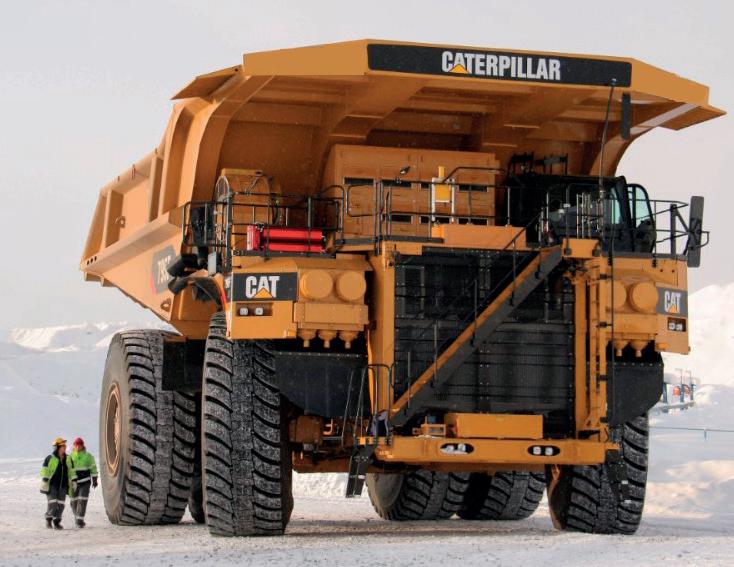
Of course, maintaining a clean engine compartment reduces associated safety risks, but for industries that naturally generate excessive dust and dirt through everyday operations, such as mining, it is often more
complicated to keep equipment clean. However, if this is not controlled effectively, it can contribute to an increased risk of overheating.
Although overheating alone does not necessarily constitute fire risk, when combined with other factors, it can lead to greater safety concerns. For example, as mining vehicles are frequently in operation for extended periods of time, the prolonged vibration this brings can increase friction between equipment’s components. Over time, this will accelerate vehicle wear and tear, which also furthers the risk of overheating.
If not monitored closely, this wear and tear may result in loose cables and sparks, or damage to a combustion engine vehicle’s injection pipe, causing leaks, for example. When combined with overheating, these scenarios can result in highly-dangerous, fast-spreading electrical or spray fires.
Uncontrolled overheating, although inevitable, will often lead to larger problems that can then cause increased fire risk.
As businesses and industries across the globe look to reduce the environmental impact of their operations, many are seeking sustainable alternatives to carbon-intensive practices.
In the mining industry, this is seeing many mine operators adopt electric vehicles (EVs) and hybrid electric vehicles (HEVs) as a more sustainable, alternative fuel source to traditional diesel combustion engine vehicles.
Although arguably less prone to overheating, EVs and the electrical components of HEVs do bring about a different kind of fire risk to mining operations. That risk stems from the lithium-ion (li-ion) batteries powering them.
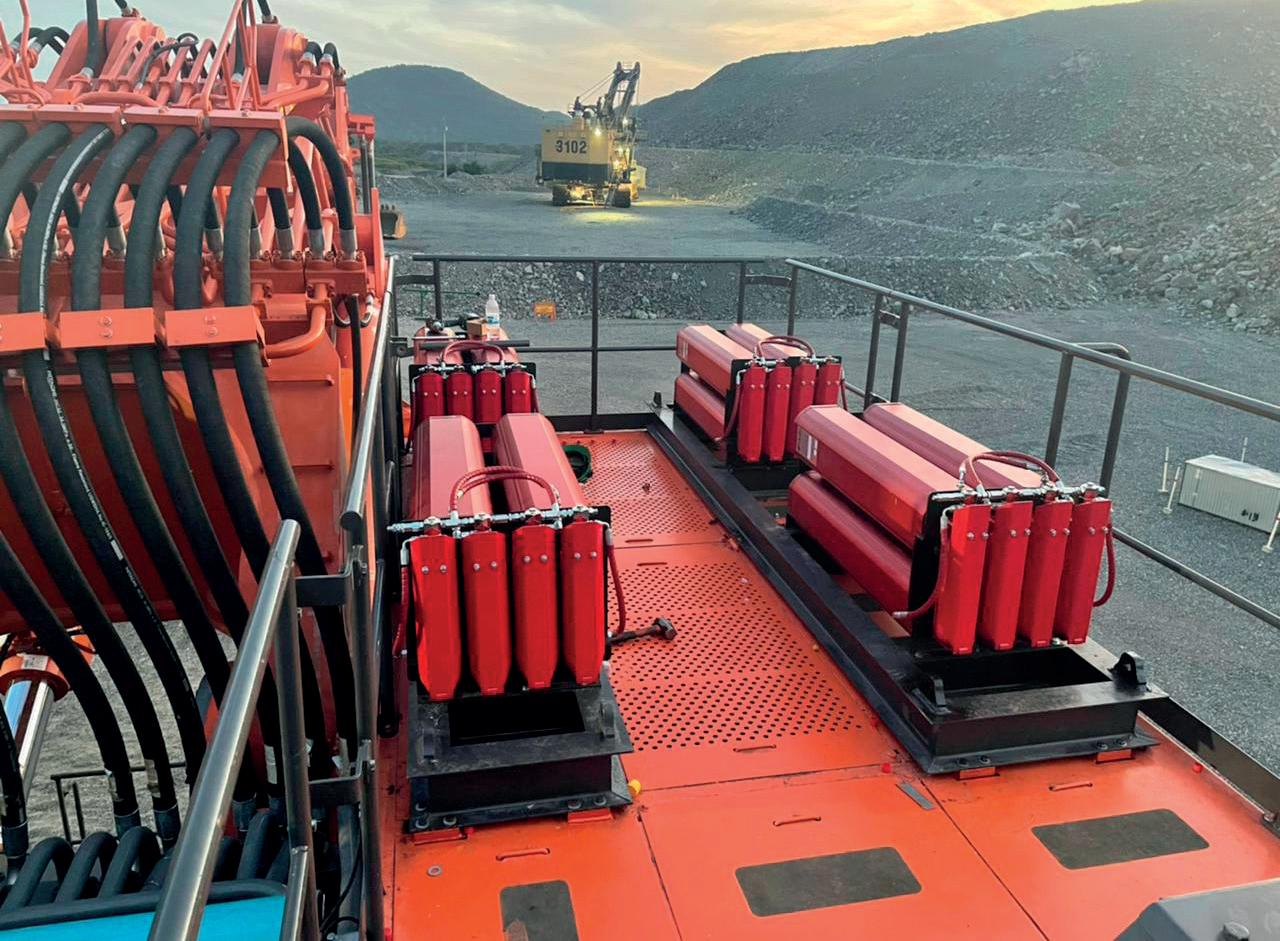
There are four main reasons a li-ion battery fire may occur:
n Overcharging or undercharging: This is where the battery power is drained too quickly, or charges too quickly. The location of charging points is also important, for example, because charging outdoors/in direct sunlight can bring about further risks.
n Mechanical influences or failures: These can occur for a variety of reasons, such as a vehicle collision, or as a result of prolonged, hard vibration.
n Exposure to heat: Li-ion batteries are extremely sensitive, and temperatures should be regularly monitored and controlled. If operating near to external heat sources or outdoors in
direct sunlight, additional risk mitigation measures may be necessary to ensure safety.
n Production fault: For example, where particles are able to enter the battery cells. As a li-ion battery is compact, with thin cell layers within the battery itself, any external particles – no matter how small –can break or damage internal components. This can lead to short-circuits and non-function.


Each of these scenarios can lead to internal shortcircuits, which can put the battery at increased risk of thermal runaway. Thermal runaway is an extremely dangerous state, where the battery experiences rapid temperature increases, which can quickly lead to fire, toxic gas emissions – including carbon monoxide – and potentially large explosions.
These temperature increases are a critical sign that thermal runaway is already in progress, at which point the temperature increases can be extremely difficult to control, or even reverse. Ahead of this stage, the li-ion battery will vent toxic gasses as a sign it is entering thermal runaway. At this point, if it is detected, thermal runaway can be reversed and the battery can be returned to a dormant state.
As traditional fire suppression systems can often only identify thermal runaway once temperatures are increasing, a unique protection solution is required. That is, one which can detect the venting of toxic gases before temperatures begin to increase.
Accelerated by the COVID-19 pandemic, the adoption of autonomous vehicles to support continuous mining operations is at an all-time high.
During the pandemic, investment in automation enabled mine operations to continue, while ensuring social distancing and mine worker safety.
By operating driverless vehicles remotely, mine workers were able to increase operational uptime and reduce the health risks associated with mine working conditions.
Although it is a huge step forward for mine continuity, automation does bring about different fire risks that mine operators need to consider and address.
With less personnel on site, and thus less people working close to operating vehicles and machinery (particularly when these vehicles are in use underground, with operators overground), it can be more complicated to detect fire risks and implement the necessary preventative actions quickly.
As a result, there is a growing need for automatic detection and suppression solutions that are able to detect risk quickly and respond almost immediately to the hazard. This, ultimately, decreases the risk of
Cincinnati Mine Machinery Company designed and installed the first Dual Sprocket Conveyor Chain. Our unique design utilizes superior metals and a proprietary heat treatment process for unparalleled strength. Our Dual Sprocket Conveyor Chain runs longer and stronger which means less downtime and lower cost per ton. So when it's time to choose, choose the strongest chain under the earth. For over 90 years, Cincinnati Mine Machinery continues to be THE STRONGEST L
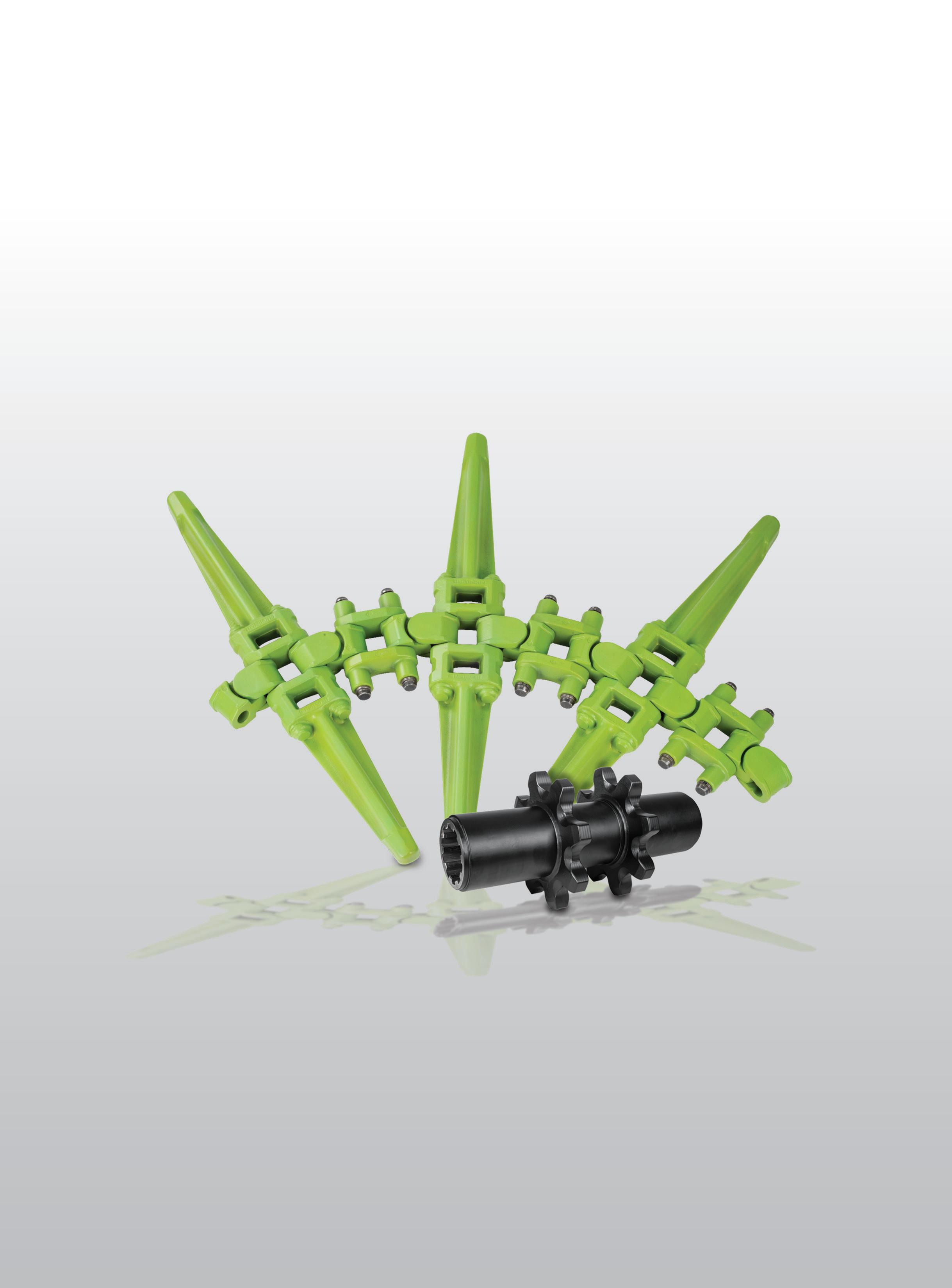
downtime and damage to the vehicle and other surrounding valuable assets.
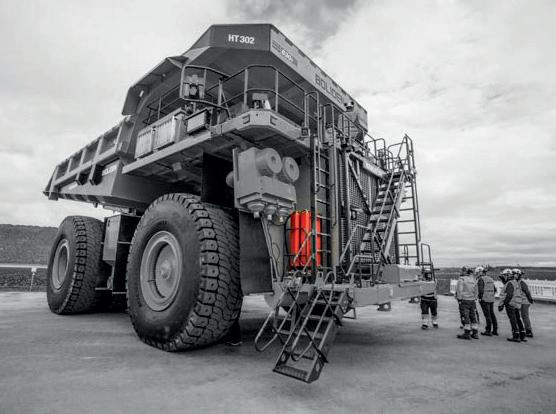
There are 10 key steps mine operators can take to reduce the various fire risks associated with heavy vehicles and machinery; these are:
n Understand the risks: Every vehicle – electric or diesel, manual or automatic – carries its own unique fire risks, which need to be understood to mitigate them effectively. Operators should seek to understand the associated fire risks before integrating new vehicles and machinery to operations.
n Reconsider the risk assessment map: As technology changes, and new vehicles and machinery are added to a site, the risk assessment map should be revisited and reassessed correspondingly.
n Selecting a detection system: Fire detection and suppression solutions should be tailored to each individual site’s needs. Different systems are best suited to protect against different risks.
n Understand li-ion battery chemistry: When protecting EVs, it is important to understand the battery chemistry in order to select the best solution. Research from Research Institutes of Sweden (RISE) and Dafo Vehicle Fire Protection found the most effective way to prevent thermal runaway for li-ion batteries is with an early fire warning system and spot cooling. 1
n Choose the right suppression agent: Different suppression agents will be suited to different applications. For example, for EVs, an agent that is specifically designed for electrical application, that can extinguish and prevent reignition successfully, is often most suitable. It may also be important to ensure the agent is non-corrosive, in order to prevent further vehicle damage.
n Minimise false activations: It is essential that the used systems are compatible with the vehicle technology. If a suppression solution is incompatible with the vehicle it is protecting, it can result in a number of false activations and unnecessary downtime.
n Protect all equipment: Although protecting new equipment is important, mine operators should also ensure all existing equipment is effectively protected, such as traditional combustion engine vehicles.
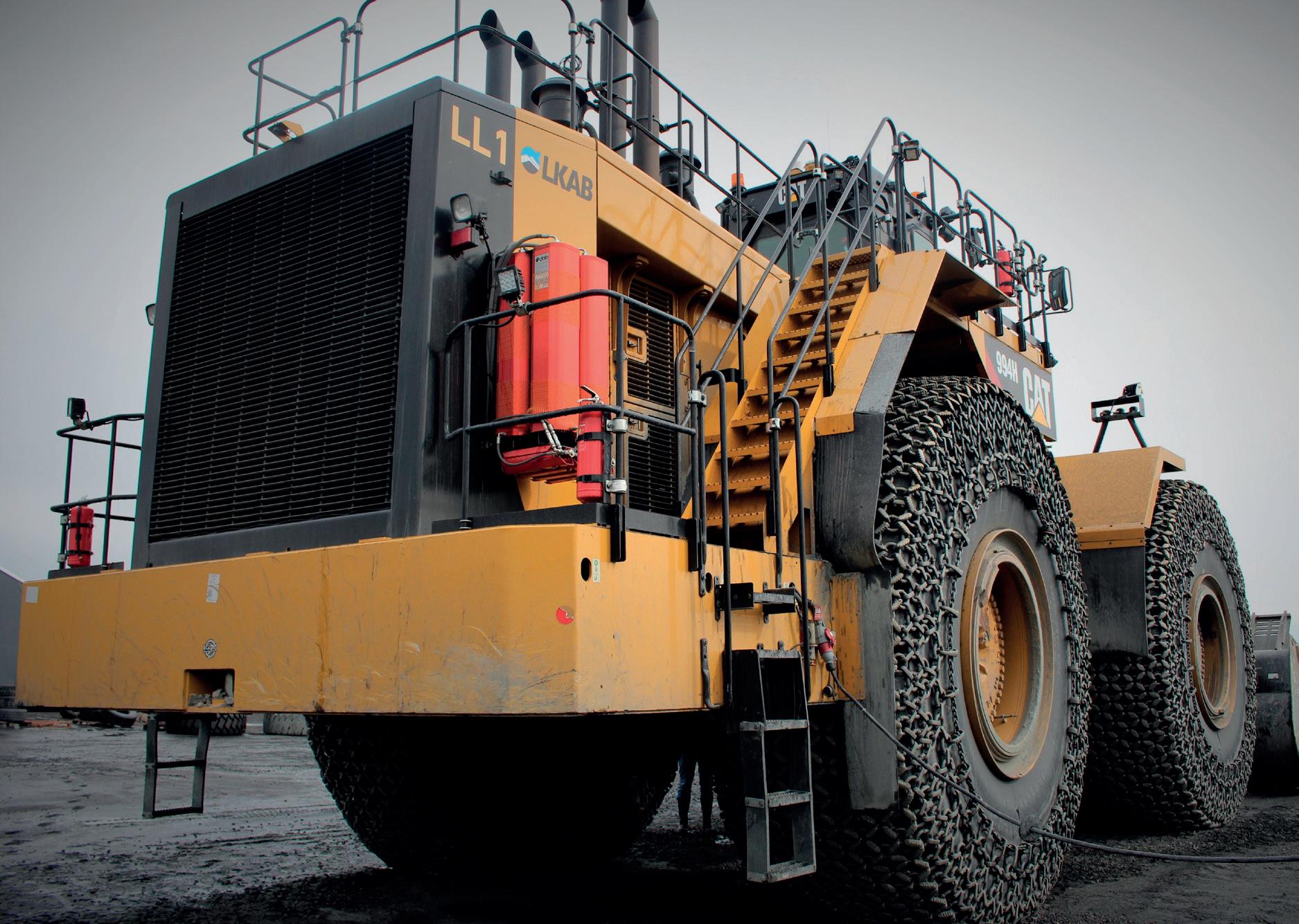
n Ensure regular maintenance: A site’s safety only begins with installing the right detection and suppression solution. Mine operators also need to ensure it is well-maintained to safeguard effective operation.
n Train key personnel: Mine operators should ensure that there is always someone on site who is suitably trained in the safe and effective use of the fire detection and suppression solutions, so they know how to act in the event of an emergency.
n Consider the site as a whole: Operators should look at how new vehicles and machinery will interact with existing operations. E.g. where will charging points be located for EVs? Does this pose an additional fire risk?
Suppressing a mine’s fire risks is about developing a tailored solution to address its individual risks effectively – maximising safety and minimising downtime.
1. ‘Pioneering system to greatly reduce risk of fire in electric buses’, Cordis: EU research results, (2019), https://cordis.europa.eu/article/id/413392-pioneeringsystem-to-greatly-reduce-risk-of-fire-in-electric-buses
Joe Bacon and Shivan Singh, Becker Mining, Canada, examine the role of air ventilation systems in underground mines and why they are essential for mine safety.

Access to fresh air in the underground environment is essential to any mining operation. With ventilation systems being one of the largest costs that mining companies bear, it is vital that they operate as efficiently as possible, with minimal downtime. In an ideal scenario, ventilation would first be provided to those areas where the concentration of people and equipment is the greatest, and unoccupied or abandoned areas would have reduced
ventilation flow. This approach has led to the adoption of ventilation on demand (VoD) systems.
Robust, reliable, and accurate personnel and asset tracking is pivotal to effective VoD systems. Real-time tracking of personnel and vehicles allows for a VoD system to prioritise airflow to those areas that need it the most. A proper VoD
system requires a highly reliable stream of data from a robust tagging and tracking system. A good tagging and tracking system will feature high-precision tracking, which involves strategically placed tag-readers. These tag readers are instrumental in relaying personnel, vehicle and other heavy equipment’s location information to surface, which can then be used to automatically run ventilation systems in a specific area, and even adjust fan-speeds for flow requirements, depending on what vehicles and personnel are in the area. To elaborate, vehicles can be fitted with tags that include vehicle-specific data with regards to both emissions and oxygen requirements, in order to ensure the proper function of their engines and proper ventilation of their exhaust fumes. These values, coupled with a CFM airflow requirement per person, can then be used to activate a VoD system and adjust its speed.

Measuring the number of people and vehicles in an area is not the only important aspect of VoD systems. It is equally vital to measure the concentration of gases in work areas and throughfares. The build-up of dangerous or toxic gases can prove to be fatal to workers, and an effective VoD system will identify the presence of undesirable gases, and will act before the situation becomes dangerous, allowing personnel to perform daily tasks underground safely and efficiently.
The absence of dangerous gases in an environment is not a guarantee that the area will always be safe. By the very nature of mining, new ground is continuously being broken to access and expose ore bodies. This process often results in the release of noxious gases, such as methane and sulfur dioxide. Moreover, the processes used require the use of machinery that can release harmful gases. For example, diesel vehicles that are used to transport people and equipment release carbon monoxide, carbon dioxide, and gaseous hydrocarbons. The concentration of these gases in an area can swiftly escalate and pose a threat to human life.
The dangerous mixture of different gases has varying effects on human health and mine-safety. With strong safety regulations, many mines have used the smartsense® system in order to reduce the time interval before workers can safely return to the face after a blast, when previously having to wait a predetermined length of time to take the necessary gas readings. State of the art gas and airflow monitors should be installed in key locations to provide real-time sensor data, which can be used to determine the demand for ventilation and trigger operation, based on a pre-configured set of conditions. Testing and maintenance schedules then become a crucial part of operations, in order to minimise down-time and keep personnel safe with systems running at optimal efficiency.
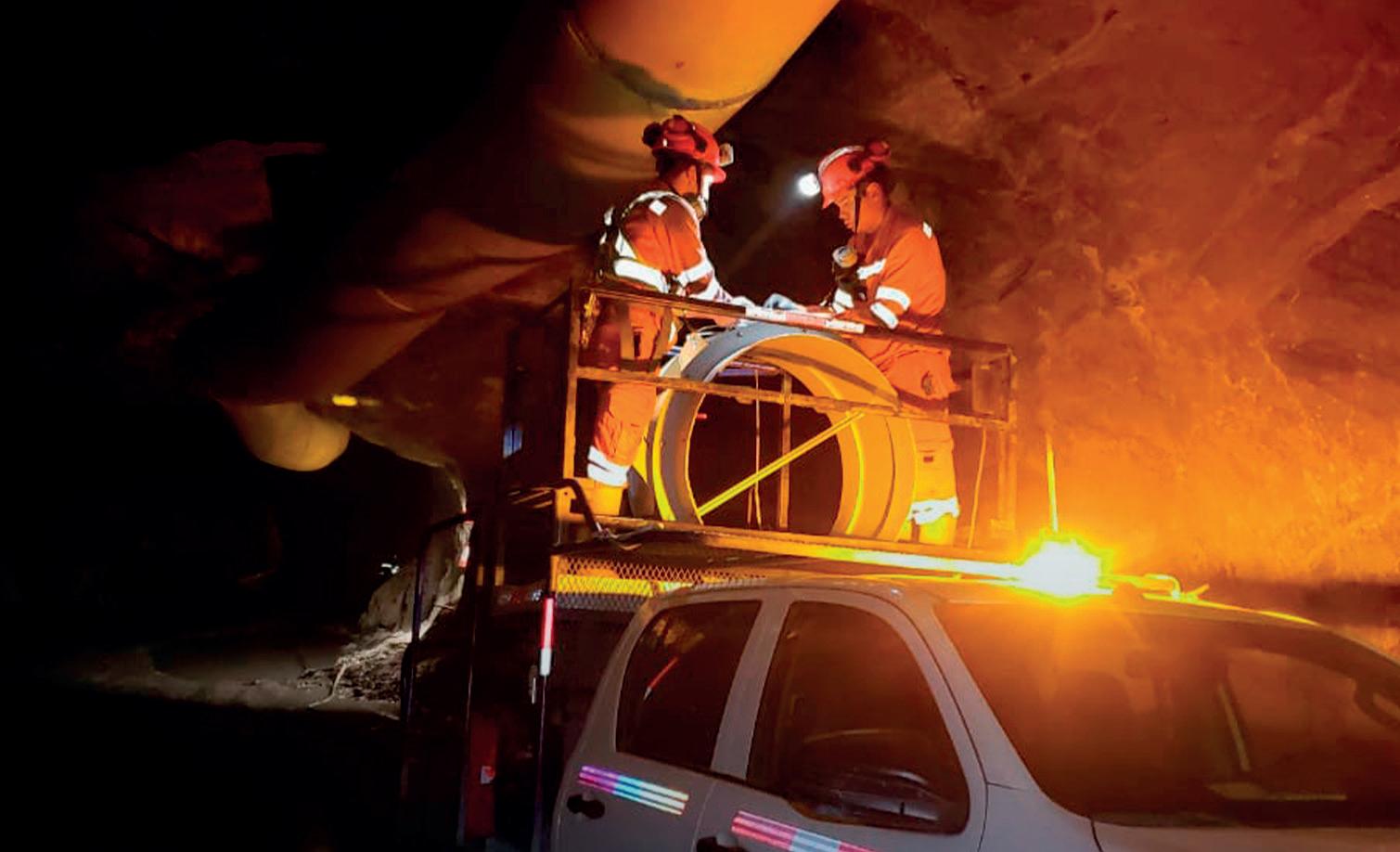
Each gas monitor can simultaneously sense multiple gases, including: oxygen, methane, carbon dioxide, carbon monoxide, hydrogen sulfide and nitrogen dioxide, to name a few. These devices also have integral safety features, including the capacity to warn all miners of the presence of harmful gases. This can be done both locally; by using both visible and audible alarms, and remotely; through the use of onboard digital and analog I/O, which can be transferred via Wi-Fi or RS-485, triggering personnel to evacuate the area until proper measures have been taken to address the situation.
The mining sector requires intelligent systems to protect its employees and valuable assets. Because of this shifting landscape, Becker Mining Systems has developed a collection of products that provide clients with automated ventilation control systems and gas monitoring packages that help to facilitate the running of a safe and efficient operation. An effective software package with an intuitive interface should be implemented for quick and easy interpretation of data being collected from personnel, instruments, equipment, and vehicles. In the industry 4.0 era, large quantities of data are being gathered over networks with negligible latency, putting operational visibility and control at the forefront. A software package to consider here would be Smartflow®; a system that integrates state-of-the-art technological solutions, based on the identification of all the operational flows that exist in areas of interest in real time. It integrates the monitoring of communication networks and sensor signals to achieve the concentration of information in a single system, contributing to the continuous improvement of production processes, increasing safety
levels and sustainable development. This software package provides users with a tool to effectively extract useful information from the constant flow of raw data, synthesising new datapoints, and putting this information to use by configuring notifications, generating alarms, or reviewing operations to realise new efficiencies.
Of course, all this data requires a fast and reliable pipe to travel. The faster the network upon which the VoD telemetry is transferred, the lower the latency which yields fewer delays, and a more efficient system – this makes the smartcom® long-term evolution (LTE) network effective for low-latency data-intensive applications. With a similar layout to existing leaky feeder infrastructure, smartcom LTE can provide high-speed data at all levels of the mine, using a hybrid of Ericsson™ hardware, radiating cable, and accompanying technology for ensured quality. Apart from VoD, this network can be used for other data-hungry applications, such as: autonomous vehicles, mission-critical communications, real-time asset tracking, vehicle telemetry, instrumentation telemetry, heavy equipment telemetry, video conferencing for remote troubleshooting, and other remote applications.
Combining Smartflow, smartsense, and smartcom LTE to automate ventilation controls is an efficient method that provides miners with the ability to customise a proper monitoring solution for any mining operation. With configurable software suites, modular equipment and
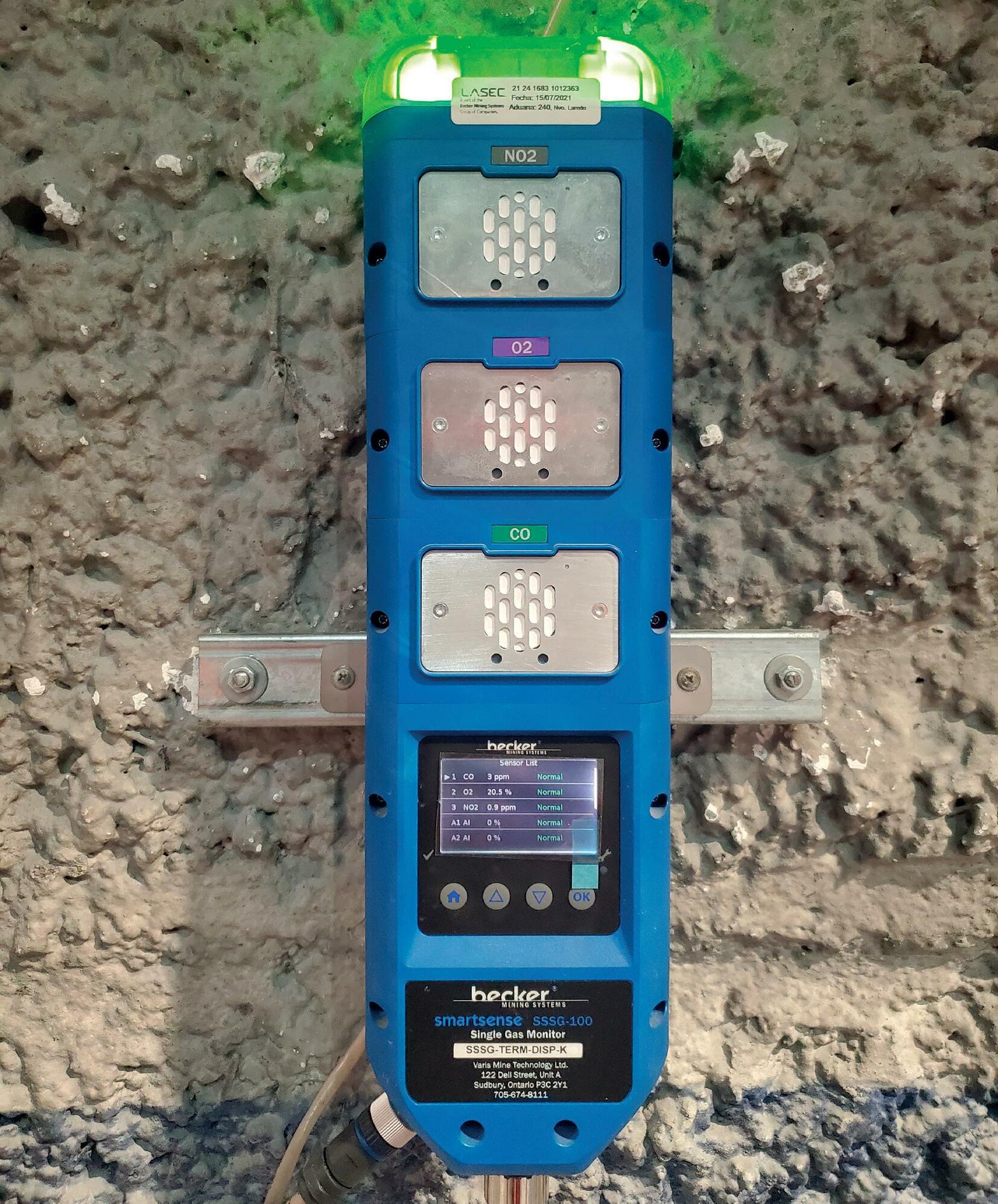

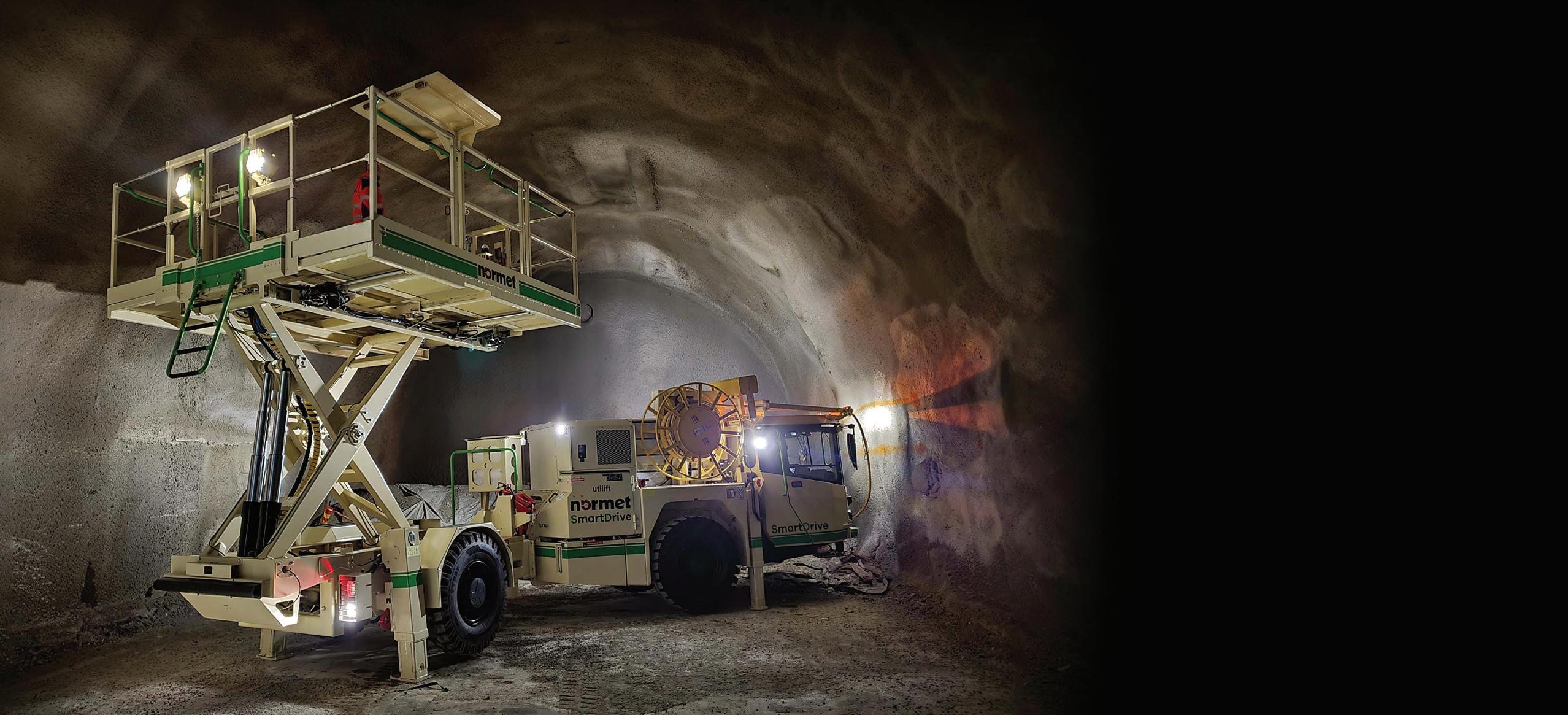 various network options, Becker Mining Systems is well positioned to provide tailored turnkey VoD solutions.
Figure 3. SSSG Gas Monitor with three active gas sensors.
various network options, Becker Mining Systems is well positioned to provide tailored turnkey VoD solutions.
Figure 3. SSSG Gas Monitor with three active gas sensors.

Amanda Adams and Anna Norris, Stantec, USA, explore how the right mixture of EORs, technologies, and ESG practices can be crucial in developing successful tailings management.
Tailings management is top-of-mind for many mine owners and operators. Implementing sustainable environmental, social, and governance (ESG) practices is also a hot topic. There is lots of talk surrounding the shortage of qualified engineer of record (EOR) candidates – and what this means in terms of meeting industry demand – how ESG and EORs are related, and whether it is possible for mining companies to look outside of traditional candidates to meet both needs.

Tailings management has come to the forefront of many mining companies’ priorities. Demonstrating safe tailings practices is critical in maintaining community and regulatory support,
as well as meeting investor requirements. Many mines will start documenting global industry standard on tailings management (GISTM) compliance for their facilities in 2023. The effort to achieve this high standard requires dedication from teams of people at every mine.
The need for experienced tailings practitioners, both internal to mining companies and serving in supporting roles, such as EORs and external review boards, has revealed a dramatic shortage across the industry. However, it has also created opportunities for exciting and sustainable work to manage tailings and other mine waste diligently and consistently. While the driver to make this change has unfortunately been catastrophic failures, the result has been a renaissance of
information sharing, collaboration, research, and training that the industry will benefit from now, and well into the future. It turns out, the industry was hungry – some might even say starving – for a change, and is now making meaningful, long-term modifications in response to the new requirements.
The first ingredient for successful tailings management is finding the right people for the job. The role of an EOR is no small task, and to conduct all expected tasks and functions, an EOR must have a well-rounded background in distinct aspects of mining and engineering. This is a tall order, therefore the industry must start early in preparing engineers to take on the role of an EOR. Just like a budding chef must begin with cleaning and food preparation, before moving on to sauces and sautés, the process of building an EOR skill set needs to begin early and include education, exposure, and experience. A challenging piece of this is identifying willing individuals and encouraging them to begin their EOR journey.
It can be tough to attract talent to tailings management, but the role of an EOR is a noble goal for any engineer. Given the industry’s focus on sustainability and environmental goals, one way to recruit future EORs is by framing tailings management as
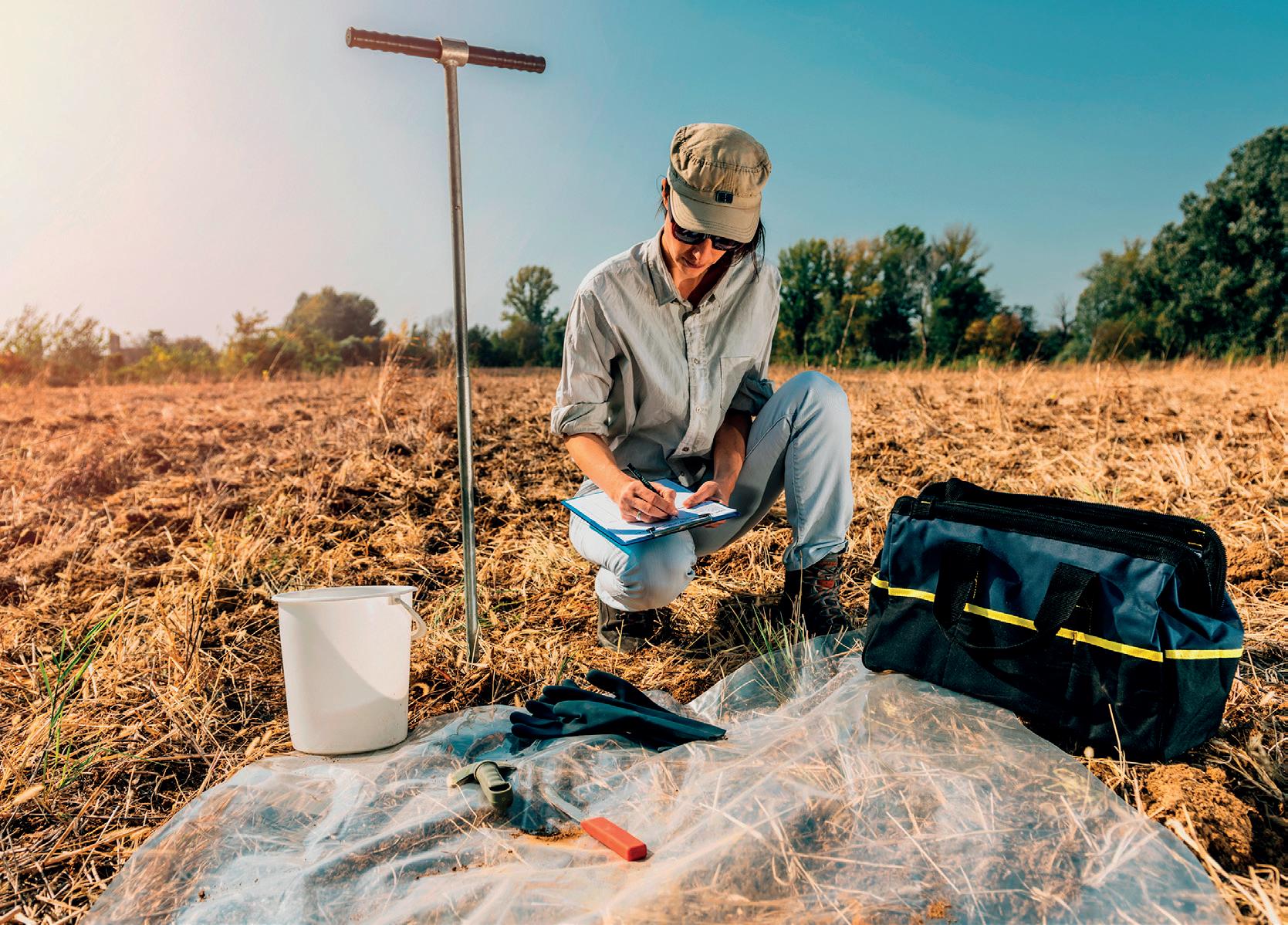
a key part of social and environmental stewardship. It is indeed a major player in both the social and environmental components of ESG. Perhaps the EOR role requires ‘rebranding’ to attract more candidates and increase diversity in the candidate pool. By expanding the role to encompass engineering and ESG goals, more candidates may be interested in pursuing the path, and find a more relatable, worthy purpose in the pursuit of becoming an EOR.

The second ingredient is access to the proper technology and tools to do the job well. Change does not happen overnight, and the immense scale of the need is still being defined. It is not known how many tailings facilities exist, though new research is being conducted to firm up the number. It is, however, known that the quantity of facilities far outnumbers the seasoned tailings professionals available to do the work. That is why the industry needs to become collectively smarter. Everyone in mining has a role to play by communicating good practices, collaborating on research, and proactively sharing results. Mining professionals need to look at available tools for data collection, analysis, and decision making. Using the best data to make real-time, risk-based decisions will lead to the best outcomes.
Achieving those outcomes can be difficult. It starts by having a solid understanding of the design and operation of all aspects of the facility. This requires a strong foundation in geotechnical engineering and soil mechanics as a start, but it does not end there. An understanding of the site geology, hydrogeology, geochemistry, hydrology, and more is also required. In other words, tailings management takes a team. Yet, having more skilled people is not the only change needed. Better data collection systems, more thoughtful instrumentation plans, and timely review and action are also critical ingredients for success. But, more data is not always better. Tailings operations may encounter the following instrumentation and data challenges:
n Not enough instrumentation, or incorrect instrumentation to detect issues.
n Too much data with no way to quickly synthesise it and decide on appropriate actions.
n Delays between data collection and interpretation, resulting in a constantly out of date understanding of conditions.
n Insufficient expertise in planning instrumentation (location or type of instruments) or interpreting results.
Regardless of the data collection or instrumentation systems in place, mines still need competent engineering judgement from experienced professionals to pull it all together.
An EOR is critical to the ‘G’ in ESG. Why? Tailings governance is made up of many elements that provide checks and balances to ongoing operations. These elements include surveillance and monitoring, inspections, internal review processes of operations, ongoing construction, planned designs, detailed third party reviews, as well as independent review boards. Although there are many parties involved in these tasks, the EOR is the key player that connects each element, maintains involvement in critical dam safety decisions, and ensures continuity in the effectiveness of the governance each separate effort tries to impart.
The ICMM defines six key components in a tailings governance framework as follows:
n Accountability, responsibility, and competency.
n Planning and resourcing.
n Risk management.
n Change management.
n Emergency preparedness and response.
n Review and assurance.
Within the mix of client and owner, the EOR is a principal ingredient driving these elements into daily operations and ongoing design. The EOR maintains a critical line of communication with involved parties to prioritise technical decisions regarding dam safety. The EOR plays the role of head chef in the busy kitchen and takes on oversight of each step in the process. In doing this, the EOR can make informed decisions and communicate timely recommendations and concerns to the owner. The owner can then balance economic gains alongside risk management and environmental protection.
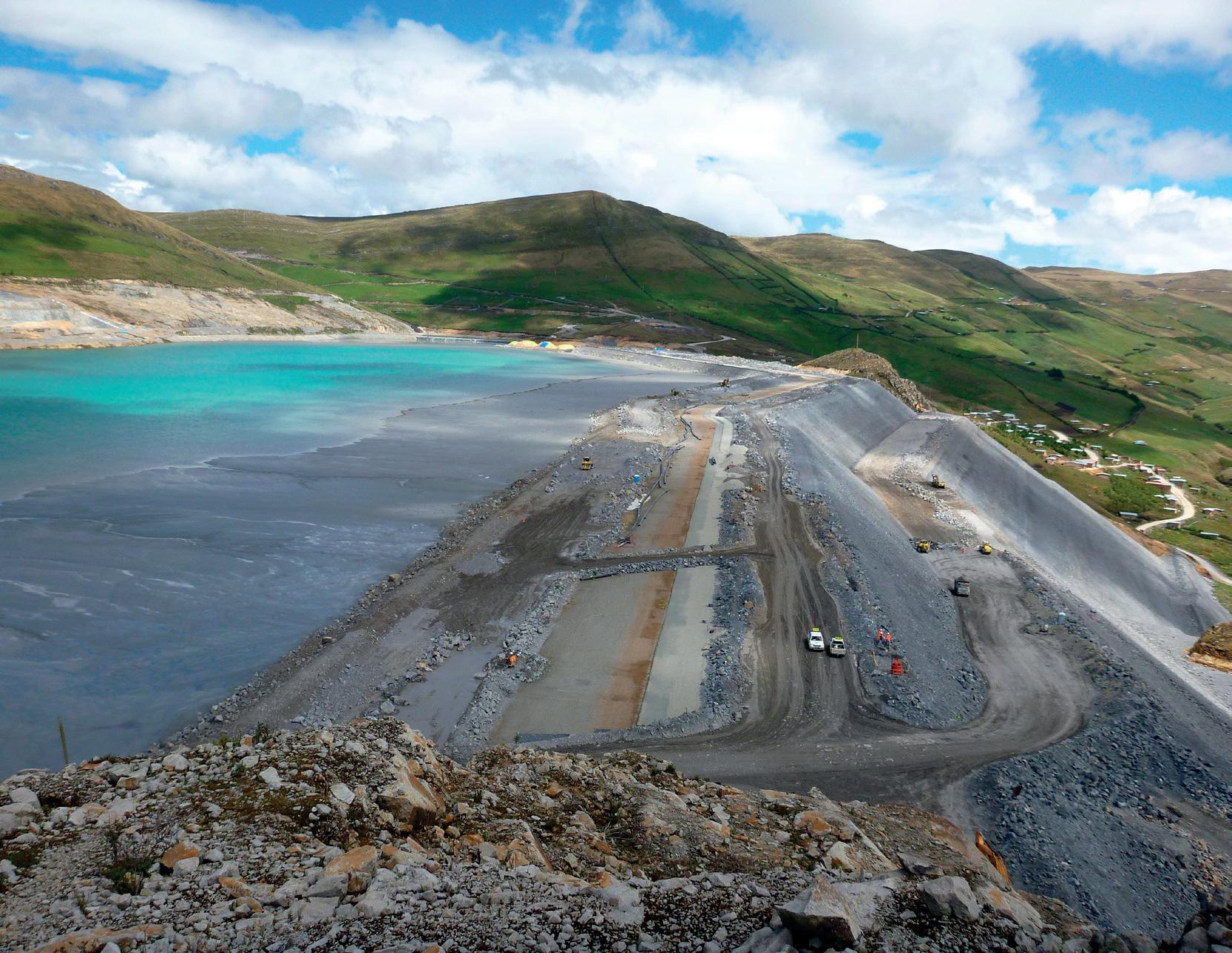

Tailings training courses, degree programmes and micro-credentials are emerging, record numbers of tailings related abstracts and papers are being submitted to mining conferences, and entirely tailings focused conferences have been established. For a long time, tailings were a niche part of the mining industry. Tailings-specific career paths with upward mobility within mining companies were rare. Now, that is no
Wearpact is the premium continuous edge lip for LHDs, suitable for any material and loading conditions.
The consistent shroud profile protects the lip, offering unparalleled wear protection.
We can customize a configuration and profile combination for your site conditions to increase production and campaign life.
The result? Improved productivity through higher machine availability.
When the time comes for replacement, our patented Wedgenut integrated lock system keeps hands out of harms way.
longer the case. Today, the status of tailings storage facilities are regularly presented at the board level of mining companies, and the industry is seeing the formation of entire teams of engineers and operators specialising in tailings.
It is inspiring to see the growth in tailings management over the last few decades. Advances in tailings and waste storage methods introduce safer and more environmentally friendly opportunities that were not seen 10 years ago. It is an exciting time to be a tailings professional.
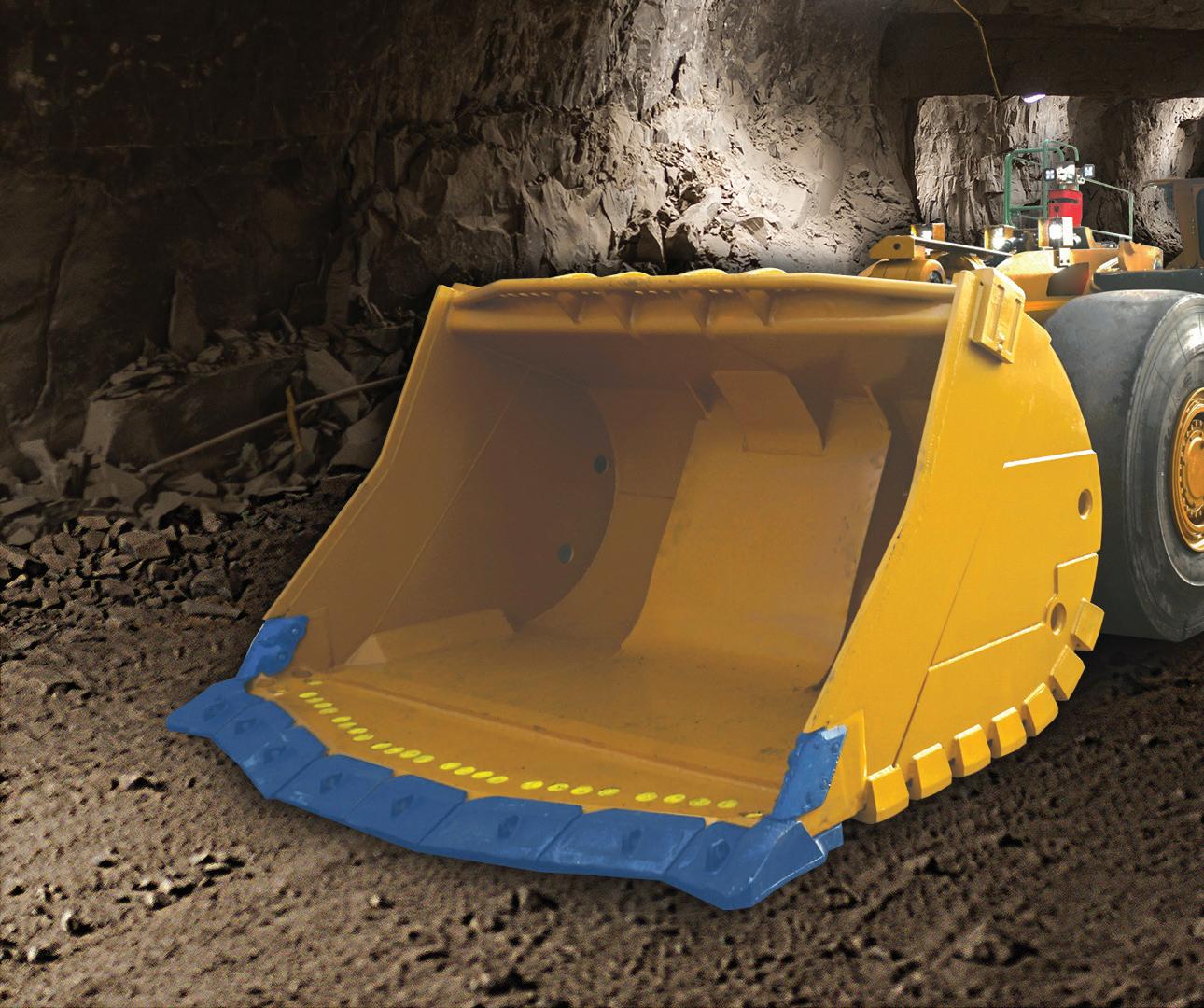
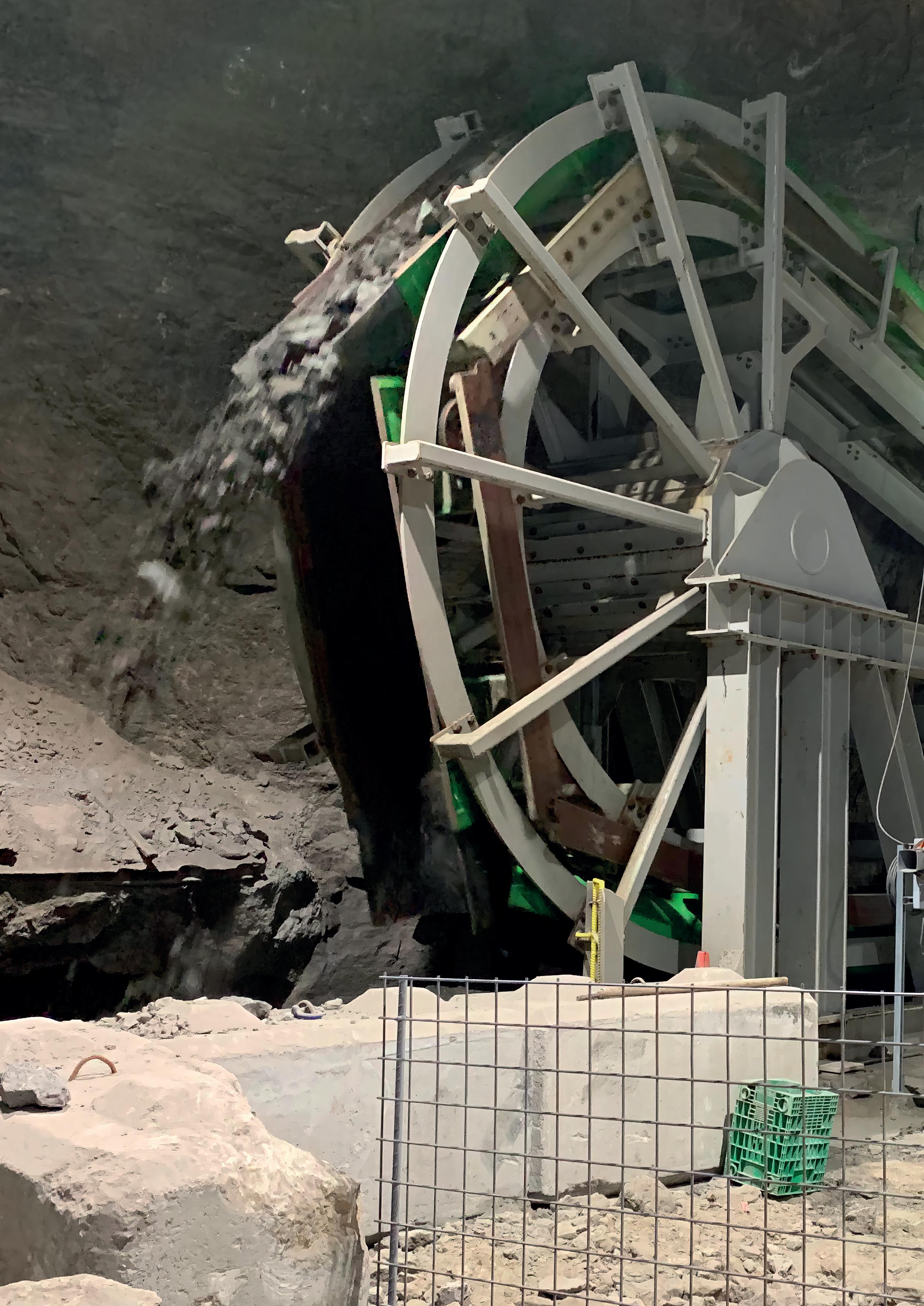
In the mining industry, material haulage may often be the costliest portion of total operational expenditures. Material transport solutions are selected for efficiency; from haul trucks that leverage grand economies of scale, to conveyors that provide a continuous flow of material. To address declining ore grades and the mounting pressure to decarbonise, mining companies are searching for innovations that shift the calculus of efficiency, emissions, and operational advantages.
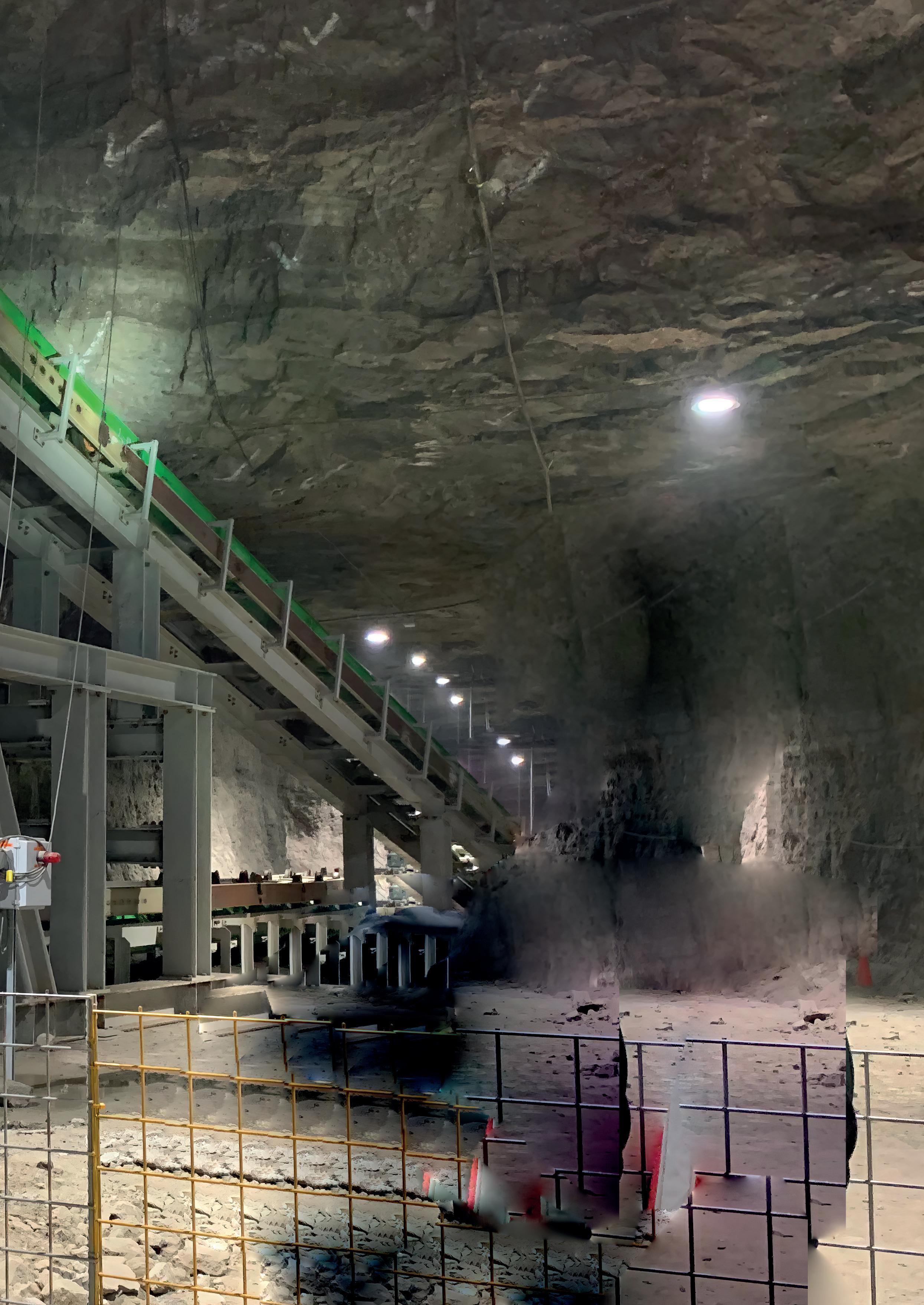
Media outlets have detailed the push to electrify operations and reduce diesel consumption – and in consumer culture, battery electric vehicles (BEVs) hold a prominent place in the popular imagination. However, experts know that haulage systems with fixed infrastructure (e.g. conveyors and rail) have better energy efficiency and lower operating expense (OPEX) compared to mobile equipment. But mine operators, familiar with the perceived limitations of conveyors and rail, sometimes relegate those systems to a limited range of applications. Often, higher capital costs (CAPEX) have prevented mining companies from benefitting – in the long run – from the lower operating cost of fixed infrastructure solutions. Today, there is an alternative system which combines the attributes of conveyors and light rail – the Railveyor™ TrulyAutonomous material haulage system.
Railveyor is an autonomous, electrically controlled and powered light-rail material haulage system, composed of simple components orchestrated by a software programme. Material is loaded onto a train composed of steel cars that form a continuous spill-proof trough. The cars have steel wheels which ride on light steel rails.
The train is propelled by electric drive stations that spin horizontally oriented rubber tyres that are in contact with a side plate on the train, propelling it forward (Figure 1). Railveyor’s TrulyAutonomous software activates the drive stations only when needed; minimising power consumption, controlling
the train speed, and eliminating the need for even a single human operator.
Most companies dictate that the system should be observed during operation by at least one worker. They may do so from a control room, or on a mobile device anywhere with an internet connection. The TrulyAutonomous software gathers data from multiple sensors, and has alert levels for different system events.
The Railveyor train rides on narrow-gauge, light steel rails (generally 30 – 40 lb/yd), exerting a downforce of just 8 psi. The tracks may be laid on a minimal amount of light substrate (gravel). This eliminates the need for costly concrete foundations and civil engineering that are otherwise required by conveyor systems. 800 – 1000 m of track can be installed, disassembled, relocated, and re-installed in a single shift by a small crew using compact construction equipment. The system can utilise any number of load and discharge points, and may use bypass sidings to run multiple trains on the same track. At the discharge points, Railveyor uses a special configuration of track which resembles a roller coaster loop at an amusement park. This proprietary engineered configuration, called the McCall Discharge Loop, completely inverts the train, dumps 100% of the material, and begins the return journey in a seamless motion (Figure 2).
Railveyor is designed from first principles with 21st century technology, in order to achieve optimal physical and energy efficiency. Unlike a typical train, there is no onboard locomotive to contribute to overall weight. Railveyor does not spend energy needlessly hauling its own propulsion system or fuel. It further minimises energy loss through friction by using greased steel wheels on a steel track, and may see a payload-to-weight ratio of 3:1, or even 4:1.
Railveyor edges out conveyors in terms of energy efficiency and OPEX. In a study from sustainability consultant Warm Springs Consulting (WSC), conveyors are shown to
Matt Youngblood, Railveyor, Canada, explains how a fixed, autonomous, and electrically controlled haulage system is preferable to a typical conveyor system for transporting materials in mines.
generally require US$0.06/tkm of haulage, whereas Railveyor requires half that amount (see Figure 3).1
This OPEX advantage may lead to a significant reduction in total cost of ownership over life of mine. In a theoretical scenario created by WSC, hauling 10 million tpy, 10 km, over 10 years, is 48% less costly with Railveyor than with a comparable conveyor system (see Figure 4).
The underlying reason behind Railveyor’s efficiency, in comparison to conveyors, is down to the lack of energy lost through the friction of bearings. Railveyor requires four bearings for every 2.4 m of vehicle (the typical length of a Railveyor car), while conveyors typically require approximately 30 bearings for the same length. Adding points of contact increases energy lost to friction, so more bearings leads to higher relative fuel consumption, OPEX, and emissions.
Using the same scenario parameters of a flat 10 km route hauling 10 million tpy, Warm Springs calculated that a typical conveyor system would require 776 kW of power at average demand, while an equivalent Railveyor system would require just 422 kW.
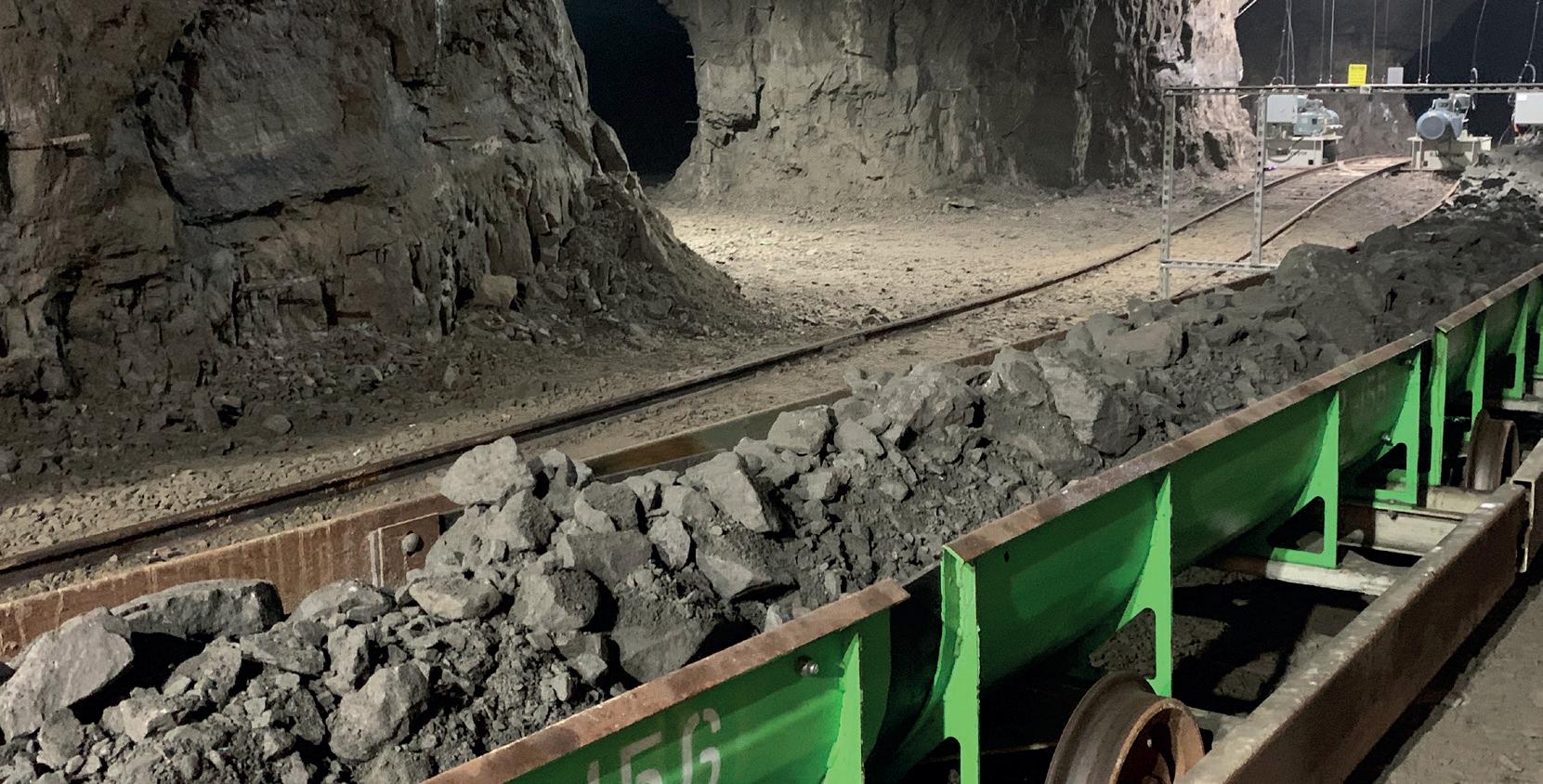
The amount of power required to start a system back up is usually greater than that to keep it running, therefore conveyors may not be able to restart if they are stopped with a fully loaded belt. To restart, the payload may need to be removed from the belt, often by workers shovelling by hand. Conversely, Railveyor systems are designed to be able to stop and restart haulage with a fully loaded train, at any point of the haul route – even when headed up a significant grade.
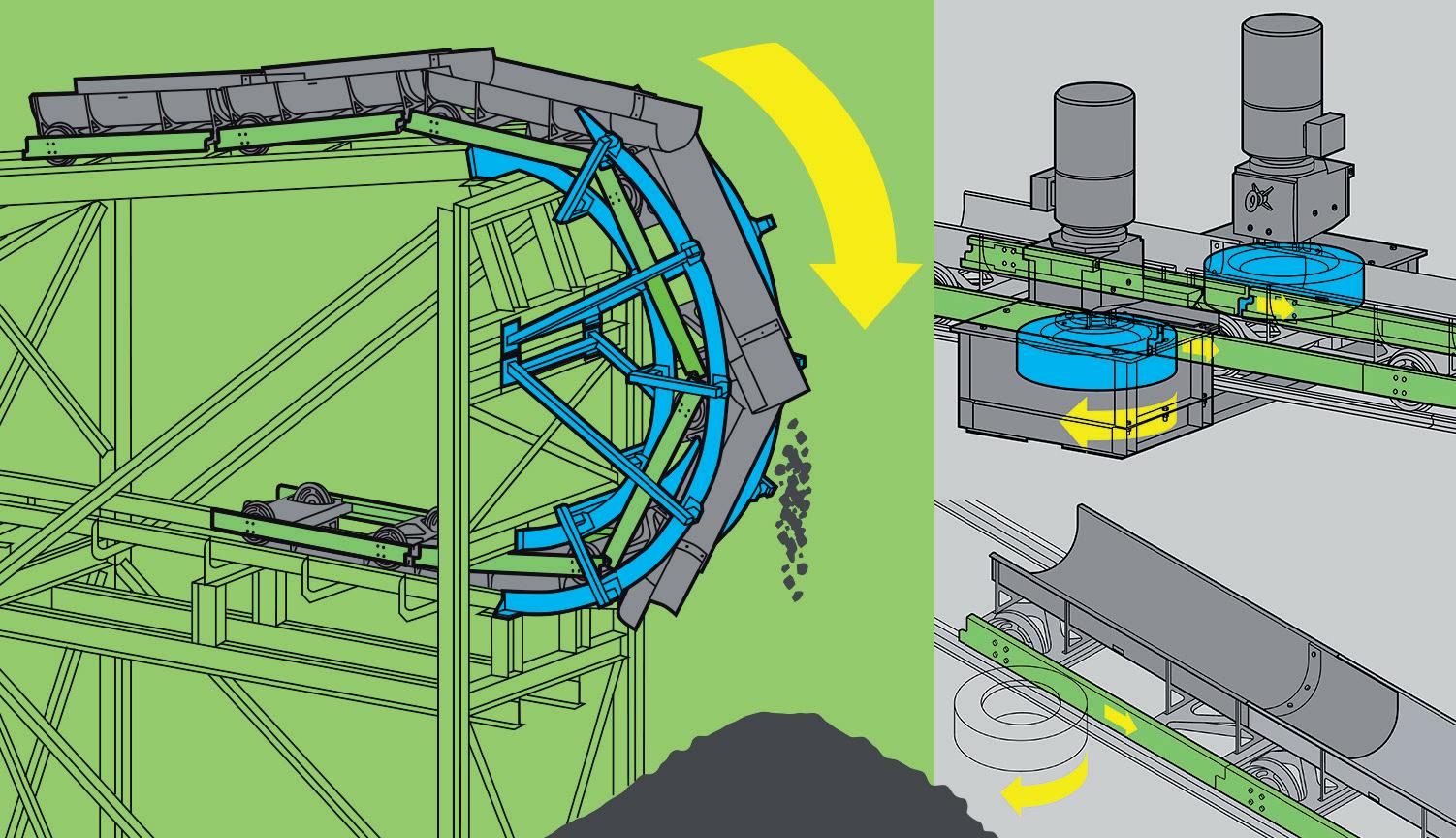
Conveyor belts have been in use since the late 1800s and have come a long way in development, now offering many different compositions and configurations. However, typical conveyor belts still have drawbacks when compared to a Railveyor train. For one, belts cannot consistently handle oversized material – due to the potential of losing larger pieces of ore in transit through vibration – that requires material to be crushed by a crusher at the loading point. Crushers are expensive, and excavating the space for the equipment is an added cost for an underground mine. Railveyor does not require material to be crushed, and may handle material with a maximum size of 24 or 36 in. (700 – 1000 mm), depending on car size. Furthermore, the all-in-one nature of a conveyor belt means that repairs to one section of the belt typically require stoppage, removal, and/or replacement of the entire belt. When repairs are needed, Railveyor trains may be directed to track sidings or maintenance bays, where individual cars are decoupled from the rest of the train, which can be redeployed.
Although the energy consumption advantages of fixed infrastructure material haulage solutions are known, a common counterpoint is that conveyors may be too rigid when compared to fleets of trucks. Typical conveyors must haul in straight lines. In an underground mine, when a corner –sometimes mandated by geotechnical issues – is encountered, conveyors usually resort to implementing a transfer point between two technically distinct conveyor belts. Every transfer point adds to initial cost, and increased mechanical complexity can raise maintenance requirements, thus also adding to costs.
However, Railveyor can transit curves, making transfer points superfluous. The minimum curve diameter may be 15, 30 or 35 m, depending on selected Railveyor car size. This allows Railveyor to approach the kind of irregular route designs that most operators would only expect when using trucks. Mine operators understand that altering conveyor routes can be costly and time-consuming, but, with Railveyor, changes in the haul route may be made within hours or days, instead of weeks or months.
Conveyor belts are propelled by drives that spin cylindrical drums, where the belts either travel across or are wrapped around. Occasionally, individual drives or drums malfunction or wear out, causing a single drum to stop rotating freely while the belt remains running across it. This creates excessive friction and heat, which can ignite a conveyor belt. Traditional conveyor belts are principally made of rubber, a flammable substance that produces toxic smoke when burned.
Composite belts with varying degrees of fire resistance may be used, but these may add significantly to cost.
Fire and smoke can often lead to human tragedy, especially in an underground mine. Even when no injuries occur, the production downtime due to a fire may last several months, as in the 2019 conveyor fire at Newmont’s Musselwhite mine in Ontario.2 Halting production can result in millions in lost revenue and put many jobs at risk.
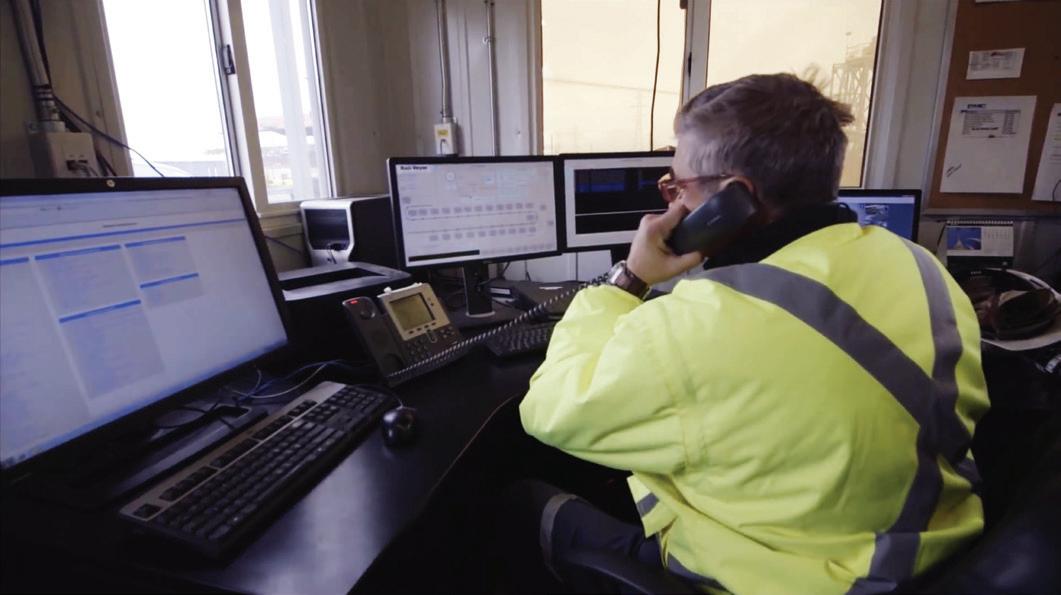
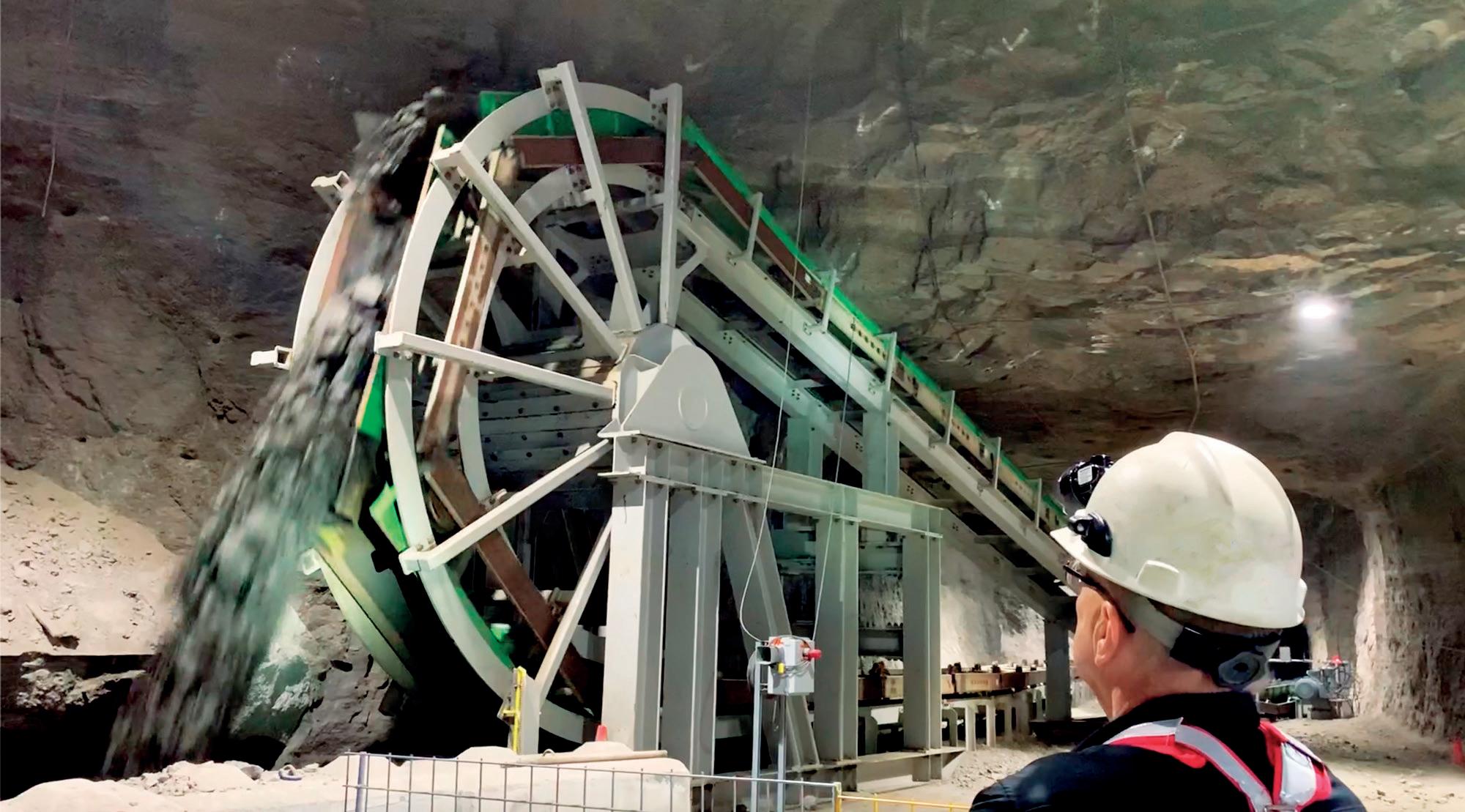
Railveyor’s all-steel trains and tracks have virtually zero risk of fire. In fact, the system was selected for a surface application hauling petroleum coke, in part, because of its intrinsic immunity to fire.
The Railveyor system is novel, but the components that it is constructed from are proven. The system eliminates the risk of conveyor belt fires that are so feared by miners and mining companies alike. A Railveyor track may curve, and can be quickly adapted for rapid development. It is easy to repair, does not require a crusher, and, finally, is more energy efficient than conveyors because of its fundamental design properties.

Mining companies are right to explore new technologies that offer lower carbon emissions and operational expense. Some applications may be perfect for BEVs – and, in the future, autonomous vehicle technologies of all kinds are expected to revolutionise the mining industry. However, Railveyor is a technology which is all these things right now: low emissions, low OPEX, and TrulyAutonomous. Railveyor should be in the conversation when mining companies are selecting their lower emissions, lower OPEX material transport solutions for the net zero future of mining.
1. BIEG, A., SAMSON, M., BELL, Z., SCHUYLER, J., and ZINSSER, A., ‘Material Transport: Racing to Net Zero. Comparing Haulage Options for Reduced Greenhouse Gas Emissions and Costs’, WarmSpringConsulting, (2022), https://drive.google.com/file/d/1bB_ SOMspGZ00Vx9rPryfkChGBrSJ63zh/
KUYKENDALL,
slashes haulage emissions by up to 95%
Lower friction than conveyors
No energy loss from rubber tires
No cab, battery or engine to haul
No burning of diesel fuel
Remaining emissions: 5%
In mining, eliminating waste, chasing efficiency and getting quickly to payback is paramount. At Railveyor, we’ve been reducing emissions from haulage at our customers’ operations by up to 95%. We thought you’d like to see what’s underneath the number: a better design which is fully electric, TrulyAutonomous™ and available today.
2. T., ‘Newmont Goldcorp says fire damage at Musselwhite mine to be fixed in 2020’, S&PGlobal, (2019), www.spglobal.com/marketintelligence/en/news-insights/trending/ boh_57jiclj30ux3ax3vnq2Leslie David, Conveyor Belt Specialist, illustrates how seemingly identical specifications of conveyor belts can differ in price from one producer to another, and why there is invariably a much bigger price to pay in the longer term.

In the highly competitive world of industrial conveyor belting, building a brand name that has an automatic reputation for quality and performance, and that withstands the test of time, takes many years. It is something that can only be achieved by consistently producing belts with high quality standards. The downside to that, of course, is the need to charge higher prices compared to those who compete on price rather than quality. Achieving success in the face of the unrelenting downward price pressure, caused by unbranded imported belting, is an enormous challenge. The biggest single source of belting imported into Europe is from Southeast Asia, with the vast bulk coming from China. As with virtually every other market,
the strategy being used is based on mass volume manufacturing at a reduced (and often unacceptable) standard of quality, at hugely subsidised prices.
Mining companies, as with all users of industrial conveyor belts, will no doubt feel that they are the beneficiaries of the ongoing price war, but is that really the case? Apart from the quality, safety, environmental and ‘lifetime cost’ issues, the growing dominance of imported belting means that much of the European-based conveyor belt manufacturing capacity is disappearing. This unhealthy reliance on low-grade imports has also led to reduced options for mine operators who genuinely need to use high-grade, super-tough belting for their most
demanding applications. The same applies where fire safety is paramount, because these types of ‘specialist’ conveyor belts are of little to no interest when it comes to mass manufacturing.
Amazingly, with few exceptions, European manufacturers are now supplementing their production with imported belting. Ironically, their efforts in trying to satisfy the low price end of the market may well result in their own demise. One exception is Netherlands-based Dunlop Conveyor Belting, which has continued to prosper while holding steadfast to an unwavering market strategy of selling premier quality belts that are exclusively manufactured in its own facilities in Europe. The unique selling proposition that the company uses, in the face of the extremely low prices being offered by Asian manufacturers and their importers, is one of ‘lowest lifetime cost.’
To support its arguments, Dunlop provides a wealth of technical evidence based on laboratory testing and real-life examples, such as numerous case studies that demonstrate how its belts can quite easily last for up to four or five times longer than low grade imported belts. To understand the technical reasons why there is such a vast difference in longevity and performance, it is first necessary to understand the methods used by manufacturers in Asia that enable them to offer prices that, for apparently similar specification products, are so much lower than their European-based competitors.
It is a common misconception that products imported from Asia are of a similar quality, but cost less simply because labour costs are much lower. The reality is that the very high level of automation nowadays means that labour costs do not make a significant difference to the ultimate selling price. As a rule, labour represents approximately 10% of total costs, whereas the materials used to make a conveyor belt can constitute up to 70% of total costs. These raw materials are all available on the global market, and, as with just about any product, price ultimately determines the quality. Logically, this means that if there is a big difference in price then there must be a comparable difference in the quality of the materials used.
For conveyor belts, it is the quality of the rubber covers, in particular their ability to resist wear and tear, that has the biggest influence on their durability and operational lifetime. Rubber usually forms at least 70% of the volume mass of a conveyor belt, and more than 50% of the cost. It is therefore the single biggest cost-cutting opportunity.
Because of its adaptability, most of the rubber used to make conveyor belts is synthetic. Dozens of different chemical components and substances are used to create the numerous synthetic rubber compounds needed to cope with a conveyor’s operational demands. These chemical components and additives are often very costly, so a combination of using low-grade chemicals at the absolute minimum levels or, in some cases, not using them at all, contributes towards a manufacturer’s ‘lowest possible price’ objective.
Perhaps the best example of ‘convenient omissions’ concerns ozone and ultra violet light. From a product longevity point of
view, there is no question that all rubber conveyor belts need to be fully resistant to the damaging effects of ozone and ultra violet light. At low altitude, ozone becomes a pollutant, and exposure to it is inescapable. The ozone increases the acidity of carbon black surfaces, and causes reactions to take place within the molecular structure of the rubber. This has several consequences, such as surface cracking and a marked decrease in the tensile strength of the rubber.
Likewise, ultraviolet light from sunlight and fluorescent lighting also accelerates deterioration, because it produces photochemical reactions that promote the oxidation of the surface of the rubber, which results in a loss of mechanical strength. Once again, laboratory testing consistently reveals that belting imported from China and Asia in general is very rarely, if ever, ozone and UV resistant. This is almost certainly because the anti-ozonants that should be used during the mixing process of the rubber compounds are viewed as an avoidable cost.
A key component in every black rubber conveyor belt is carbon black. It makes up approximately 20% of a typical rubber compound, and, as a result, is yet another target for those aiming to minimise production costs. The important role that carbon black plays should not be under-estimated. For example, it prolongs belt life by helping to conduct heat away from the surface area of the belt, thereby reducing thermal damage, which in turn helps to slow the ageing process. It also acts as a reinforcing compound. Belts offered with significantly lower prices are therefore likely to contain carbon black that is of a much lower quality, which has been produced at a lower cost. For example, by burning scrap car tyres, which is a practice that, unsurprisingly, does not have the hindrance of needing to comply with environmental regulations.
Other methods used to minimise rubber costs include the use of recycled rubber of questionable origin and cheap ‘bulking’ fillers, such as chalk, which are used to replace part of otherwise more expensive rubber polymers.

Although the rubber is the primary target, the inner fabric plies also provide a big opportunity for cutting corners. The most commonly used fabrics consist of a combination of polyester and nylon. Although two belts may have the same basic specification, there are often huge differences in the quality of the fabric plies, because the more costly nylon transversal weft material has been kept to a minimum, with preference going to the much cheaper polyester material. Although the belt may meet the required tensile strength, the lack of nylon means that rip and tear resistance, usually an important aspect of belts used in mining, is noticeably reduced. The elongation (elasticity) of the belt can also be too low, which often results in splice joint problems.
Various laboratory tests carried out on belts imported from Asia have frequently confirmed more blatant deception. These involve the use of totally polyester (EE) fabric plies in a carcass that has been sold as having the much more common polyester/nylon mix (EP) carcass construction. The whole basis of using fabrics that contain a mix of polyester and nylon fabric is that it has the best balance of mechanical properties,
including allowing a conveyor belt to run straight and true; to trough; to flex round pulleys and drums; to stretch; to provide sufficient transversal rigidity and longitudinal strength; and much more.
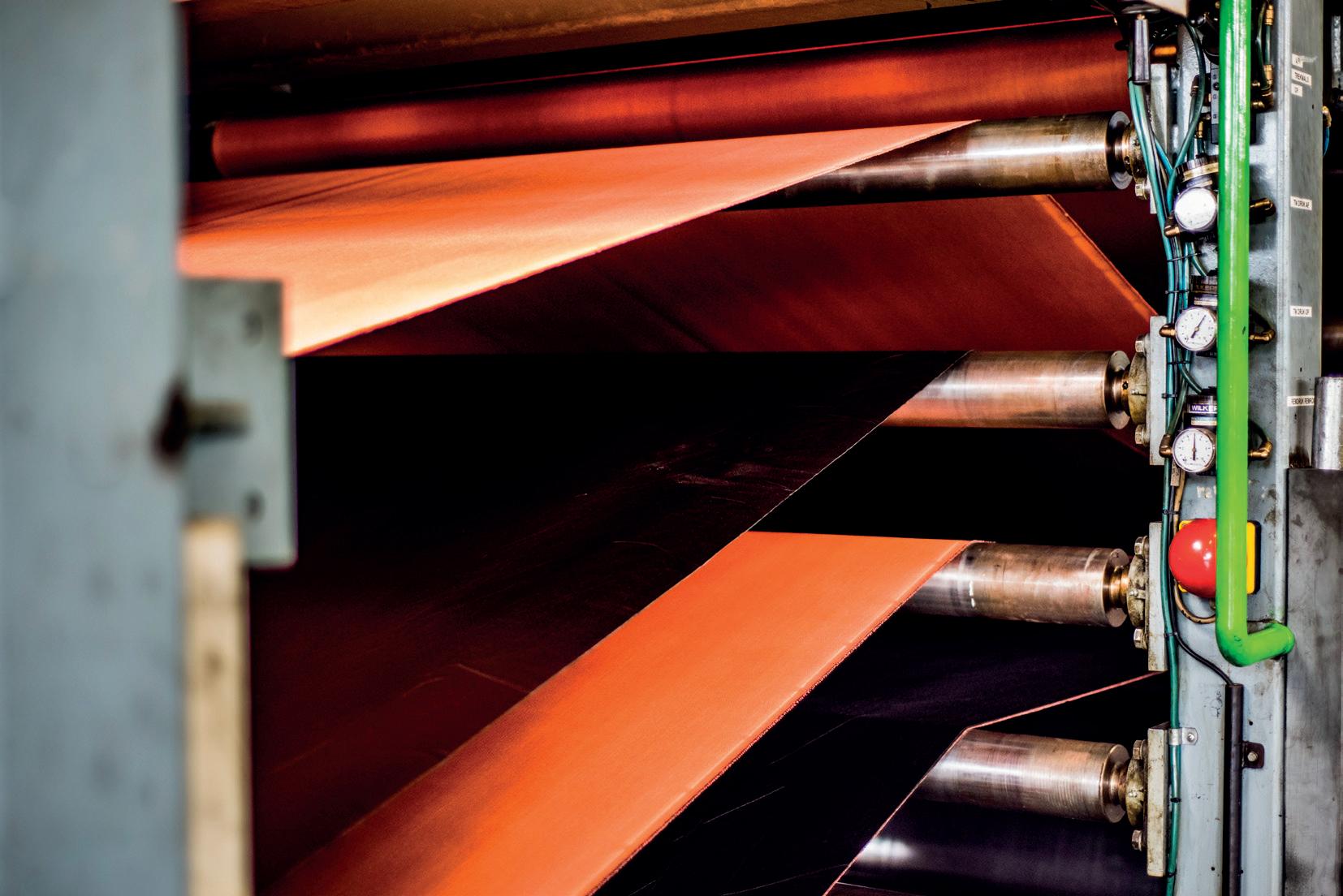
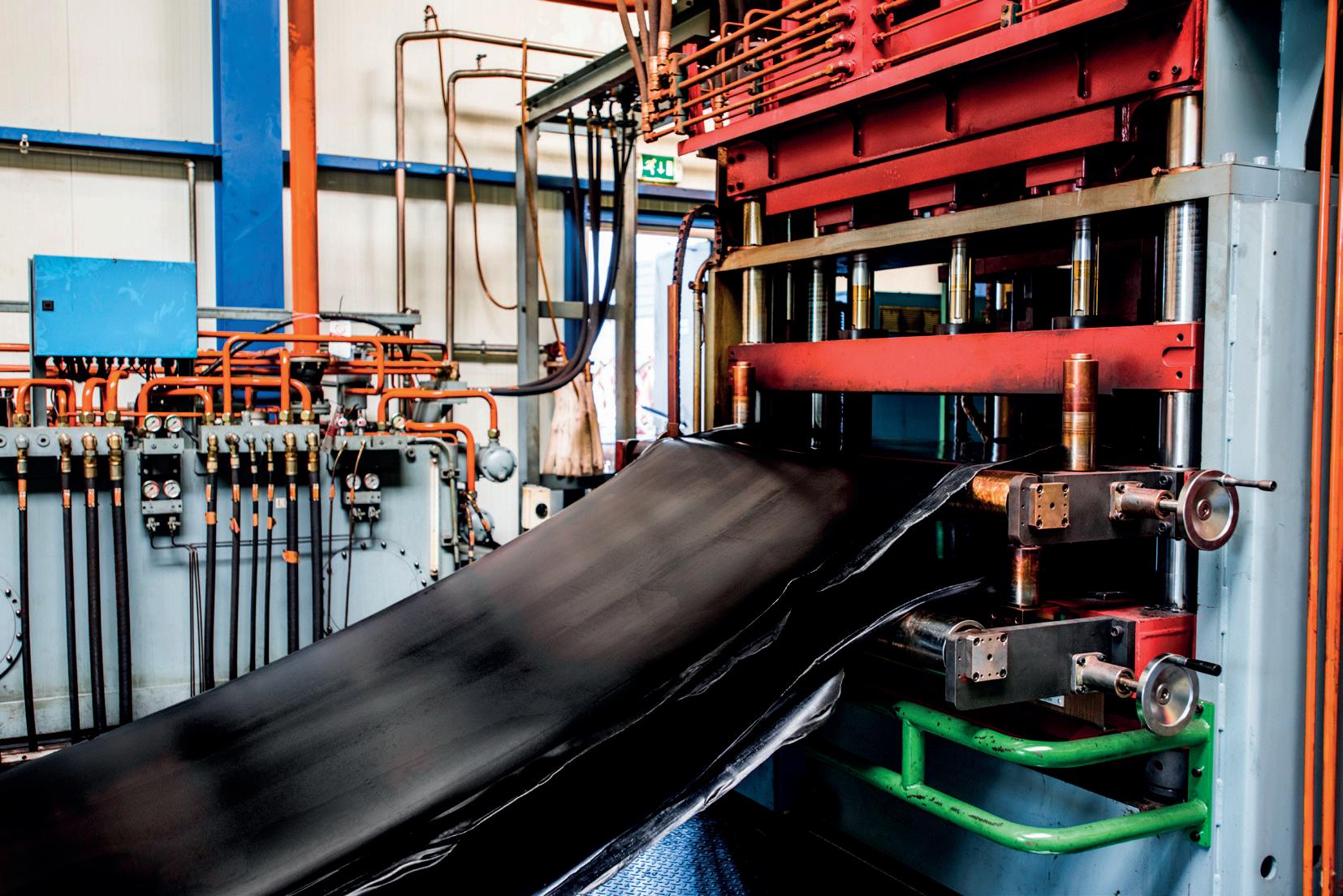
The use of totally EE fabric compromises a whole range of essential mechanical properties. However, the biggest danger is that a polyester weft can cause low transverse elasticity, which reduces both the troughability and impact resistance of the belt, as well as causing tracking issues. In addition, less weft in the belt can also reduce rip resistance, fastener strength, and the
ability to handle smaller pulley sizes. The seriousness of the detrimental physical effects should never be under-estimated.
The fabric plies are a major cost component in any multiple ply conveyor belt. However, EE fabrics cost around 30% less than EP, so using cheaper polyester fabric is a big help when trying to achieve the perception of a lower ‘like for like’ price.1 As far as the manufacturer using these tactics is concerned, they know that it is highly unlikely that the end-user will ever have laboratory tests carried out to verify the fabric’s composition.
The combined effect of all of these cost-cutting actions is the considerably shorter operational lifetime that the end-product will provide. Unfortunately, the more imported low-grade belts that are used, the lower the level of expectation. Some operators argue that regardless of the quality, a more expensive belt is still just as likely to be destroyed by accidental damage, such as rock becoming trapped and ripping the belt from end to end. Up to a point this is true, because accidents can happen. However, evidence and experience shows that – especially in the case of specialist rip, tear, and impact resistant belts – good quality belts can quite easily last as much as five times longer than what are often termed as ‘sacrificial’ belts.
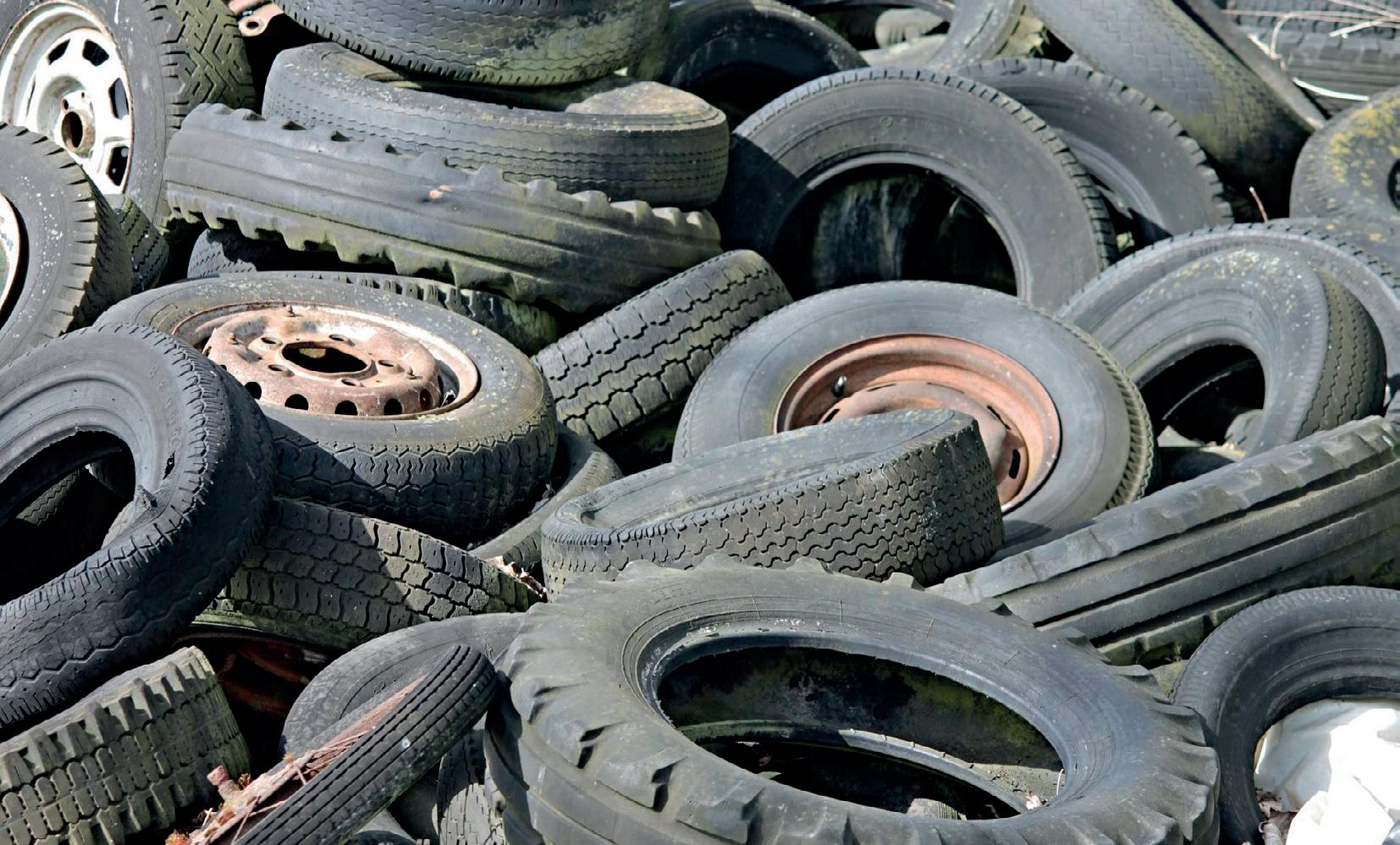
On a more positive note, there are signs that the tide may be turning. A growing number of mining and quarrying operations have experienced significant increases in productivity, as a result of moving away from the short-term ‘sacrificial route’ and installing high performance European-made belting. In one case in France, an 87% increase in output was reported. Another operation in the UK, where the maximum hourly output had been approximately 170 tph, normally less in the winter, saw output increase to over 200 tph all year round. The site is now delivering over 50% more than the contracted volume. One of the biggest factors in these increases was a massive reduction in unplanned stoppages, previously caused by the need to repair rips, tears, and broken splice joints.
Aside from the technical and ‘whole life cost’ shortcomings, consideration also needs to be given to the impact on the environment, which is of growing concern. For example, manufacturers based outside of the EU and the UK are not subject to environmental regulations, such as REACH regulation, or EU regulations concerning the use of potentially hazardous chemicals that are a threat to human health and the environment. This includes those that may have Category 2 carcinogenic classifications, as well as persistent organic pollutants (POPs). This means that non-European manufacturers are free to use unregulated raw materials that cost much less on the global market, compared to their regulated counterparts, even though those materials may be entirely prohibited, or at least have strict usage limitations within Europe.
One of the biggest concerns involves short-chain chlorinated paraffins (SCCPs). These are commonly used by manufacturers in Asia to artificially accelerate the vulcanisation process. REACH regulations clearly stipulate that SCCPs should either not be used at all, or at least only be used on a very restricted basis. This is because they are ‘persistent organic pollutants’ that are bioaccumulative in humans and wildlife, as well as toxic to
aquatic organisms, even at low concentrations.2 These chemicals pose hazards to human health and the environment because they have Category 2 carcinogenic classifications, as referred to earlier. The clue to their presence can often be a strong, pungent aroma, whereas good quality rubber usually has very little smell at all. The formation of nitrosamine gasses is another concern, and is known to occur when certain types of vulcanisation accelerators are used. Nitrosamine gasses gradually release themselves from rubber belts, which could be a problem if the belts are stored indoors. Nitrosamines are chemical compounds classified as probable human carcinogens, based on animal studies. Investigative research is still ongoing, but publicly available information from the rubber industry (primarily from within Germany and the Netherlands) indicates that nitrosamine formation can be avoided if the accelerators are replaced by others that do not contain nitrosatable substances.
If there is a significant difference in price, then the alarm bells should start to ring. This is because the methods used to create the illusion of a big saving will almost certainly result in expensive stoppages, repeated repairs, and ultimately premature replacement of the complete belt. Logically, conveyor belts that provide a much longer, trouble-free operational life are not good business for the intermediaries who supply, repair, and replace them. In fact, it could reasonably be argued that conveyor companies that provide maintenance and vulcanisation services are effectively being ‘rewarded’ for each repair and prematurely replaced
conveyor belt. As the old saying goes, “the price is what you pay, but the cost is what you spend.” Certainly, in the case of low-grade imported belting, at the end of the day, there is a much bigger price to pay.

1. The use of fabrics made entirely of polyester (EE) has its place in certain belt types and constructions, such as those used in saw mills, for example. However, in those cases, the declared specification of the belt should clearly be EE and not EP.
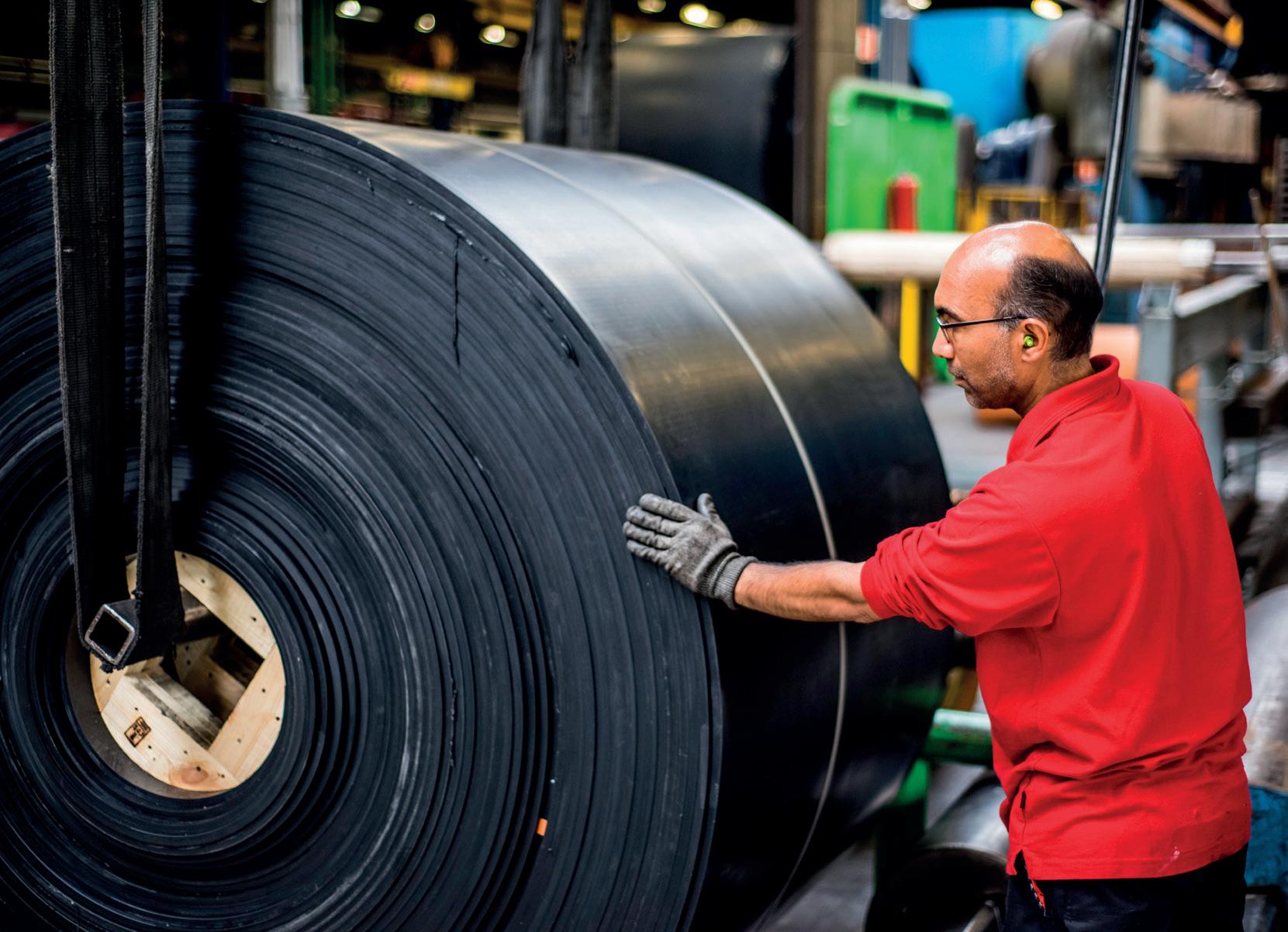
2. Bioaccumulation occurs when an organism absorbs a substance at a rate faster than it is naturally lost or eliminated by the organism.
 Figure 4. Good quality ‘REACH compliant’ rubber usually has very little smell at all.
Figure 4. Good quality ‘REACH compliant’ rubber usually has very little smell at all.
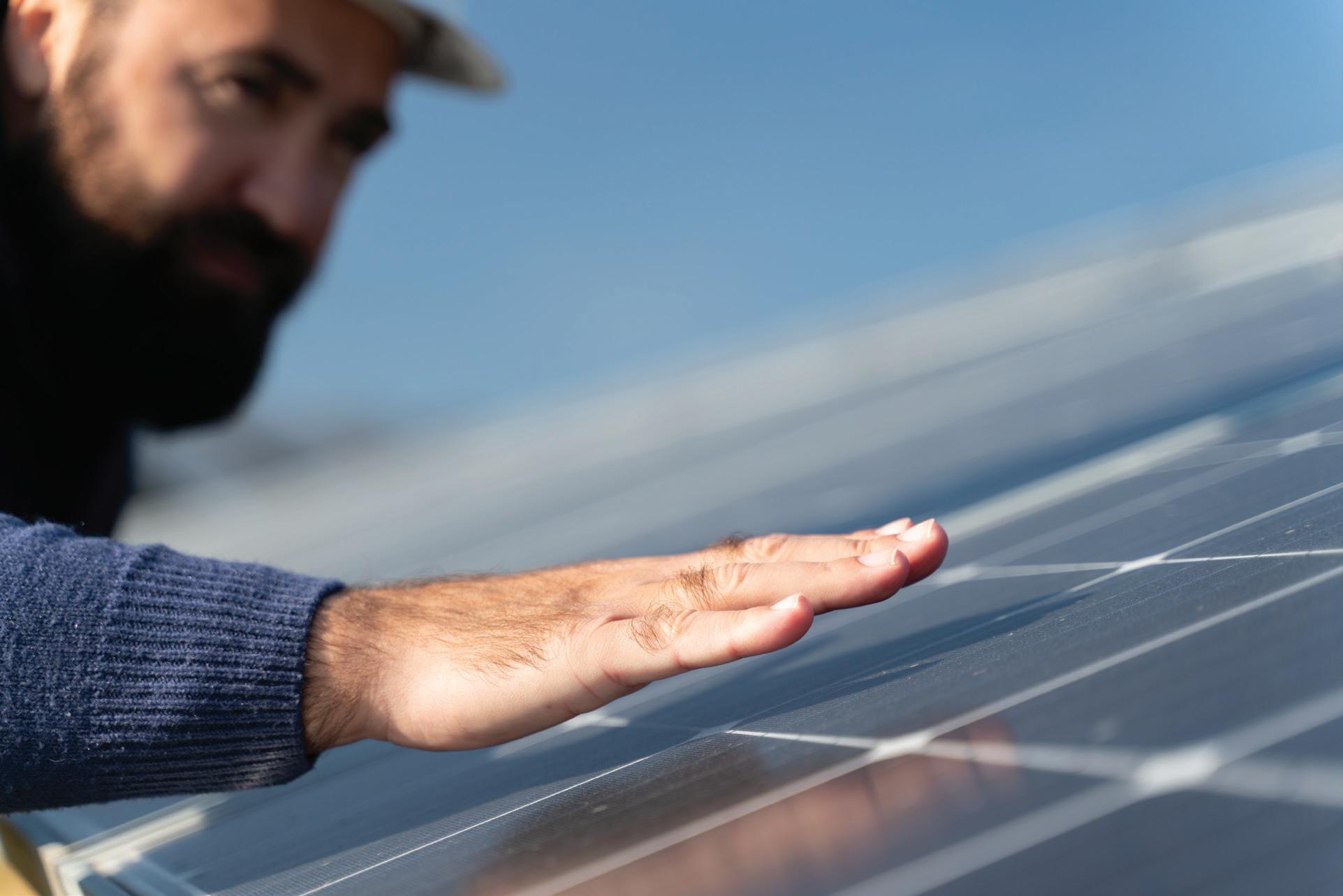
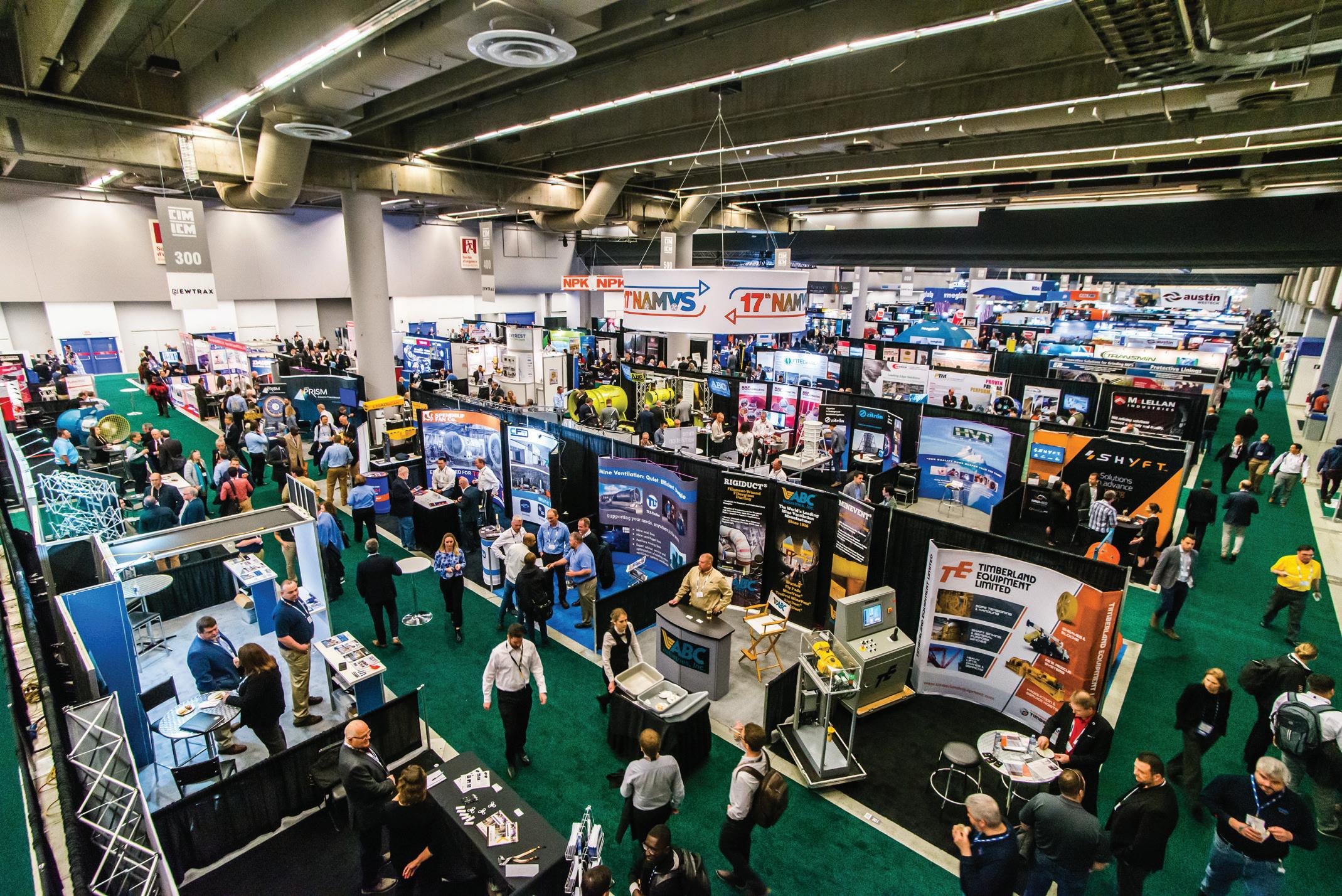
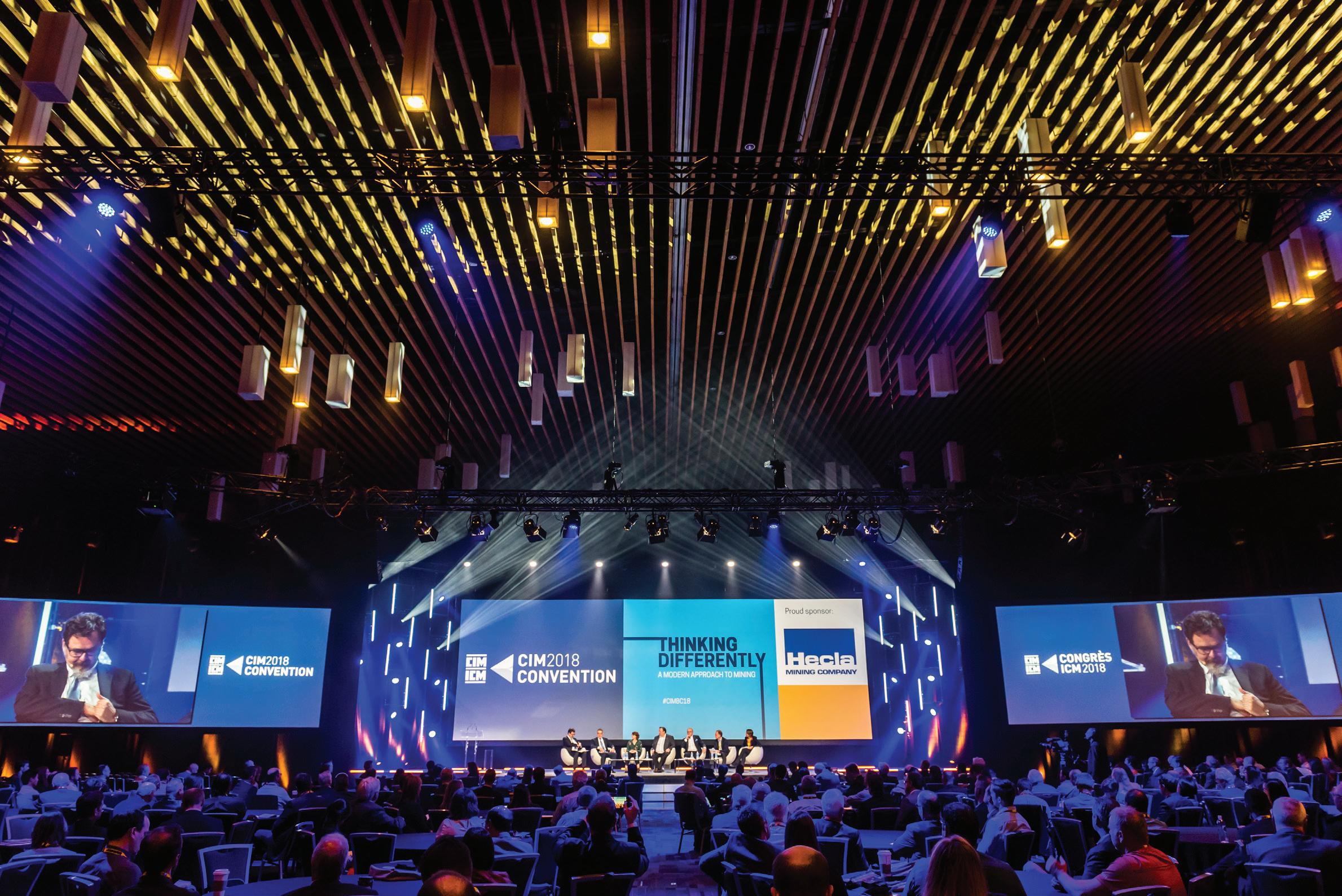
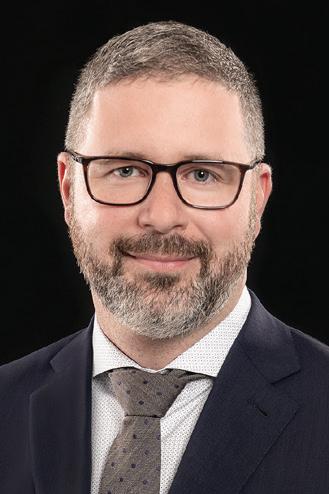



 David Cataford Chief Executive Officer, Champion Iron
Philippe Couillard 31st Premier of Québec
Ken Rock General Director, Société de développement économique Uashat Mak Mani-Utenam
David Cataford Chief Executive Officer, Champion Iron
Philippe Couillard 31st Premier of Québec
Ken Rock General Director, Société de développement économique Uashat Mak Mani-Utenam
Many industries are facing the dual challenge – the need to meet a growing population’s demand for resources, while also addressing sustainability goals to ensure optimal stewardship of the limited resources the planet has to offer.
The mining sector is no exception. The sheer volume of operational issues mining companies face – from rising energy costs to social and geopolitical risks, as well as infrastructure and skills shortages – mount up, and together can significantly impact profitability. Marginal differences, after all, can have scalar impact, given the size of many mining operators and wider ecosystems.
Similarly, securing a license to operate is not as simple as it once was. At one point, an operation needed only to be profitable for it to exist, but those days are gone. In fact, analysts are increasingly taking

the view that the recent fall in earnings by the world’s biggest mining companies is a sign that the days of bonanza dividend pay-outs are now over. This year, the dividend pay-outs for iron-ore producer, Rio Tinto, were 50% of earnings –significantly less than the 75% it paid to shareholders last year, leading to a fall of approximately 5% in its share prices on some stock exchanges.1
Extreme weather events, such as high rainfall or scorching temperatures, have been adding to the pressure on many of these companies. This resulted in Anglo American slashing its dividends by 27% in July compared to the previous year, citing climate events that hurt platinum mining in South Africa, coal mining in Australia, and iron ore production in Brazil during 1H22.1
Added to this, mining companies have been placed under scrutiny with respect to safety and sustainability, and are having to respond
Jeannette McGill, AspenTech, Australia, highlights the importance of digital technologies in combatting the operational hurdles facing the mining industry today.
to ensure their staff, as well as the environment and societies they operate in, are properly cared for.
Technology will be key for mining companies as they look to address these challenges. Mining has traditionally been known as a laggard with respect to technological adoption – and that has led to digital systems being used and applied less widely than they are in other similar sectors. Indeed, according to Boston Consulting Group’s digital acceleration index (DAI), the metals and mining industry is roughly 30 – 40% less digitally mature than comparable industries, such as automotive or chemicals.2 Therefore, there is a substantial opportunity to generate value by adopting technology proven in other industrial sectors.
In light of this, there is a growing realisation that digitalisation will be critical for the metals and mining industry to become sustainably sound and operationally excellent for generations to come. To remain agile, competitive and profitable over the long term, leaders in the mining industry are now adopting digital capabilities into their operations and embracing immediate and measurable benefits. Technology providers have responded in kind, developing solutions tailored to the needs of the mining sector that address the dual requirement to deliver improved business efficiency and enhanced sustainability.
With the push towards digitalisation, today’s operators also understand that finding a better and more efficient way of managing data will be crucial in meeting the dual challenge. Currently, there are still multiple challenges with respect to the way that data is managed across the sector.
Mine leaders have to make tough decisions, but in doing so, they frequently have to aggregate isolated pockets of data to generate the relevant and actionable information and insights. It is not enough for data to be available, instead, appropriately managing diverse and disparate data sets in a range of locations to enable decision-making is a top priority.
The key is to integrate data and exercise high-level analysis with an understanding of the domain work requirements. Mining companies that do that effectively will be starting to lay the building blocks of what has become known as the intelligent mine – a concept centred around the benefits of centralising information from across multiple locations and business processes, in order to reveal useful insights that then support senior level decision-making, using designed-for-purpose analytical platforms.
Data stored in 50 different standalone systems will not, in itself, drive operational efficiencies, leading to much less support for sustainable operations. So, addressing several issues simultaneously is more likely to facilitate success in a move towards the intelligent mine. First, businesses need to implement automated data gathering systems to capture relevant data from various parts of the mining process and facilities.
Second, only good data enables good decisions, so organisations must ensure that the tools they have deployed can detect the bad data, and employ management of change to
monitor and ensure that all changes are consistent, correct, and improve data processing. Third, the business should assist the mine personnel by providing the capability to integrate data with built-in relevant analytics, in order to process data in an actionable time frame.
In the context of the intelligent mine, having access to good data is important, though it represents just one part of the equation. Organisations also need to be able to analyse the data in different ways, within the context of a problem, to be solved with appropriate predictive outcomes.
One critical concern for mining involves predicting the degradation of equipment that, if unattended, will lead to equipment breakdowns and unplanned maintenance, thereby adversely affecting both operational efficiency, sustainability, and safety. Mining is equipment and infrastructure-intensive, and requires the use expensive machinery. Therefore, the business suffers in terms of both operational continuity and sustainability if machinery is not maintained and kept reliable.
One of the biggest profitability challenges that any mining operator faces are equipment breakdowns, repairs and consequent production shortfalls, all of which also waste time and resources, in addition to making the business less sustainable.
Traditional, preventative maintenance methods generally cannot deliver the benchmark equipment availability and performance required in today’s tough economic climate. Despite best efforts, earlier preventive maintenance efforts cannot deliver sufficient time-to-failure warnings to provide a significant impact on profitability.
That is where modern predictive maintenance plays a vital role. The technology monitors data from sensors on and around the machine, to develop intense multi-dimensional and temporal patterns of normal operation, abnormal operation, and explicit degradation patterns that precede breakdown. The patterns that the artificial intelligence (AI)/machine learning digital technology detects not only provide early warnings –where time is money – but also detects patterns that limited human dimensionality cannot perceive.
Also surpassing human capability, the technology can assess the health of numerous machines every few minutes. It also delivers early warnings to maintenance teams, often with prescriptive advice that enables a focus on the bad actors and known issues. Predictive maintenance enables maintenance and reliability for workers. With tough challenges, workers get pre-warnings, and much of the intense repetitive analytics and engineering are executed to help them with the resulting information delivery, so they know when and what to prioritise.
Maintenance teams with predictive maintenance tools ensure that intelligent mines can make great progress in eliminating unplanned breakdowns.
An asset performance management (APM) approach – with integrated predictive maintenance capability – ensures mines improve reliability, availability and uptime, while reducing the requirement and great expense of redundant equipment.
Operations teams have often planned for lower availability; installing three machines when they only need two, or buying 10 haulage trucks to ensure they always have eight up and running. It is wasteful in terms of resource expenditure, and is ultimately unsustainable.
With the right technology, mines can achieve benchmark reliability without the need for more people, equipment, or spend. Companies can work at the required production levels and either park up, or switch off redundant equipment. This makes a significant contribution to the bottom line, while reducing the expenditure of emissions and increasing sustainability.
To develop an efficient digitalisation strategy, certain components must be in place. All too often, mines try to invest minimally in digital solutions to save money. Without domain-centric AI/machine learning analytics, this limits the reach and value technology can deliver. Successful digital strategies implement solutions that can draw on data from sensors and other sources, for example: enterprise resource planning (ERP) systems, manufacturing execution systems (MES), laboratory information management systems, advanced process control (APC) systems, and general mine planning and design systems (GMPs). Machine learning and other data science techniques require the timely delivery of available data, so historian technology plays an important data delivery role.
A growing number of mines are starting to pursue an APM approach. Australian gold miner, Evolution Mining, for example, has deployed Aspen Mtell software at the company’s Mungari Gold Operations, Western Australia, in order to help mitigate unplanned downtime and provide information to support productivity improvements.3

According to Greg Walker, Evolution Mining Mungari’s General Manager, the company’s data enabled business improvement (DEBI) programme has achieved excellent results in recent years, and is set to achieve further productivity improvements via increased asset availability.
Today, the mining industry is at the level of maturity to fully embrace and utilise the digital optimisation technologies. Operators that do not adapt and build a strategy to utilise such technology will struggle to compete against those that do. Prescriptive maintenance can quickly bring results to a mining company by improving the use of existing capital assets and eliminating the surprise of unplanned downtime, which has a direct impact on productivity, safety, and sustainability.
Scalable prescriptive maintenance solutions add value to assets, such as: conveyer systems, processing plants, large mills, and even equipment across an entire global enterprise. The truly intelligent mine supports mining companies in reducing unplanned downtime and decreasing safety risks, while running more efficiently and sustainably, as well as increasing profitability and safety. They are, therefore, key in enabling mining companies to meet and overcome the dual challenge; both today and for many years to come.
References
Available on request.
You have a net zero emissions target. What’s next? Let us build a roadmap to lead your journey to net zero. stantec.com/net-zero-mining
Expand your network with attendees from 120+ countries
1,100+ exhibitors showcasing the best in the industry

Hundreds of hours of programming presented by industry experts


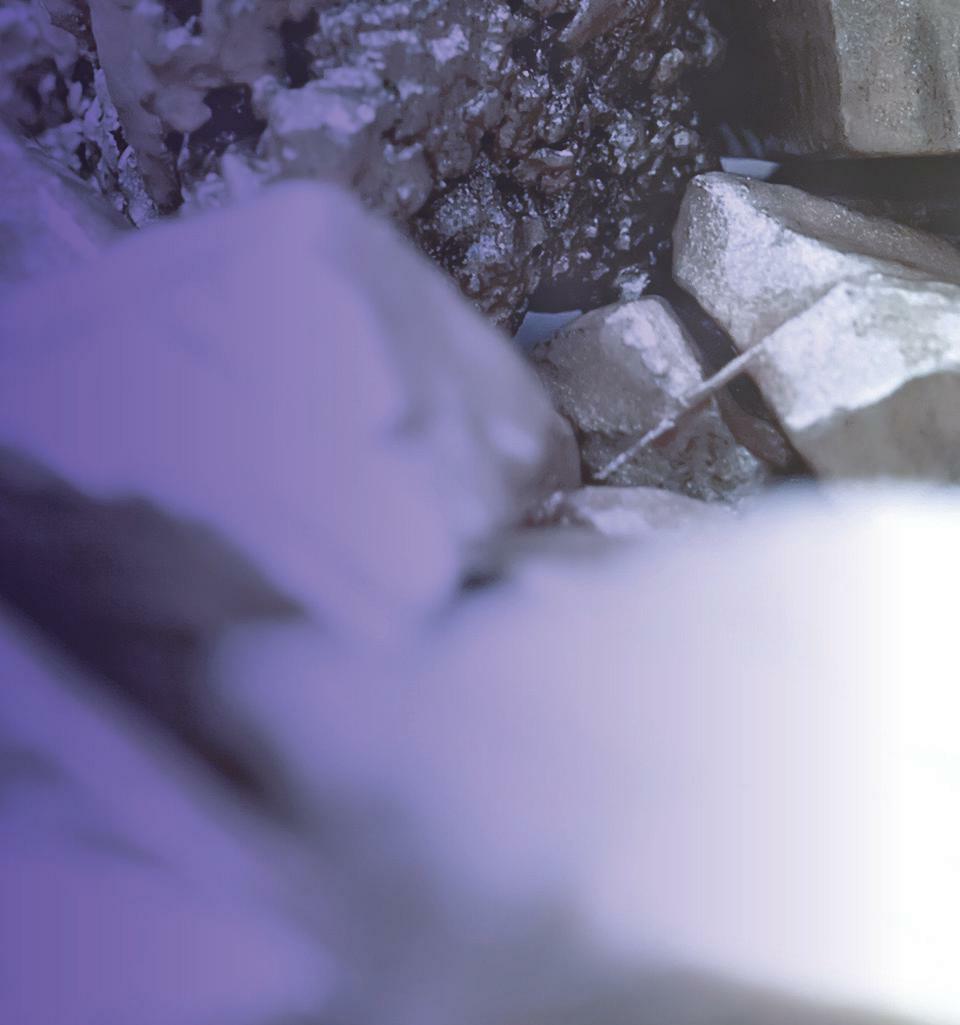


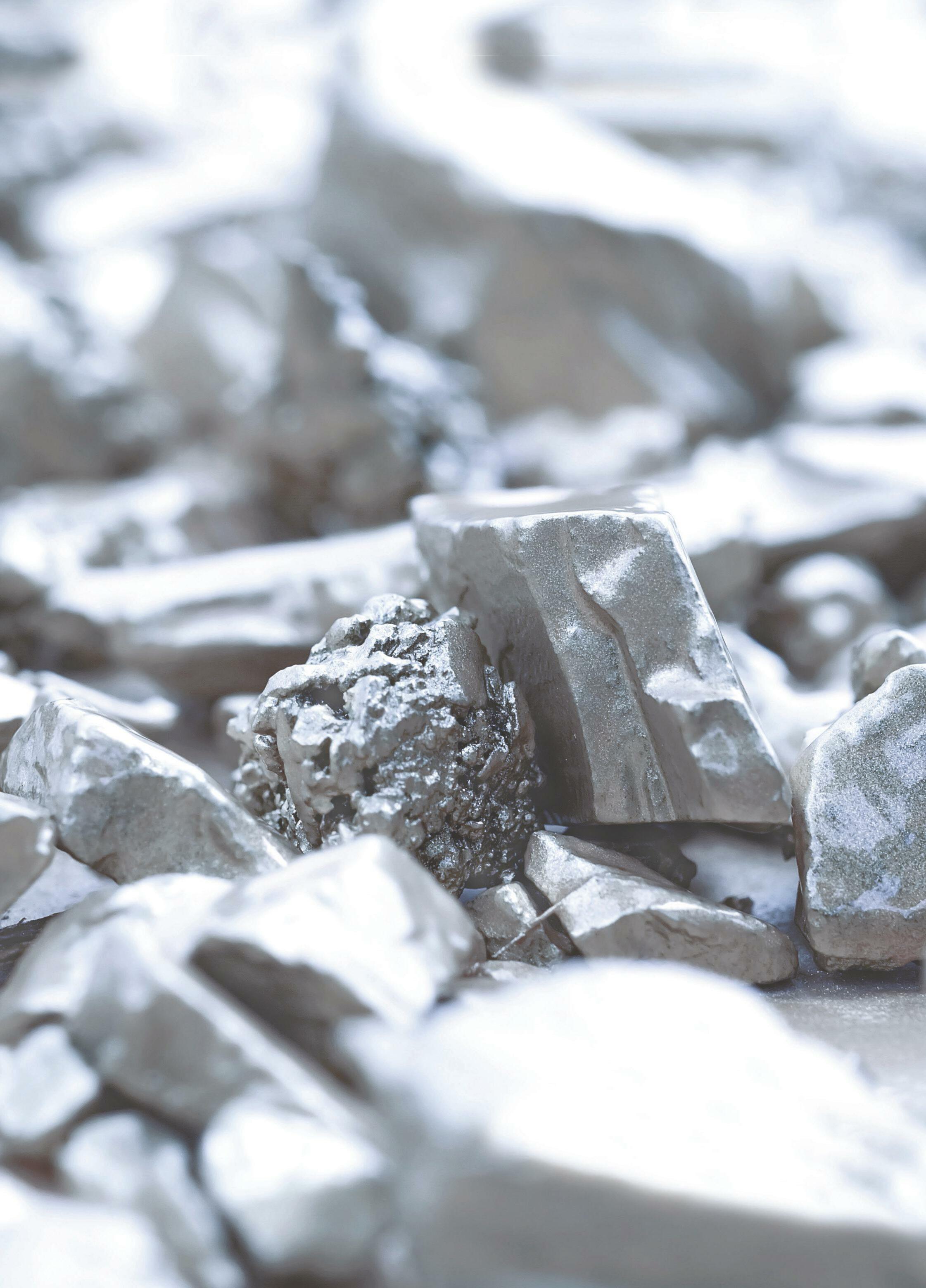
with private, retail and institutional investors and senior executives

Andor Lips, Seventy Ninth Group, UK, considers the nature and aims of mining exploration processes, and reviews some activities currently being undertaken in Guinea, Africa.
Geological exploration plays a significant part in the valuation of land and any natural resources present in it. By assessing the land through a detailed exploration process, it helps to determine whether the top few hundreds of metres contain anomalous concentrations of certain minerals or metals. Through surveying and systematic testing, the amount of minerals or metals present can be estimated. The size, scale, and level of concentration will determine informed

decisions further down the line regarding economic potential, feasibility for extraction, and the ways and means to do this.
When conducting exploration, a primary aim should be to integrate all tools, knowledge, and available information to get a better view of the potential value of the land by assessing the mineral potential. Part of this is a geological exercise, based on various exploration methods and subsequent technical, economic, and scientific evaluation. While executing an exploration programme, it is also important to just be present in the region; experiencing the country and engaging with the local people, and trying to understand their needs.

It is important to understand what represents an attractive mineral concentration in the ground, as a principal target for an exploration campaign. For example, concentrations of over only 0.5% of copper in mineral ore characterise an attractive copper deposit to develop into an industrial-scale mine. The low copper concentration is only of interest if it is found together in over 20 million t of rock. Such rock volume equates to a rock mass of 200 m by 200 m and 200 m thick. Such a deposit will contain a total of 100 000 t of copper metal, with an intrinsic value of over US$600 million at today’s copper metal prices. This is a significant value of metal in the ground, but the stated value does not factor in the capital required to develop a mine, acquire mining equipment, construct processing facilities and associated infrastructure, or consider the day-to-day operating costs to mine the ore and extract the copper from it.
While the earlier example presents a compelling copper deposit, the high market value of gold determines that much lower concentrations and much smaller sized deposits can already host significant value. Instead of 0.5% of copper metal in the earlier example, an economically attractive gold concentration can be as low as 1 ppm. One part per million means that 1 g of gold occurs in a tonne of rock. Expressed in ppm, the 0.5% copper equates to 5000 ppm (i.e. 5000 times more). Furthermore, the size and scale of gold deposits are often smaller. Compared to the earlier example, approximately half of the volume of rock with a gold concentration of 1 g/t would host an intrinsic metal value of a similar order as the copper example. The smaller volume of rock determines that the exploration target can be smaller too. Otherwise said, gold exploration is focused on identifying smaller-sized occurrences of tiny concentrations of gold.
The Seventy Ninth Group, a UK-based, family-owned asset management business, with a proven track record in delivering substantial returns in distressed markets, has been operating for over 30 years, with well-placed exploration licenses in the Siguiri Basin, a prolific gold region in Guinea. Indeed, one of the company’s concessions is a matter of metres away from the Siguiri mine, owned by gold company AngloGold Ashanti. The Siguiri mine is a very large, profitable gold mine and has been running since 1998.
In comparison to several publicly traded smaller exploration companies, the Seventy Ninth Group’s approach has been to explore off the radar, going beyond speculating on value and instead directly assessing the intrinsic value of hard assets in the ground. Crucially, the company is also focused on supporting local communities in its area of operations, and how gold resources can be developed to mutual benefit within these communities.
Guinea is a well-established mining country globally – it is one of the world’s largest producers and exporters of bauxite, a key component for the manufacturing of aluminium. It also has
significant prospective reserves of high-quality iron ore, but there remains ample room for exploration and development for other commodities, including gold and diamonds.



The Siguiri Basin, in the northeast of Guinea, is part of a larger geological terrain (the Birimian) that runs from Mali and East Senegal in the North-West, to Burkina Faso and Ghana in the South-East. The Birimian is known as a significant host for gold deposits, and many of the gold mines in West Africa exist within this specific geological setting, alongside small and artisanal scale mining across the region. Several large gold operations exist in the Siguiri Basin alone, such as the previously mentioned Siguiri gold mine, as well as Lefa, Kéniéro, Kouroussa, and Tri-K.
Furthermore, 100 km away, just across the border into Mali, several other large gold projects have been developed (e.g. Yanfolila, Kalana, Kodieran, etc.), and yet the Siguiri Basin is still considered as one of the least explored regions of the Birimian.
In recent times, several exploration companies have applied the latest exploration models and technologies to gold mining in the region, which has brought the Seventy Ninth Group to regard it as an area of interest.
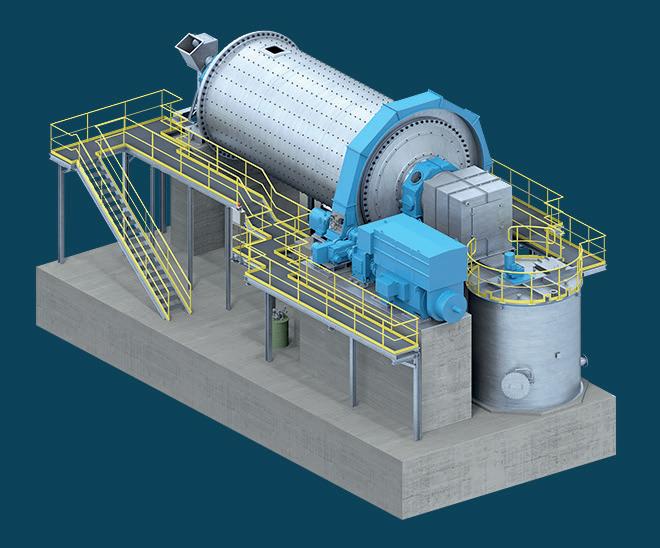


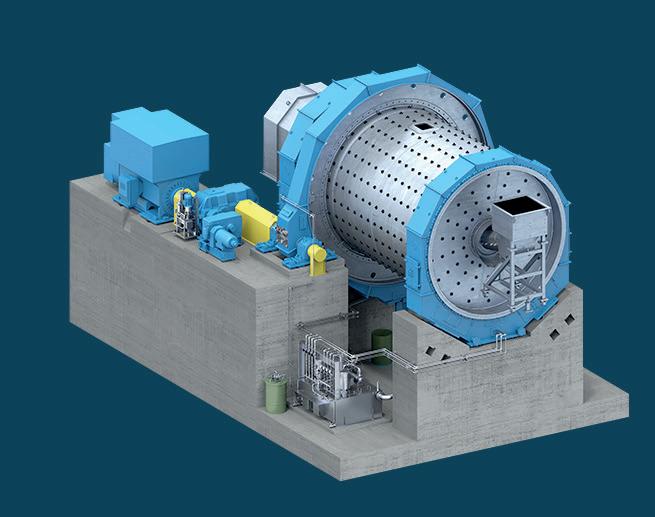
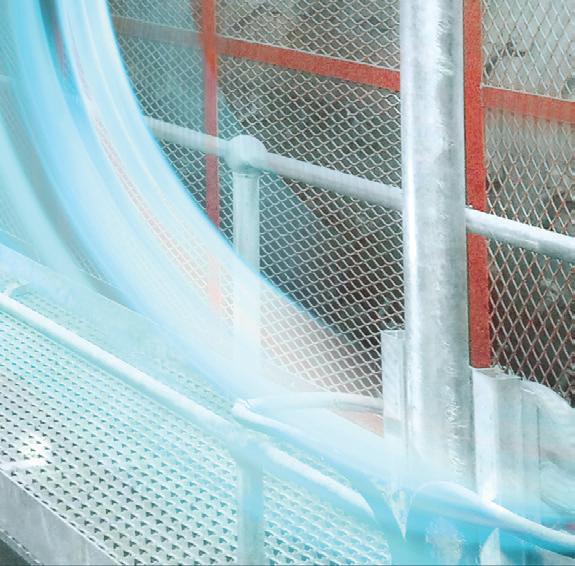
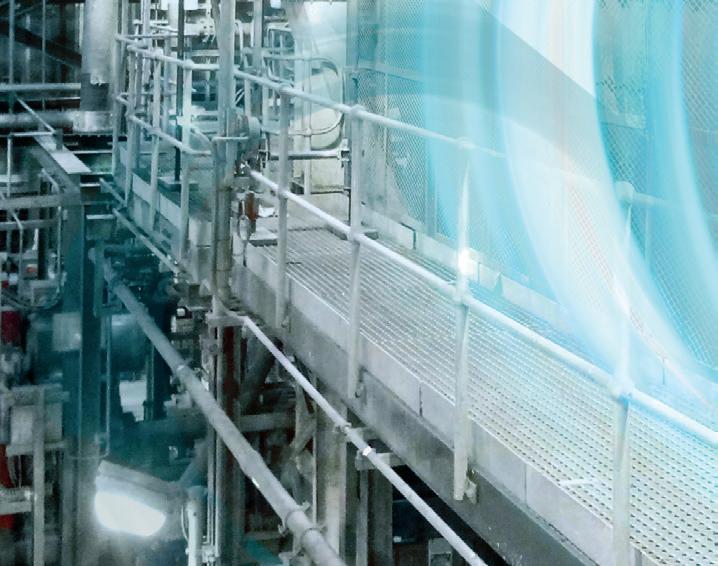
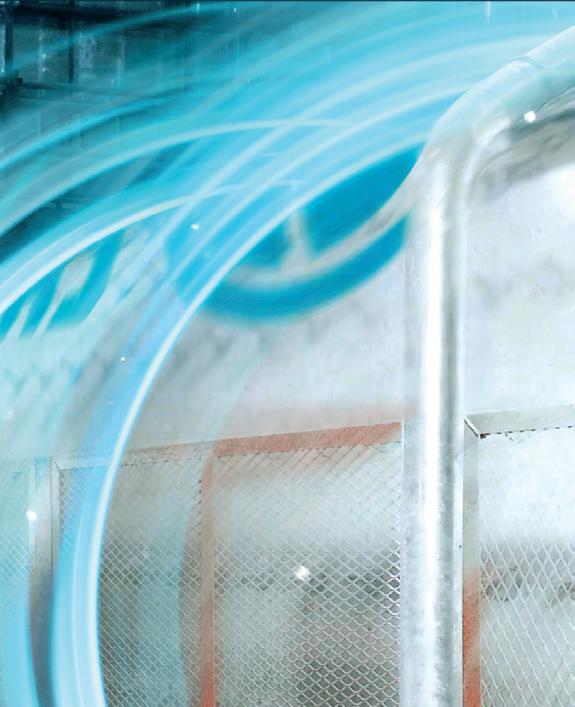
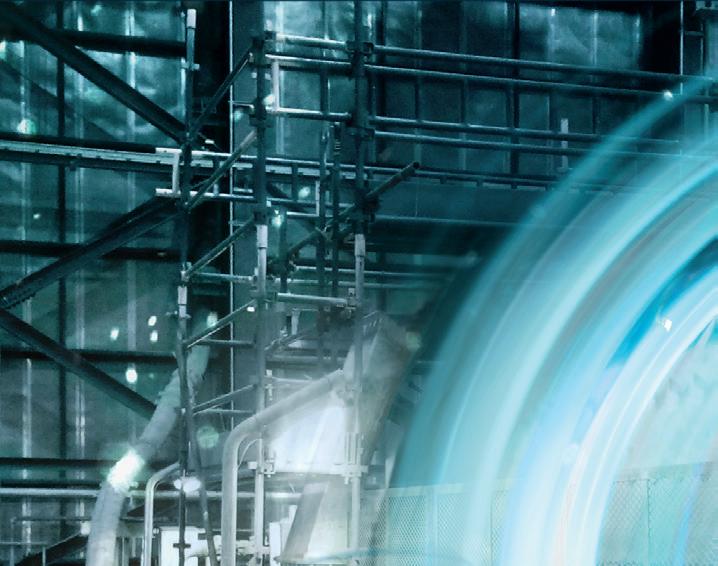

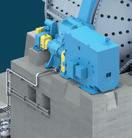

The first two phases of the group’s exploration programme have now been completed, overseen by SRK Exploration Services. Well-targeted, systematic, and dedicated field investigations and geochemical surveys have delivered positive results. Exciting developments include the discovery of new areas with detected gold, where no artisanal scale mining is known to exist. The results of the first two phases have informed a further phase of exploration across the next nine months. This programme will further expand the group’s knowledge base, and will involve drilling activity in the most promising areas, in order to further understand the lateral and depth extension of gold mineralisation. From there, assuming results continue to be as positive as they have been, progress towards the extraction phase will begin.




Too early to draw conclusions, the Seventy Ninth Group has the objective for the forthcoming year to assess the gold potential in its main exploration licence area, in order to come to a strategic decision to continue exploring for gold resources, abandoning the area if the presence of gold proves insufficient, or to developing the identified resource. In order to address the needs of local communities, the group is also evaluating options to develop small-scale gold deposits, as it has recognised the large gap between artisanal-scale gold productions and the very large industrial gold mines (e.g. such as the Siguiri mine).
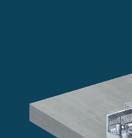

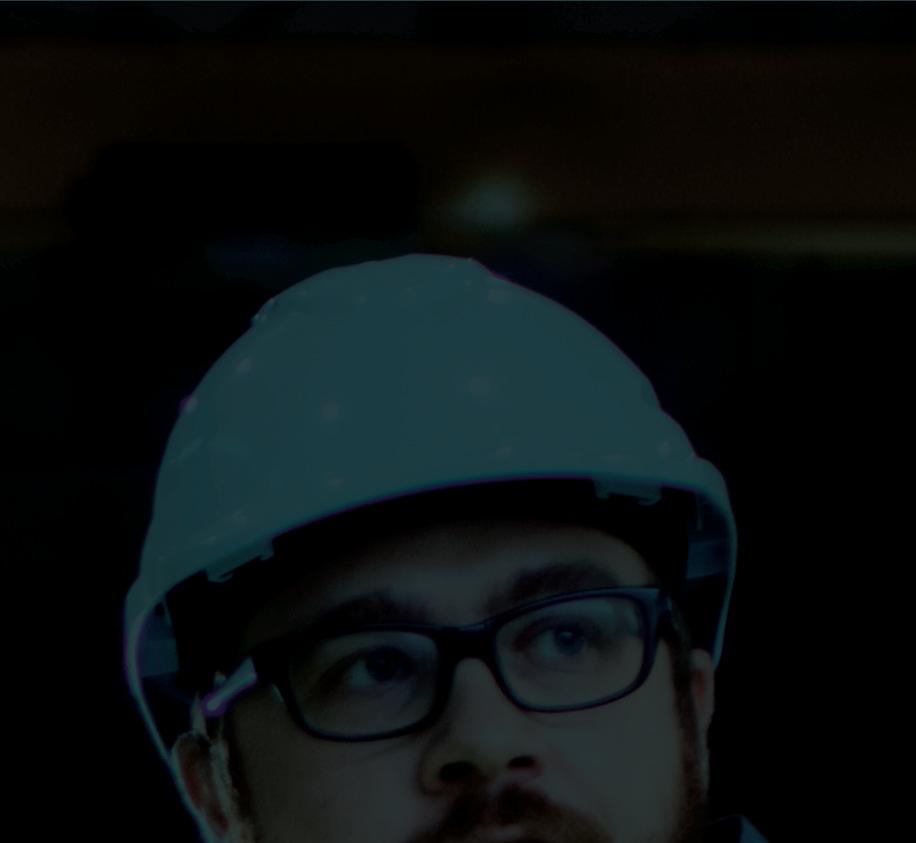








Ron Berryman, on behalf of Loadrite, Australia, evaluates the role of technology as an important ingredient in the success of the Vulcan mine, Queensland’s newest premium hard coking coal mine.

Located on the Collinsville Shelf on the central western border of Australia’s largest coal reserve in the Bowen Basin, the opencast Vulcan Mine has been developed from a greenfield project to production by Vitrinite Pty Ltd in just three years. The project boasts more than 55 km strike of confirmed surface hard coking coal, adjacent to world benchmark premium hard coking coal mines. Significant mesa-like hills, formed by highly resistant sandstones, have also provided target
coal seams throughout the centre of the tenement. The area is characterised by reasonably benign regional structures with minor local deformation, with the three target seams featuring premium hard coking coal properties with crucible swelling numbers (CSN) of 7.5 – 9, low volume volatile matter 21 – 26%, Romax of 1.30 – 1.45, and high fluidity. The mine is located near rail, water and power infrastructure, as well as general services in the nearby towns of Dysart and Moranbah.
Vitrinite has been shipping small consignments of coal to Korean and Japanese markets since the Queensland Government granted approval for a mining lease in September 2021. However, it now has a workforce of approximately 170, comprising men and women from Moranbah, complemented by fly-in/fly-out, and is producing 2 million tpy of coal since being granted a mining licence earlier this year.
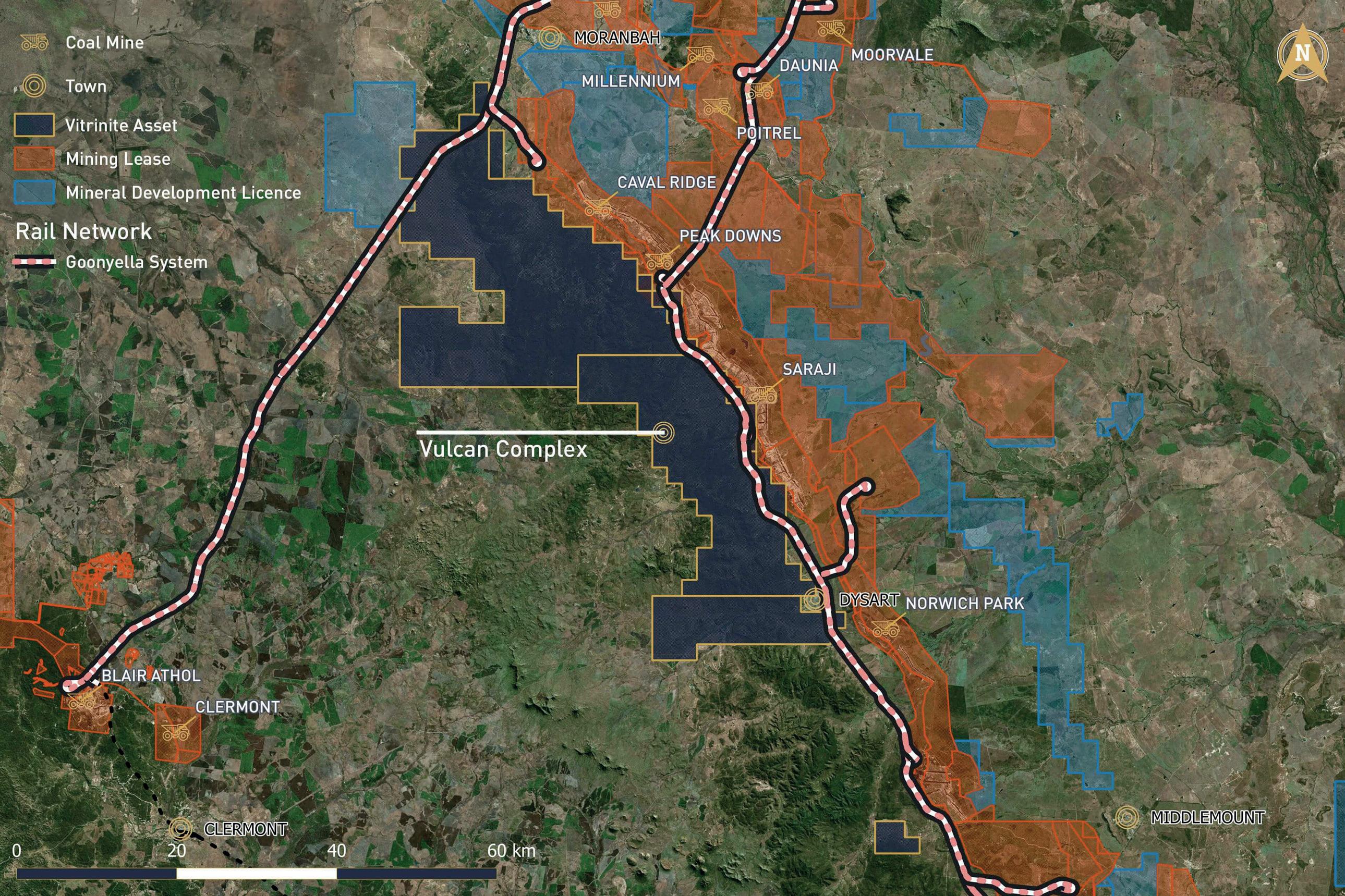
At the time the licence was granted, Queensland Resources Minister, Scott Stewart, said the AUS$160 million mine being developed by Vitrinite demonstrated the ongoing investor confidence in Queensland’s resources, infrastructure, and skilled workforce. He pointed out that Queensland’s resources industry has been integral to the state’s economic recovery, operating throughout the pandemic and now supporting a sector record 85 000 jobs.
Mick Callan, Vitrinite Chief Operating Officer, who has worked in the coal industry for 21 years, described the operations at Vulcan as leaner than many other companies in the Bowen Basin. Callan pointed out that the mine was in the lower cost bracket of mining companies operating in the Basin because the company is a lot leaner than the bigger coal mines for a number of reasons. For example, the company does not wash its own coal, but pays nearby under-utilised coal handling and preparation plants to get the run of mine coal toll washed, preparing it for rail to the Hay Point Services coal terminal. The more waste material that can be removed from coal and the lower its total ash content, the greater its market value and the lower its transportation costs.
Vitrinite was looking towards state-of-the-art technology in order to maintain the delivery of premium grade coal economically and efficiently to Southeast Asian markets.
According to Callan, the company has taken a major step towards achieving industry-best production targets by contracting SmartTech Australia to provide technology services for the Vulcan mine. SmartTech handles all the instrumentation on all of the Vulcan mine’s run-of-mine equipment. The ore stockpiled before the screen is sorted and the blend stockpiled again, using equipment with SmartTech supplied Loadrite equipment installed on them.
SmartTech’s Loadrite weighing system has been installed on the mine’s wheel loaders, enabling the company to rely on tonnages that are being reported by Loadrite on the Komatsu 600 and 800 wheel loaders, which then transfer the coal from the conveyers to road trains to haul to coal wash facilities. The accuracy of the tonnages in the road trains is important in giving controllers the information needed to invoice customers. The system involves the use of cameras in the trucks, however the fact the Loadrite equipment generates data automatically and provides accurate information is important to enable the company to reconcile data; helping to maintain control of the movement of material around the site safely and efficiently, and allowing the company to run the business effectively, accurately, and profitably.
Dan Barry, General Manager of SmartTech, said his company was involved in providing Vitrinite with a range of material tracking and safety instrumentation to help deliver a more effective and economical operation. He said the need to track mass at the mine site was predominantly accomplished through Loadrite onboard weighing solutions. The data received from the onboard scale can also indicate that more people are required on a shift, or that there was a need to expand the operation by the addition of more equipment, in order to achieve production targets.
The Loadrite data has become a valuable tool at the Vulcan mine, providing a cost-effective way to obtain a large quantity of vital information. SmartTech technology also supplies information to help with production and safety management, ensuring machines are not overloaded or carrying material outside manufacturer parameters.
Loadrite is a certified legal for trade system which can eliminate the expense of a scale house and operator; provide faster truck turn-around times; and traceable data on loading activity. At Vulcan, Loadrite is installed on the ore truck wheel loader, which can then calibrate
and certify the loads from conveyer to the next destination. In fact, it covers multiple distribution movements by each vehicle. By using Loadrite, the Vulcan mine can follow the ore through a number of transfers through Loadrite InsightHQ, a website portal which can provide real-time visibility of load/haul, processing, and products from haul trucks, conveyors, and loaders.
The Loadrite InsightHQ portal produces summary and detailed reports, which deliver information to enable Vulcan to produce accurate customer billing, reducing errors and providing access to live reports quickly and accurately, with totals for each customer, product, and machine in use at the mine. Callan said the Loadrite system data, the fact it was generated automatically and that the reports provided information vital to the economics of coal mining, enabled the company to have immediate access to costs to create accurate invoicing for customers. He added that without it, the company would have a fair degree of difficulty reconciling tonnages, as the data helped the company run the business effectively and automatically.

Vitrinite has taken another major step towards becoming a state-of-the-art coal producer, announcing that it is the first Australian miner to purchase a GHWM300M highwall miner from Gainwell Engineering Global Pte Ltd. These units are manufactured under licence from Caterpillar,
from technology developed and refined in the US mining industry, and have been proven to be safe, highly productive, have a low environmental impact, and provide access to coal that would otherwise be stranded due to economic constraints. Vitrinite conducted extensive research to determine the best method to maximise the value of its extensive resources at Vulcan.
Christopher McMahon, independent mining and metals professional, Coal Quality Consultant MCQR, had the following comments regarding the exploration of the Vulcan project: “The initial five bore cores from Vitrinite’s Vulcan deposit in the world renown coking coal German Creek Seam Sequences, for raw and ‘quick coke’ test data, indicate coal quality characteristics consistent with premium hard coking coal. That is, comparable preliminary outcomes for chief coking coal properties of volatile matter (premium low volume), crucible swelling number (CSN), and Gieseler fluidity for likely product ash outcomes. Coking coal character, as described previously within the German Creek Seam sequence, is usually only observed in operating mines and major mining corporations associated resources and deposits, and is exceedingly rarely, if ever, noted in undeveloped deposits.”
For Vitrinite, the adoption of technology is key to business success, allowing the company to continue to perform well beyond its relative size, especially at the Vulcan mine.









Regardless of your objectives or the challenges with your application, Powertrain Solutions can help you achieve your unique goals. No matter what your application looks like, it relies on many components, all working together. But not all components are made to work together reliably and efficiently. Powertrain Solutions has the insight, experience and expertise to engineer your collection of components into a fully optimized system — giving you solutions that boost efficiency, improve reliability and performance, lower costs and simplify ordering and logistics.



